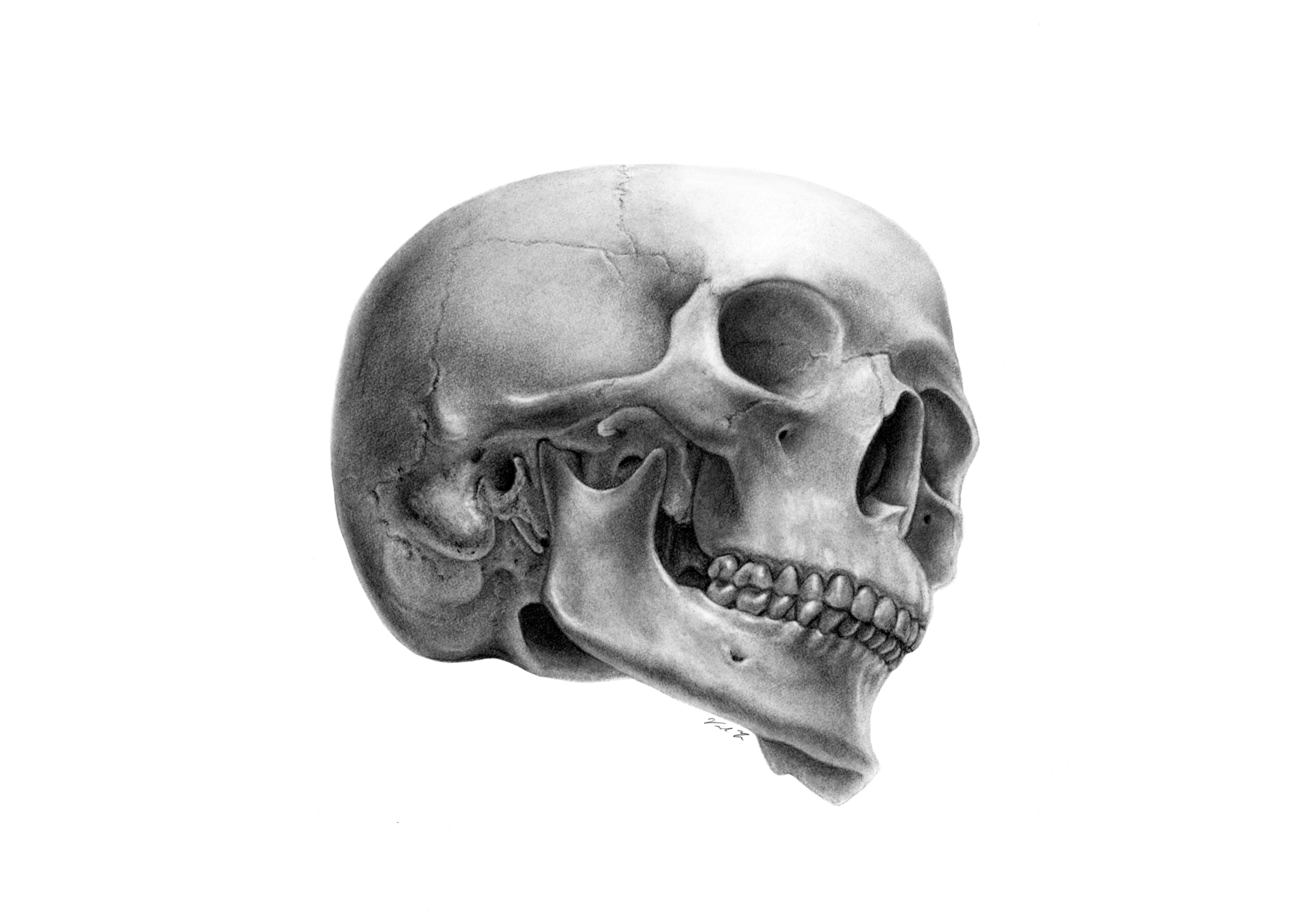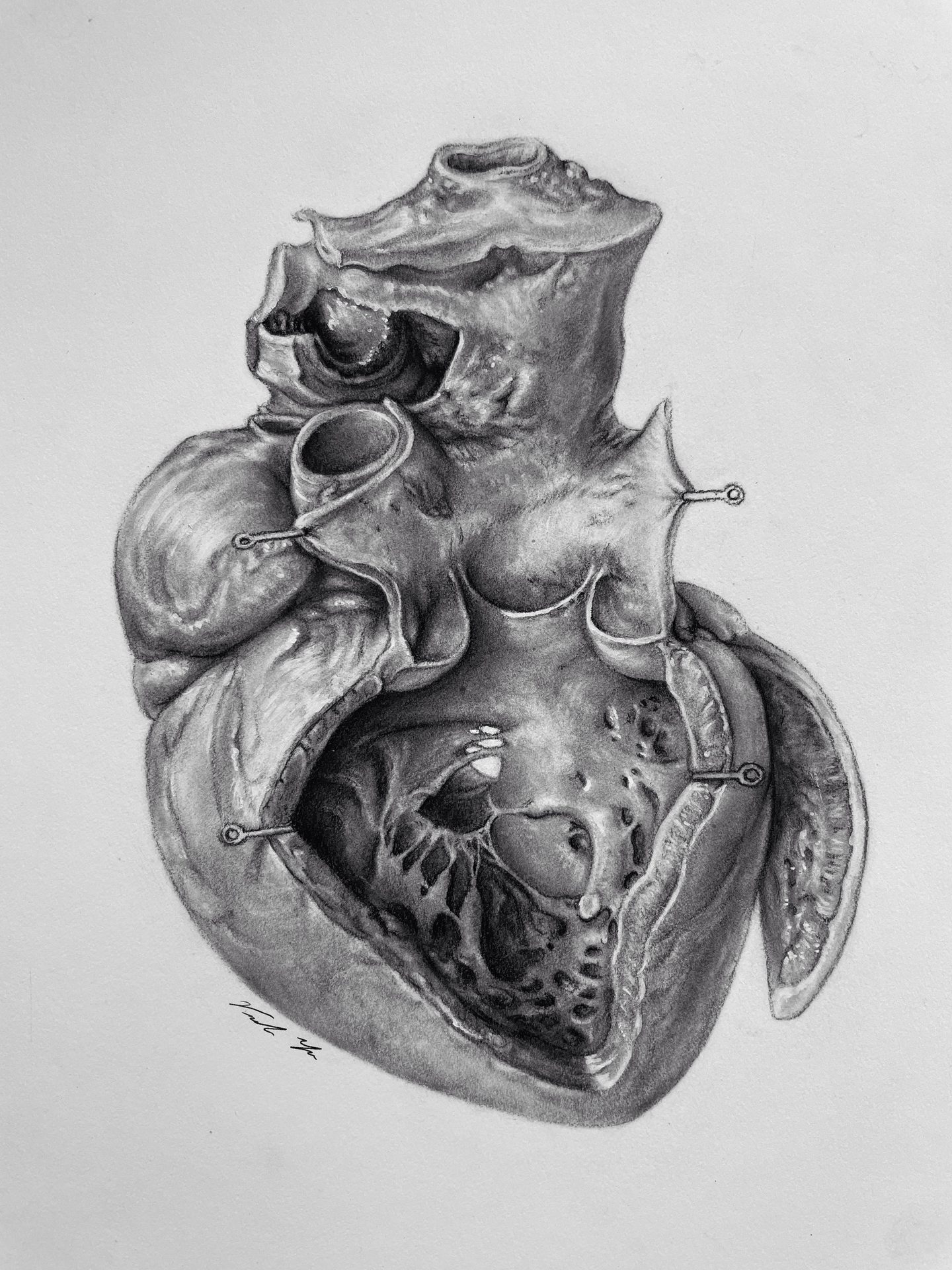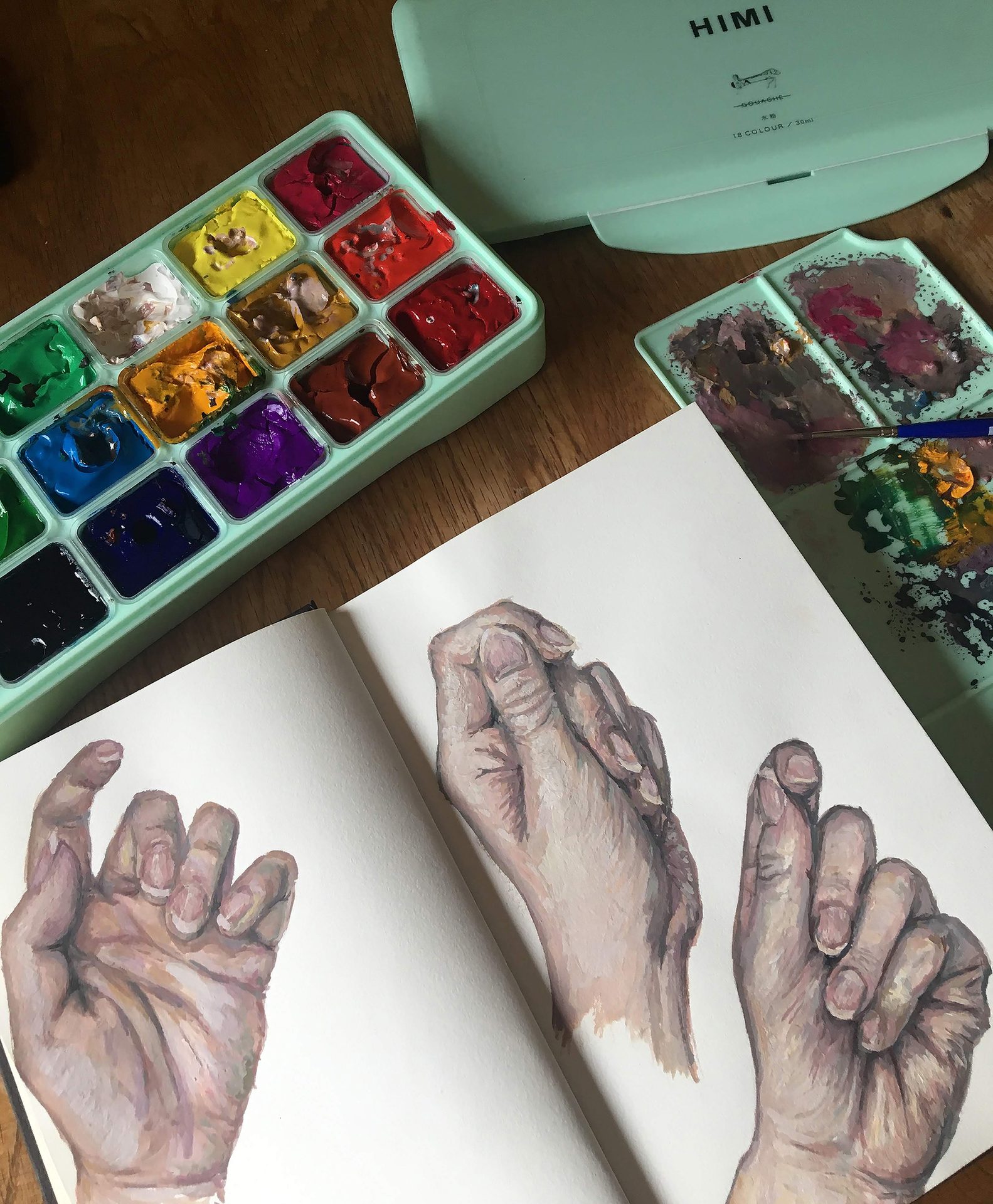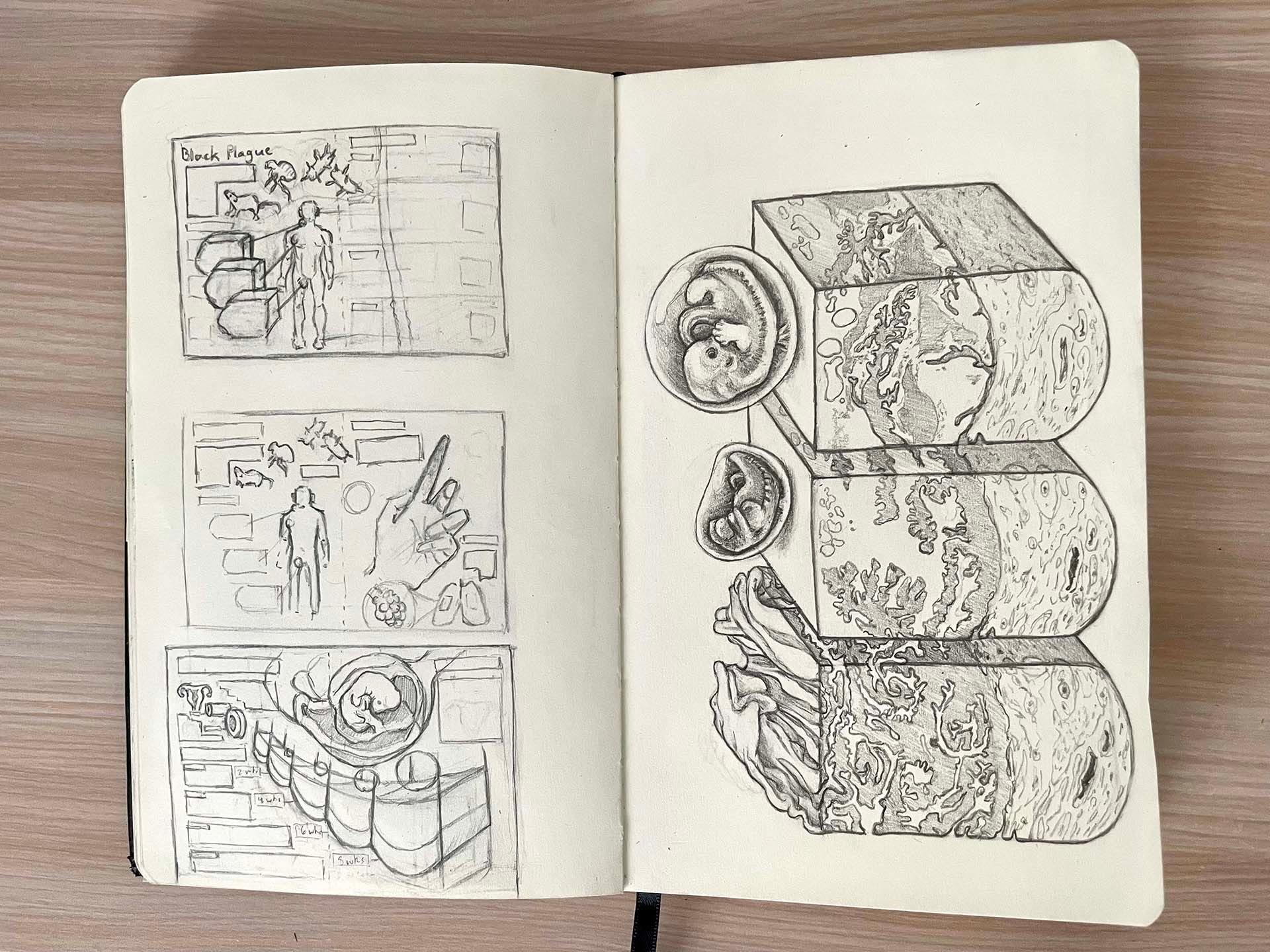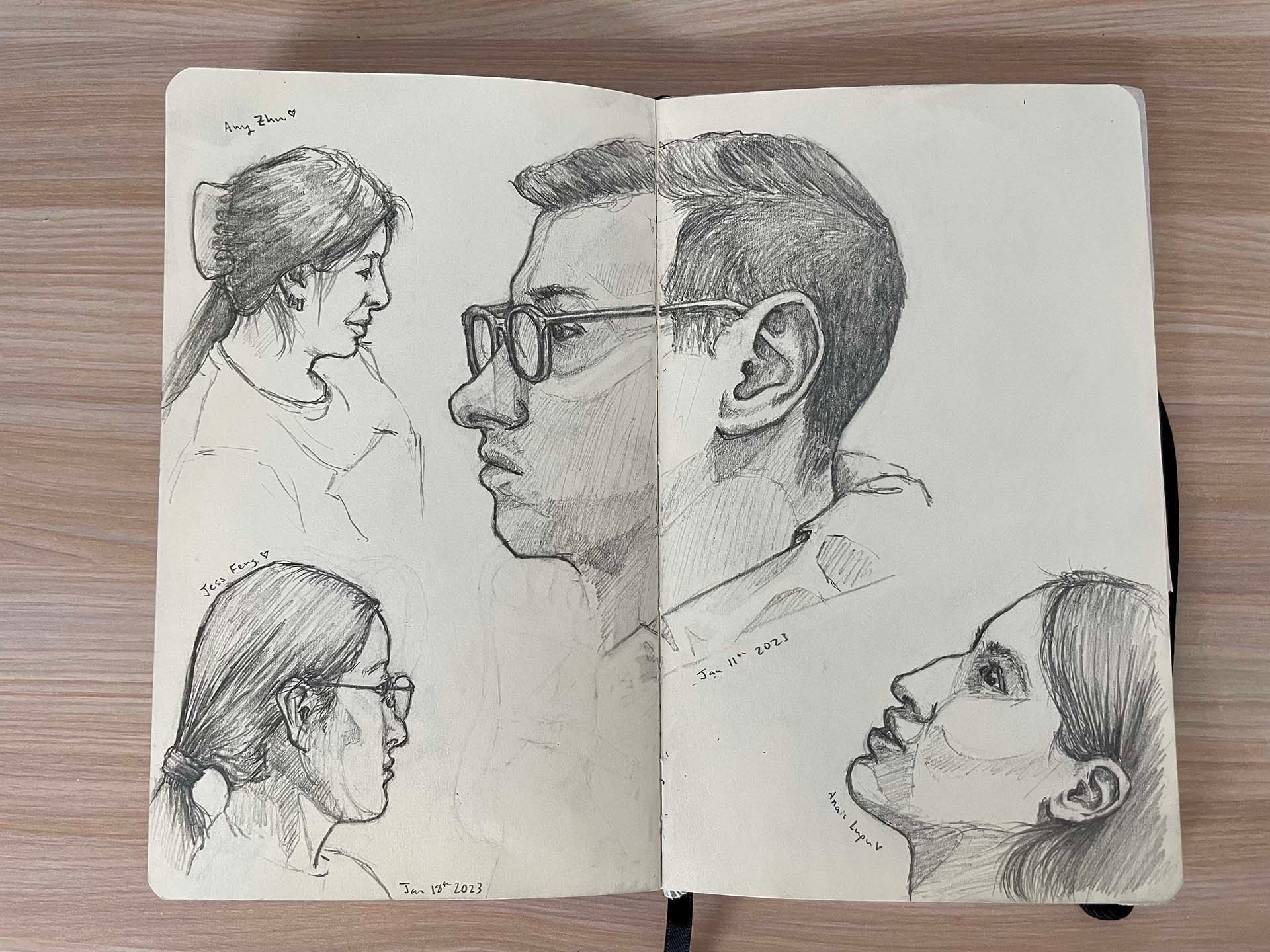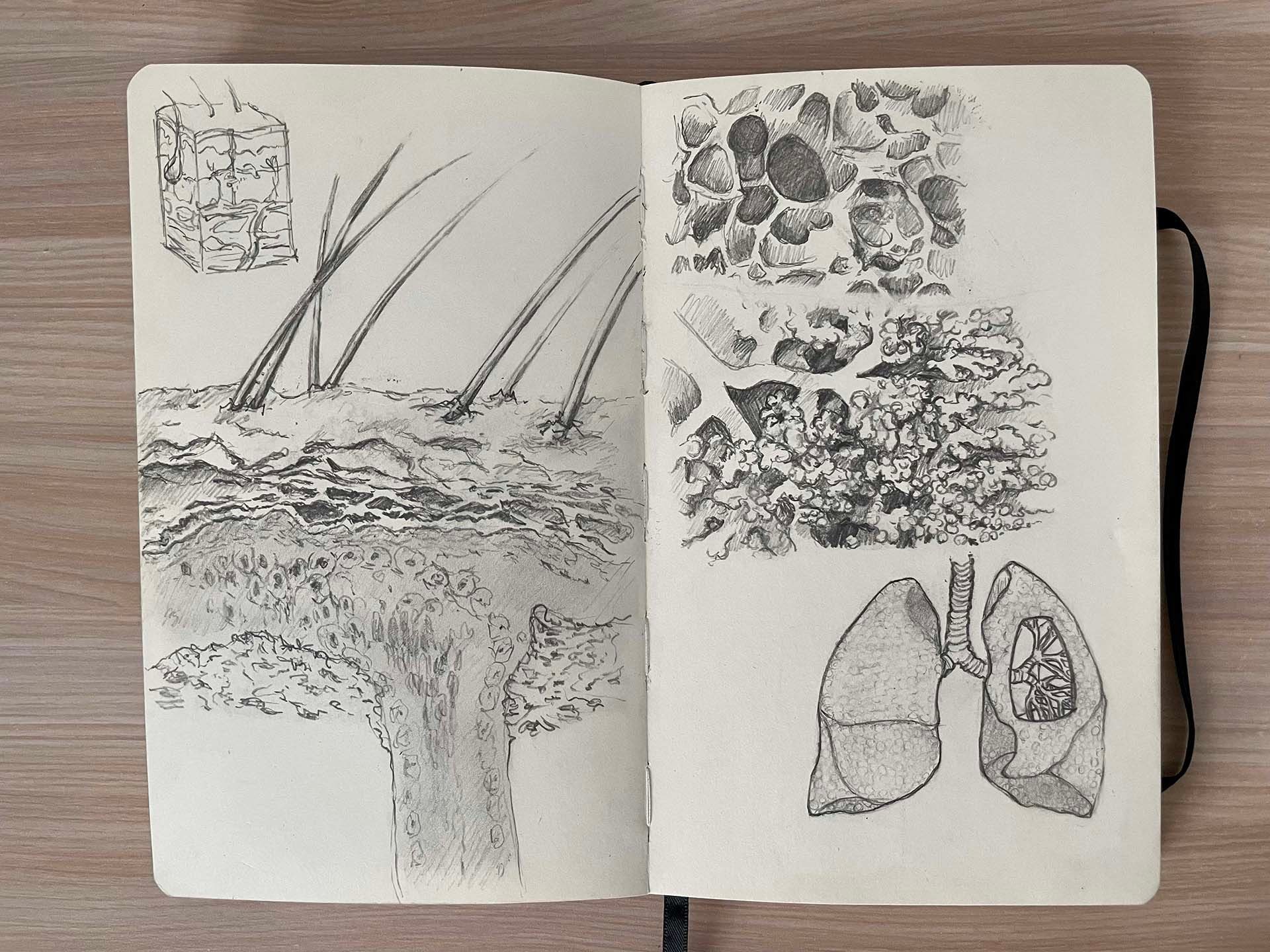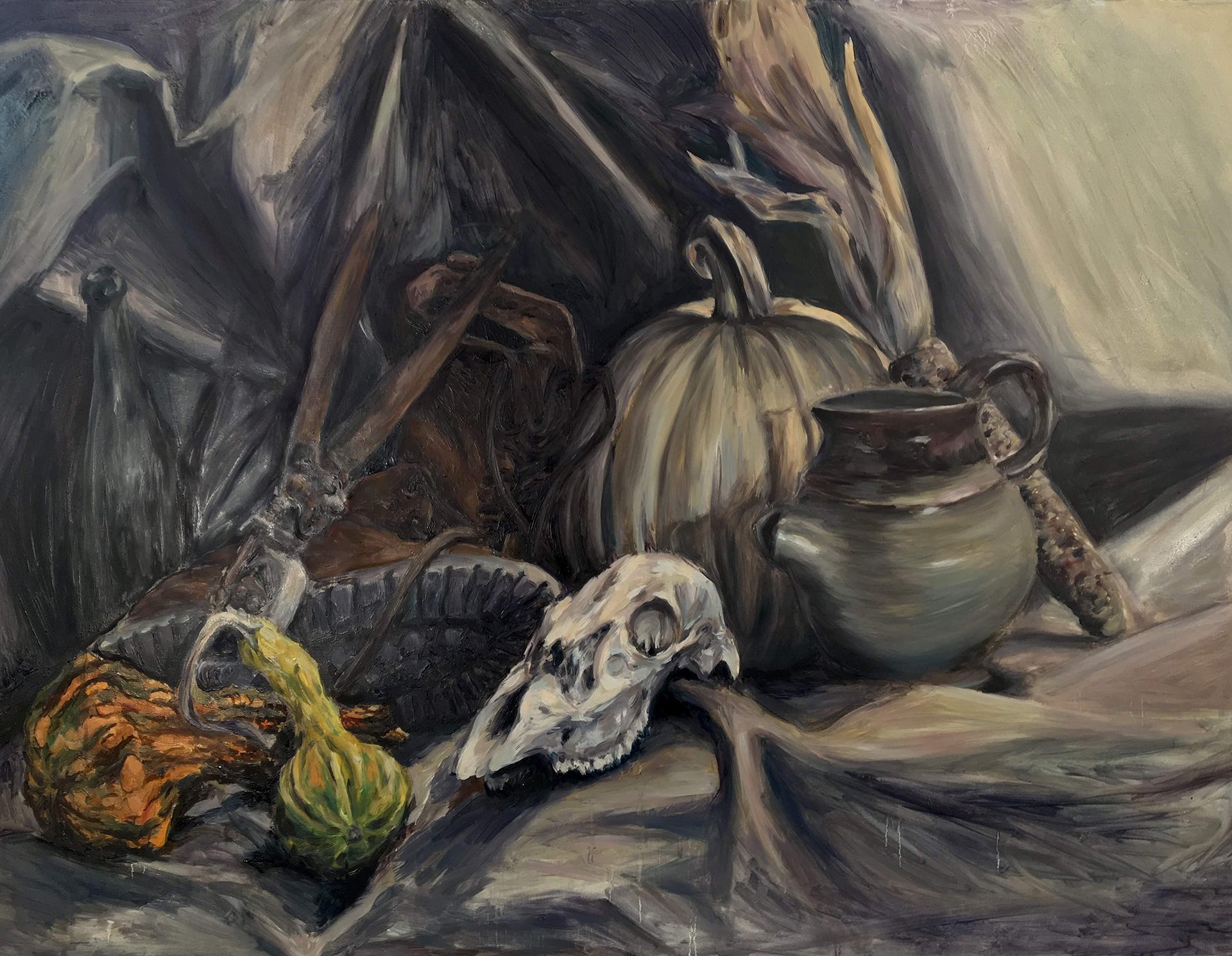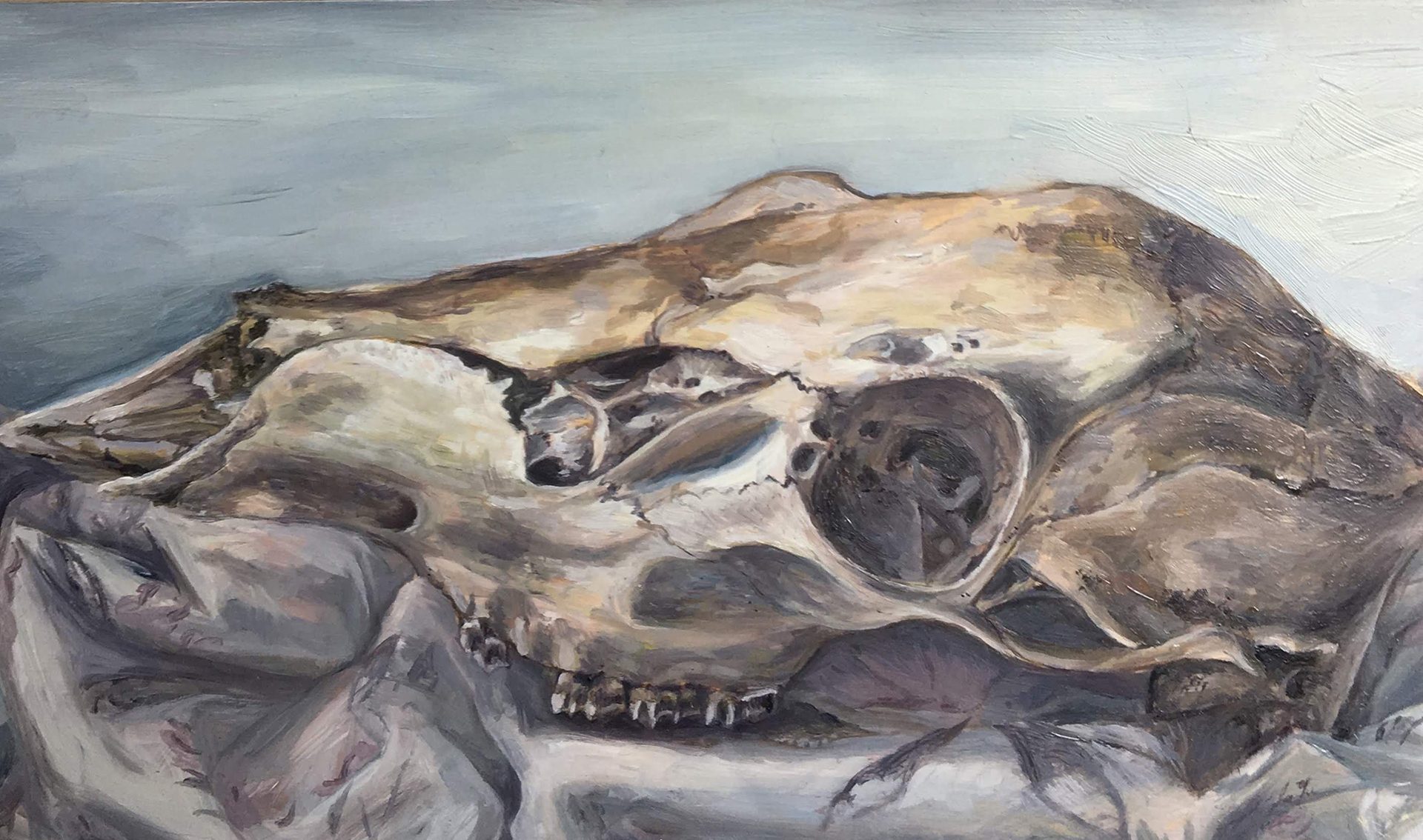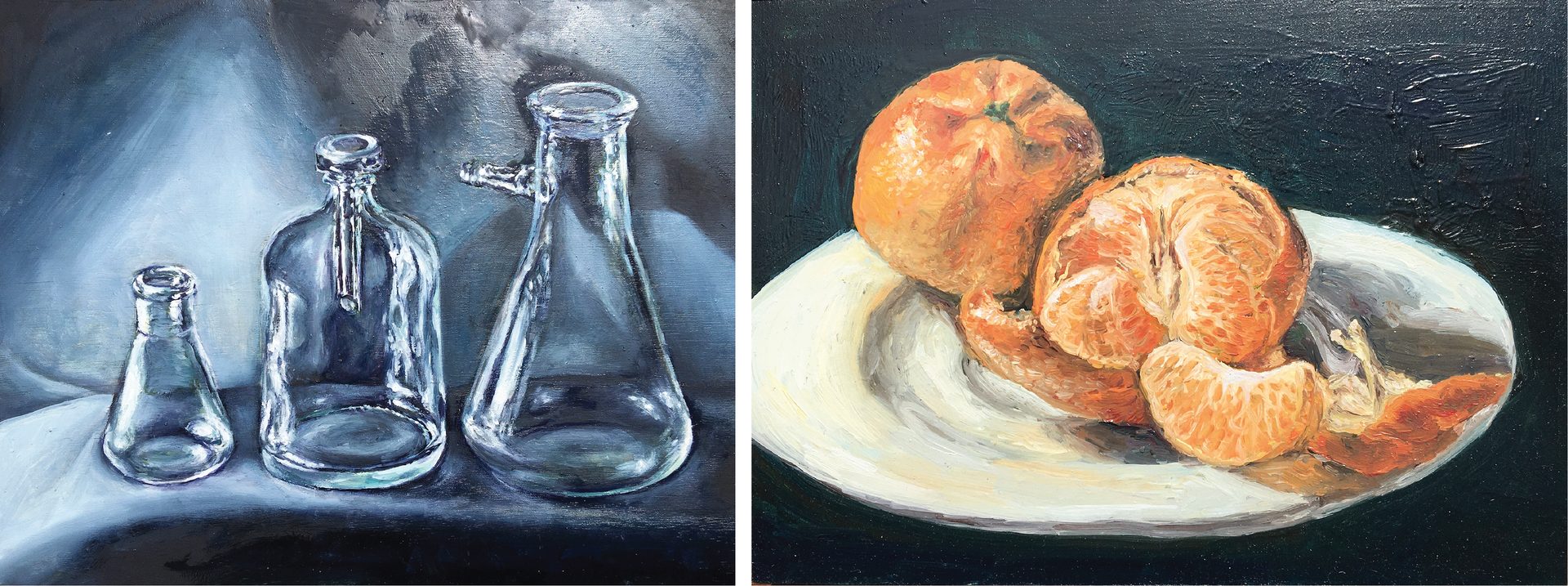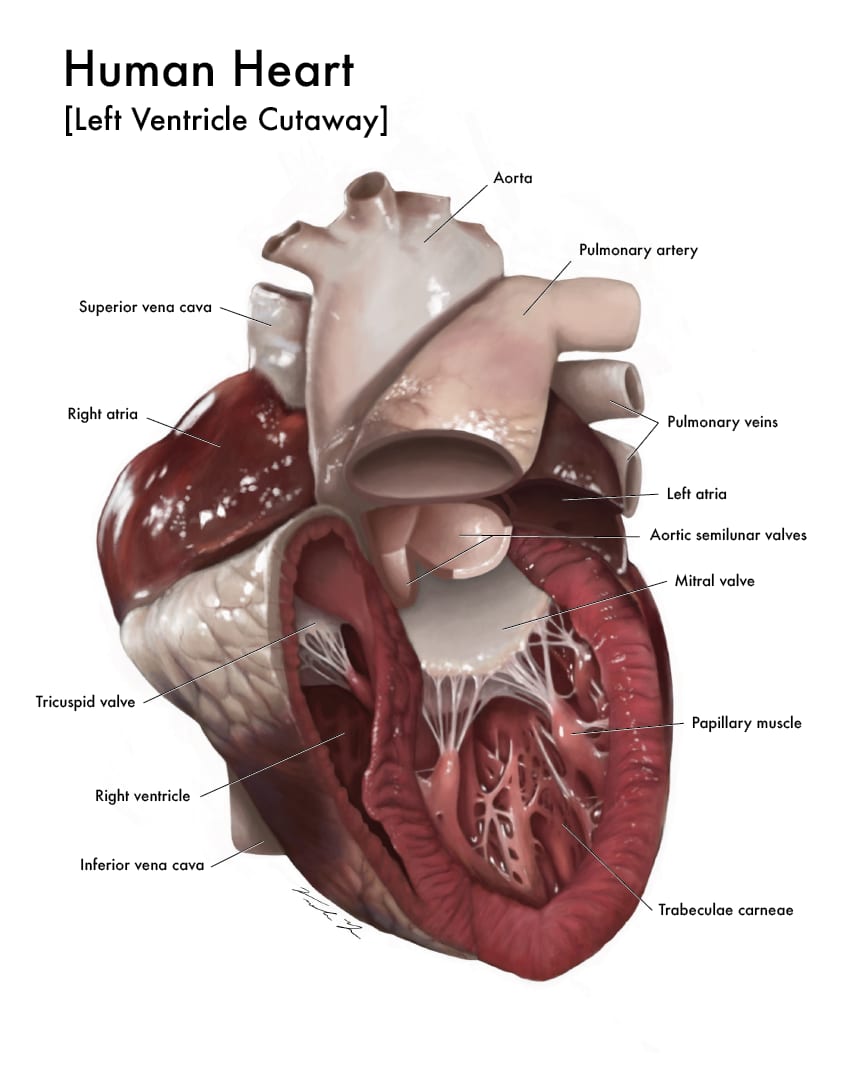
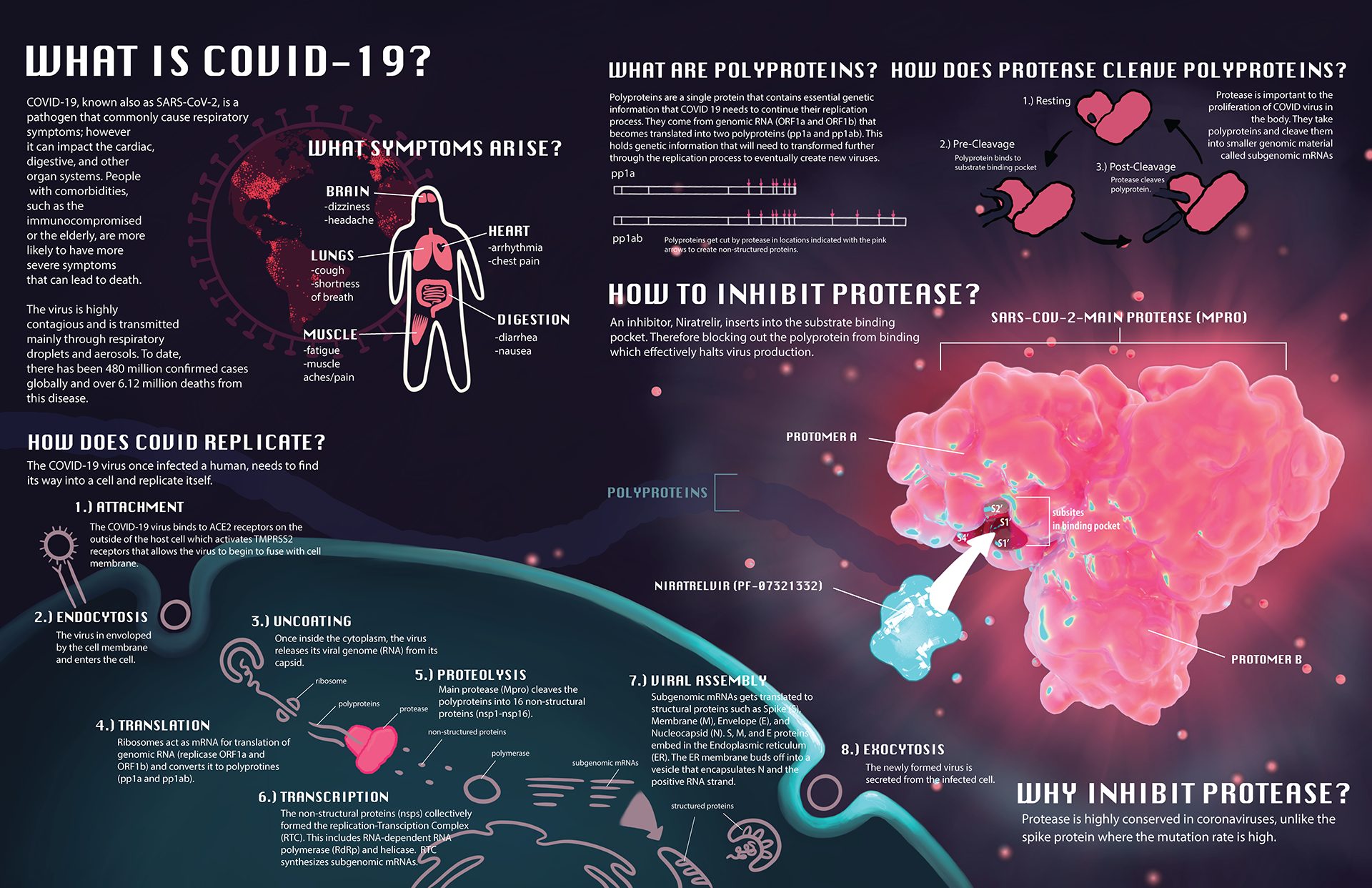

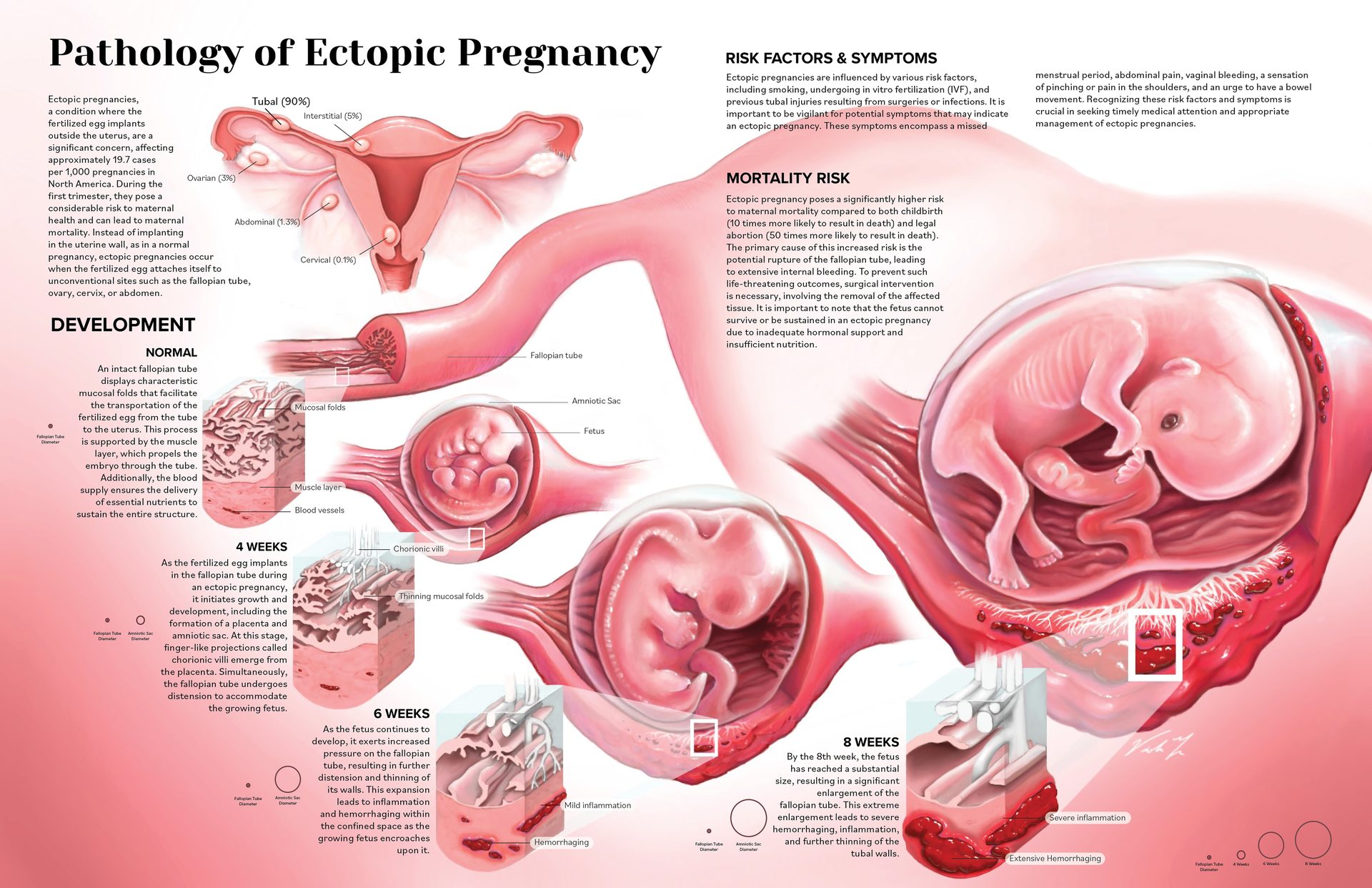
THE ART
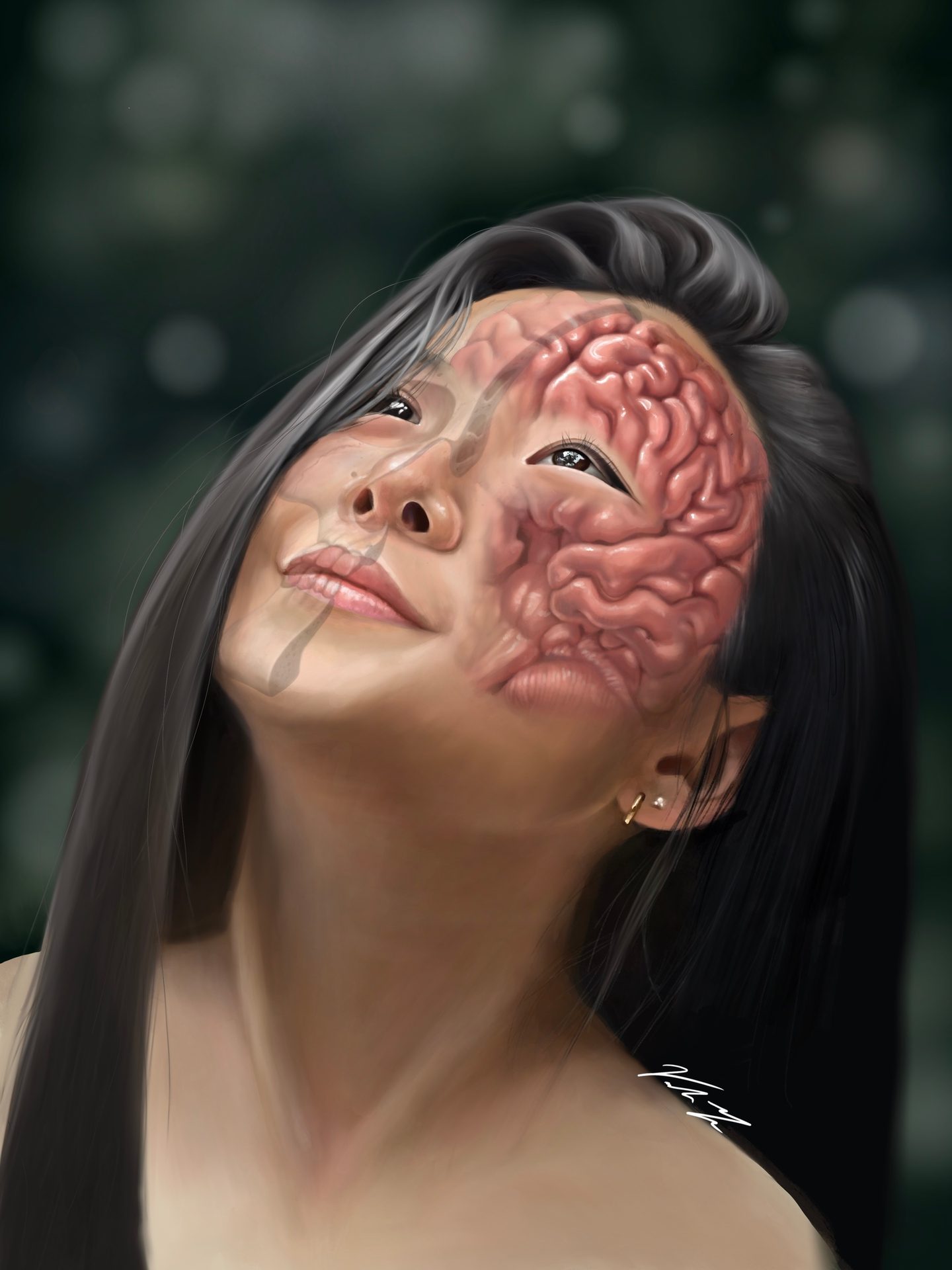

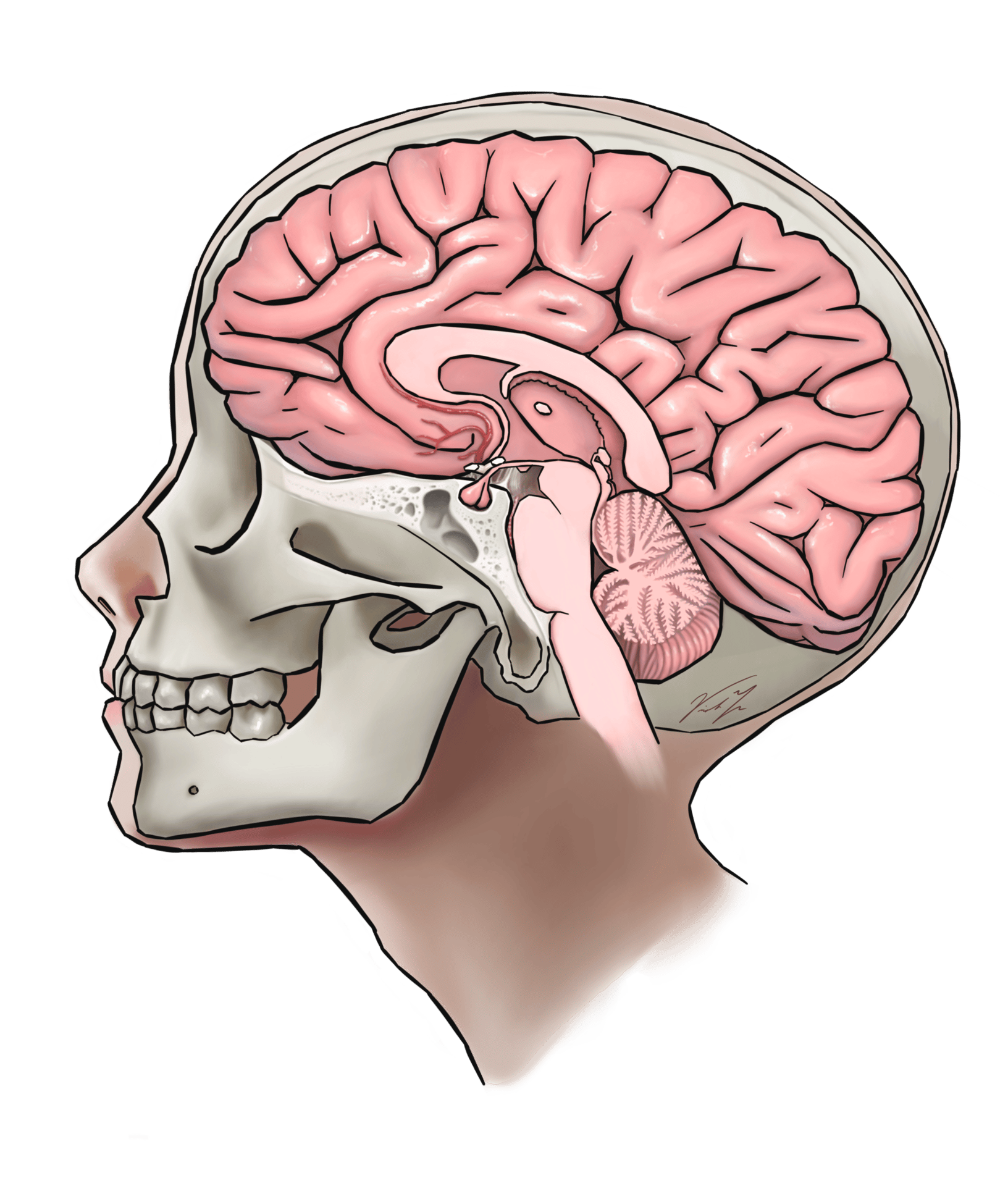
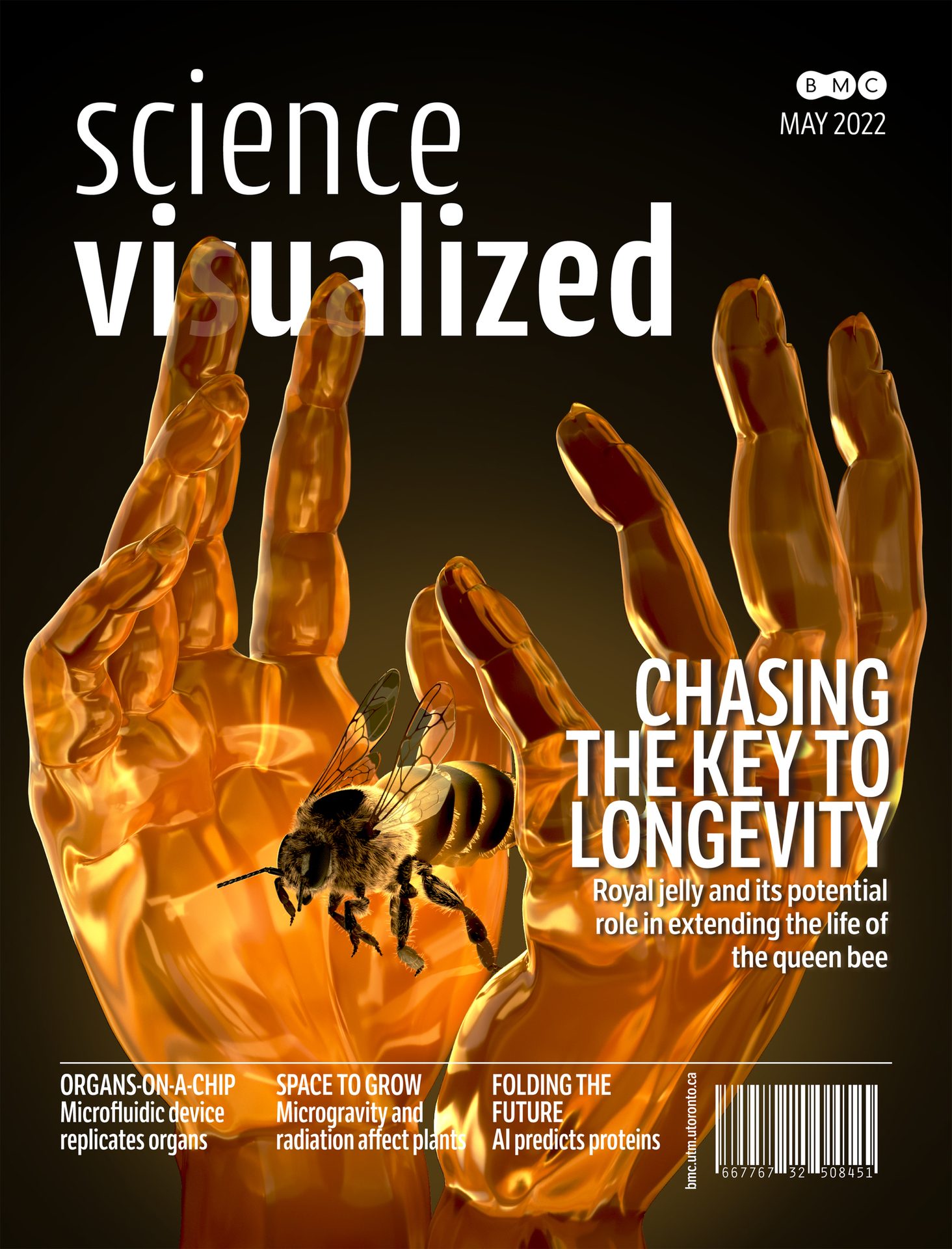
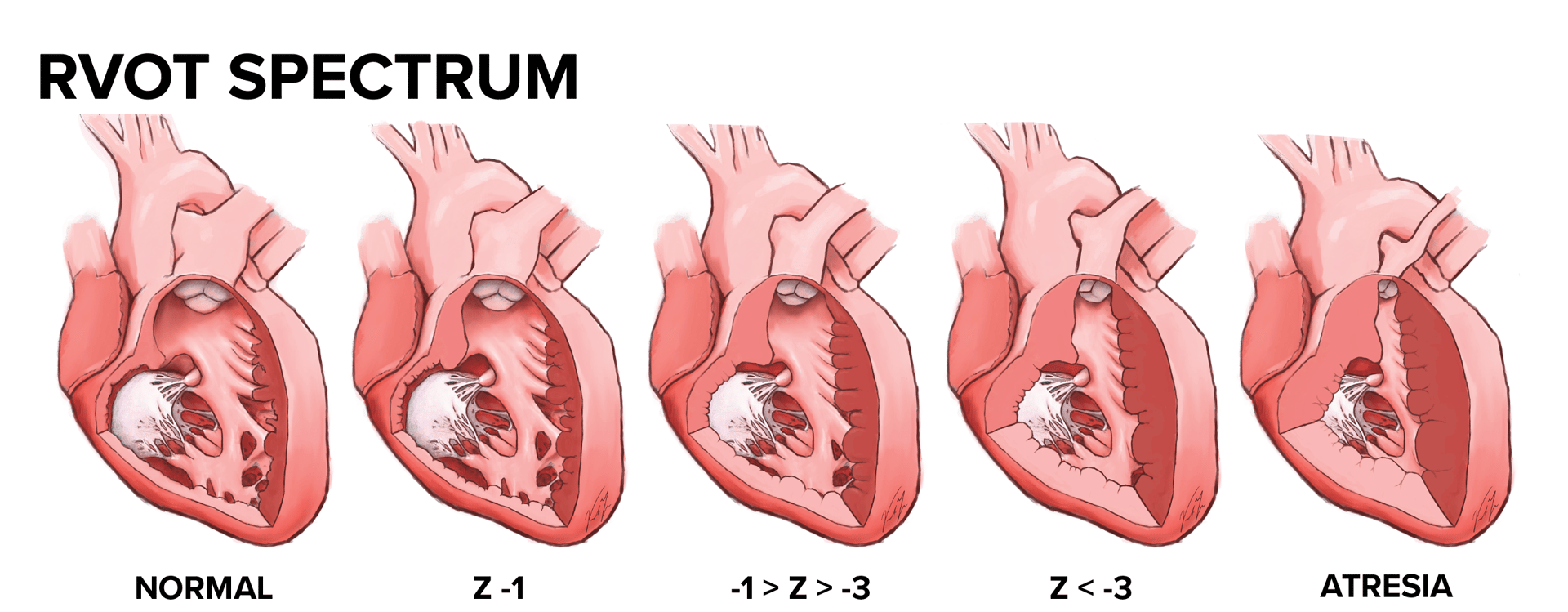
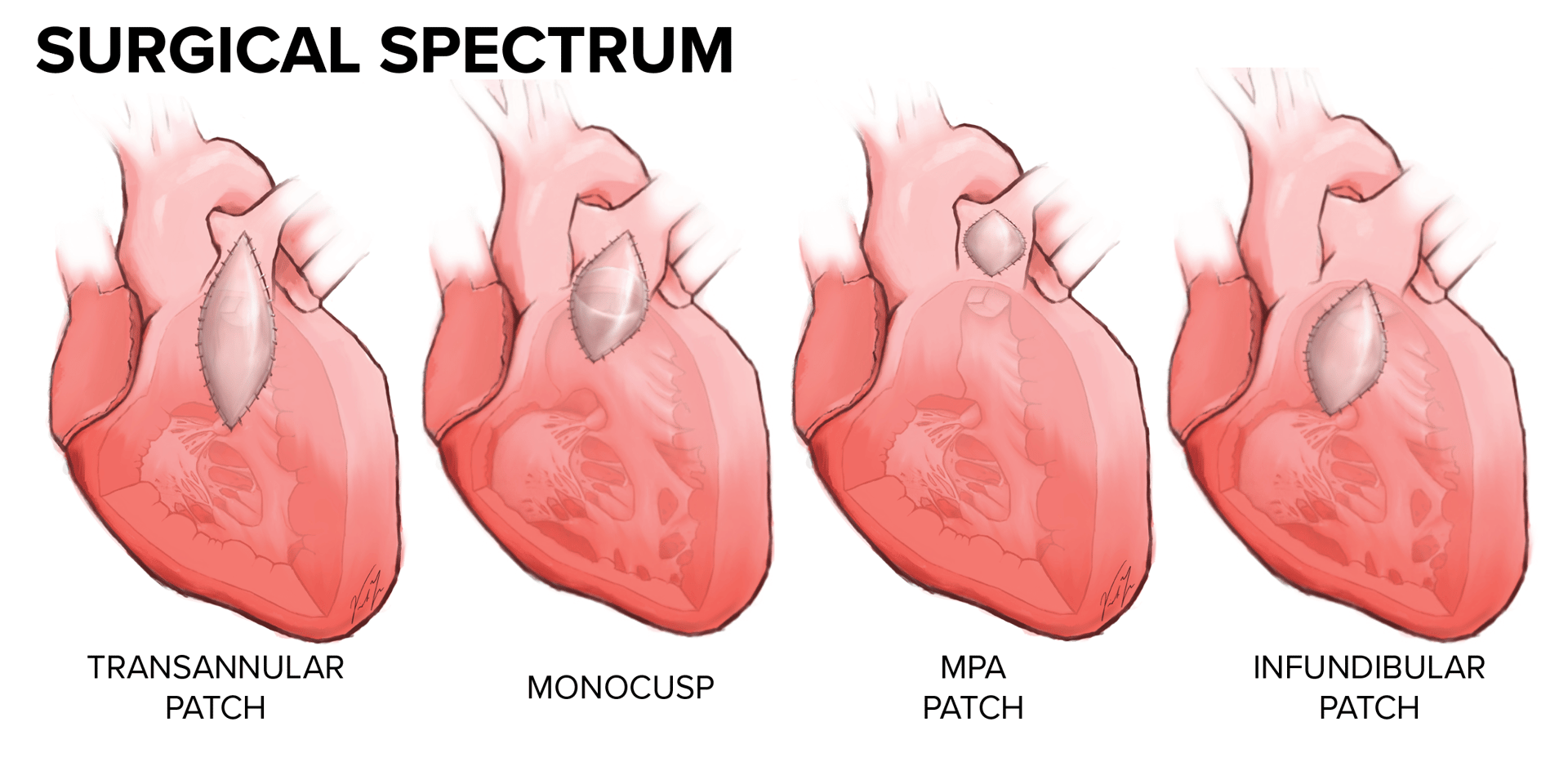

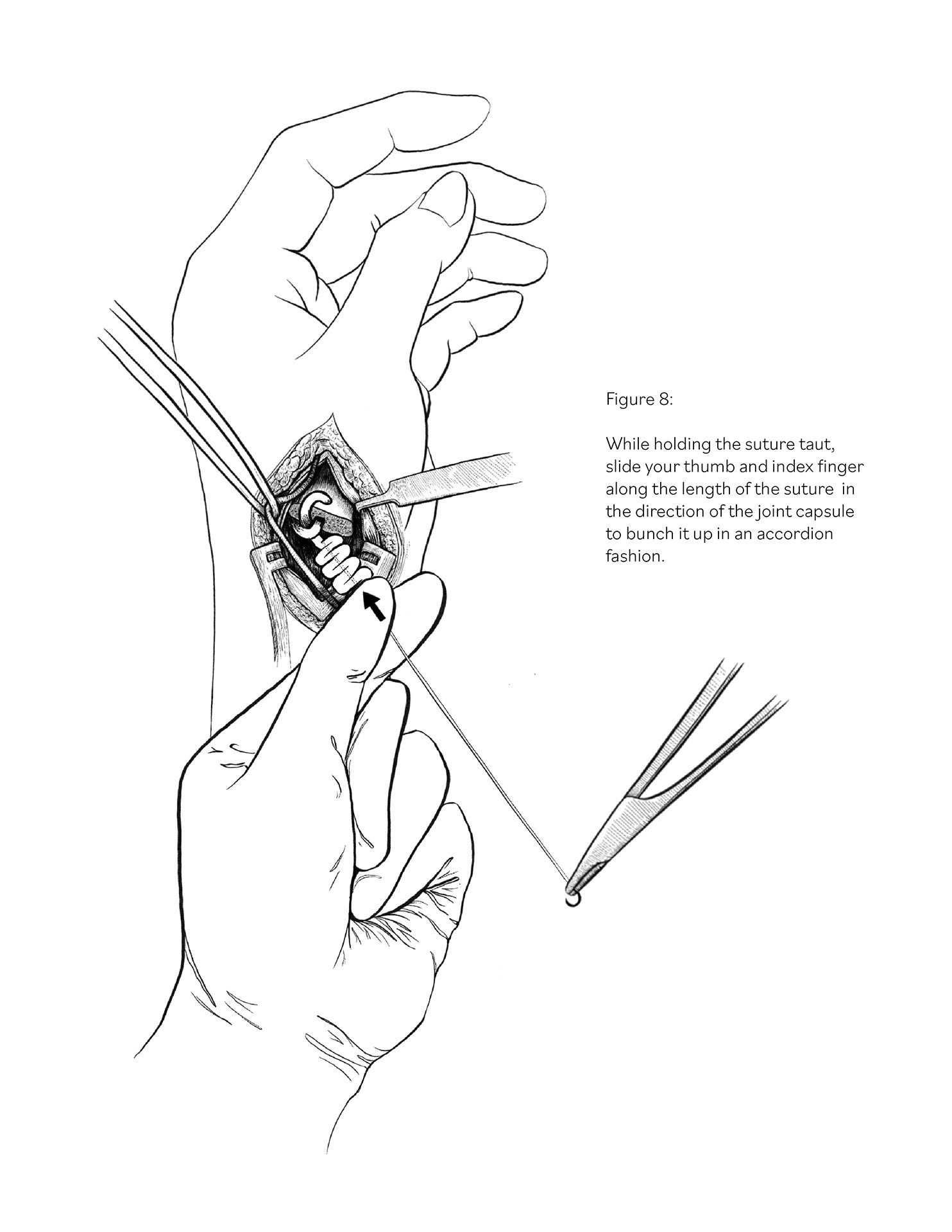
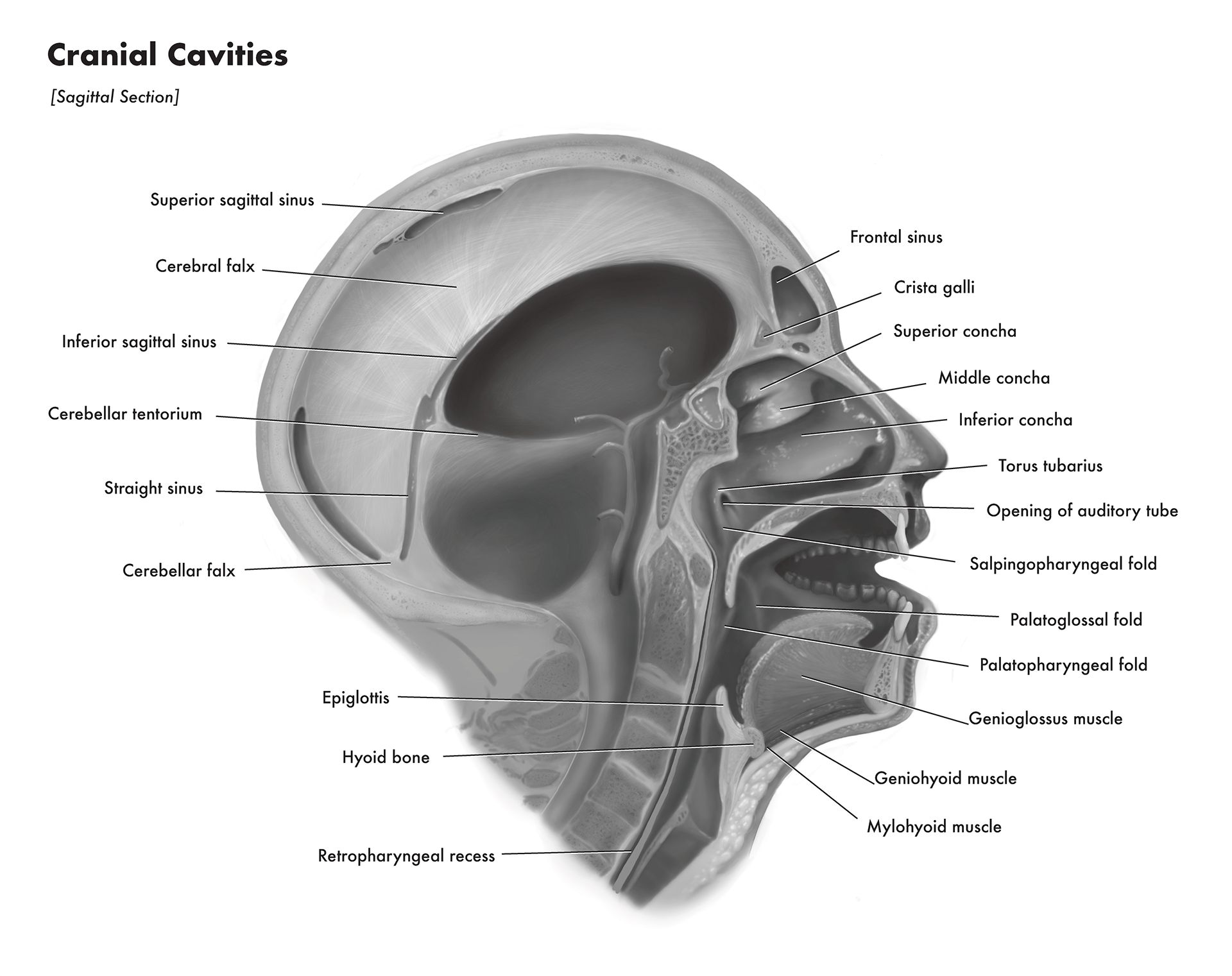
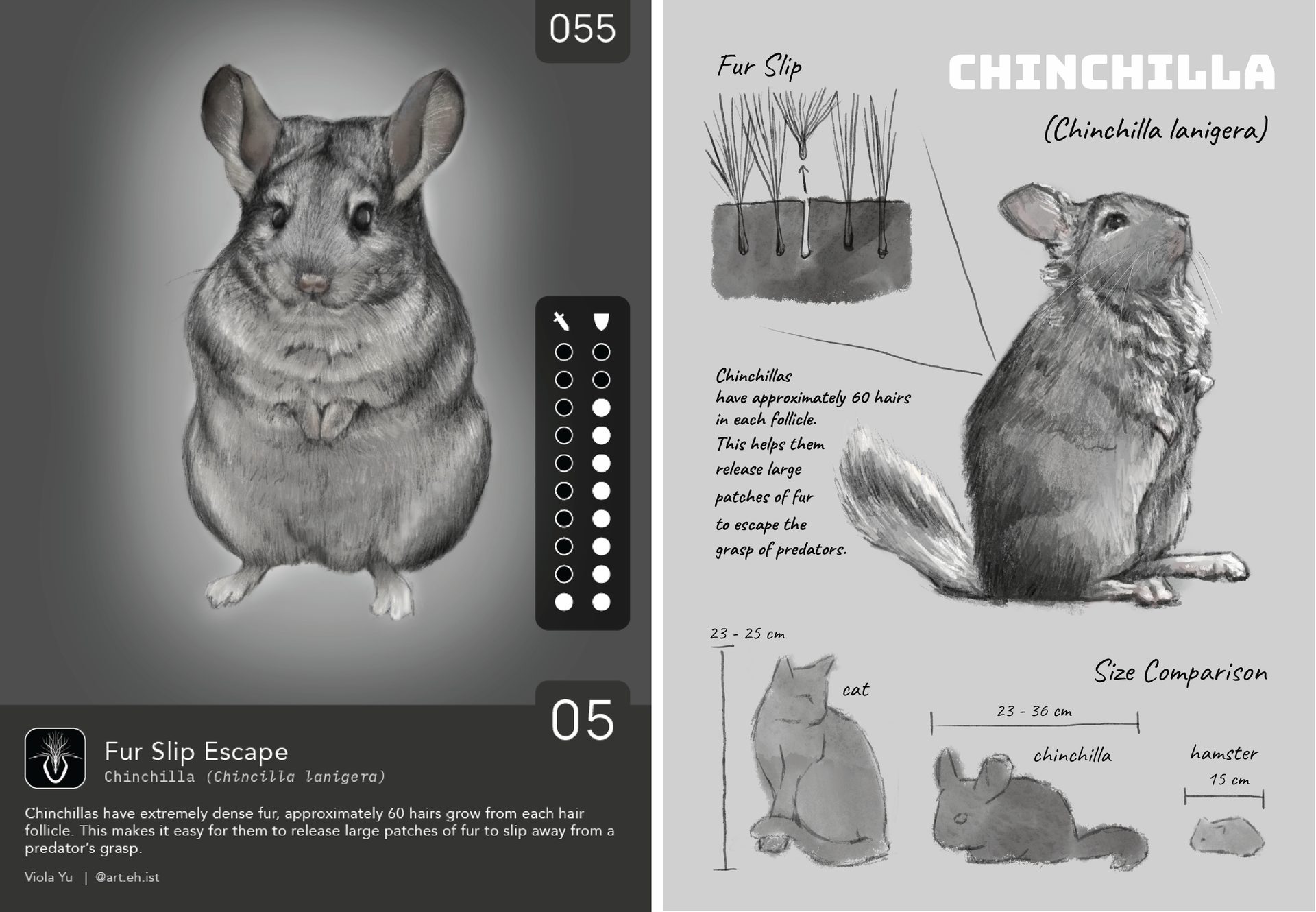

Neuroanatomy Portrait | Digital Painting | Procreate | Maya
Cerebral Arteries | Digital Painting | Procreate | Maya
THE ART

Neuroanatomy Portrait | Digital Painting | Procreate | Maya
DIGITAL ILLUSTRATIONS

Cerebral Arteries | Digital Painting | Procreate | Maya

Pathology of Ectopic Pregnancy | Digital Painting | Procreate



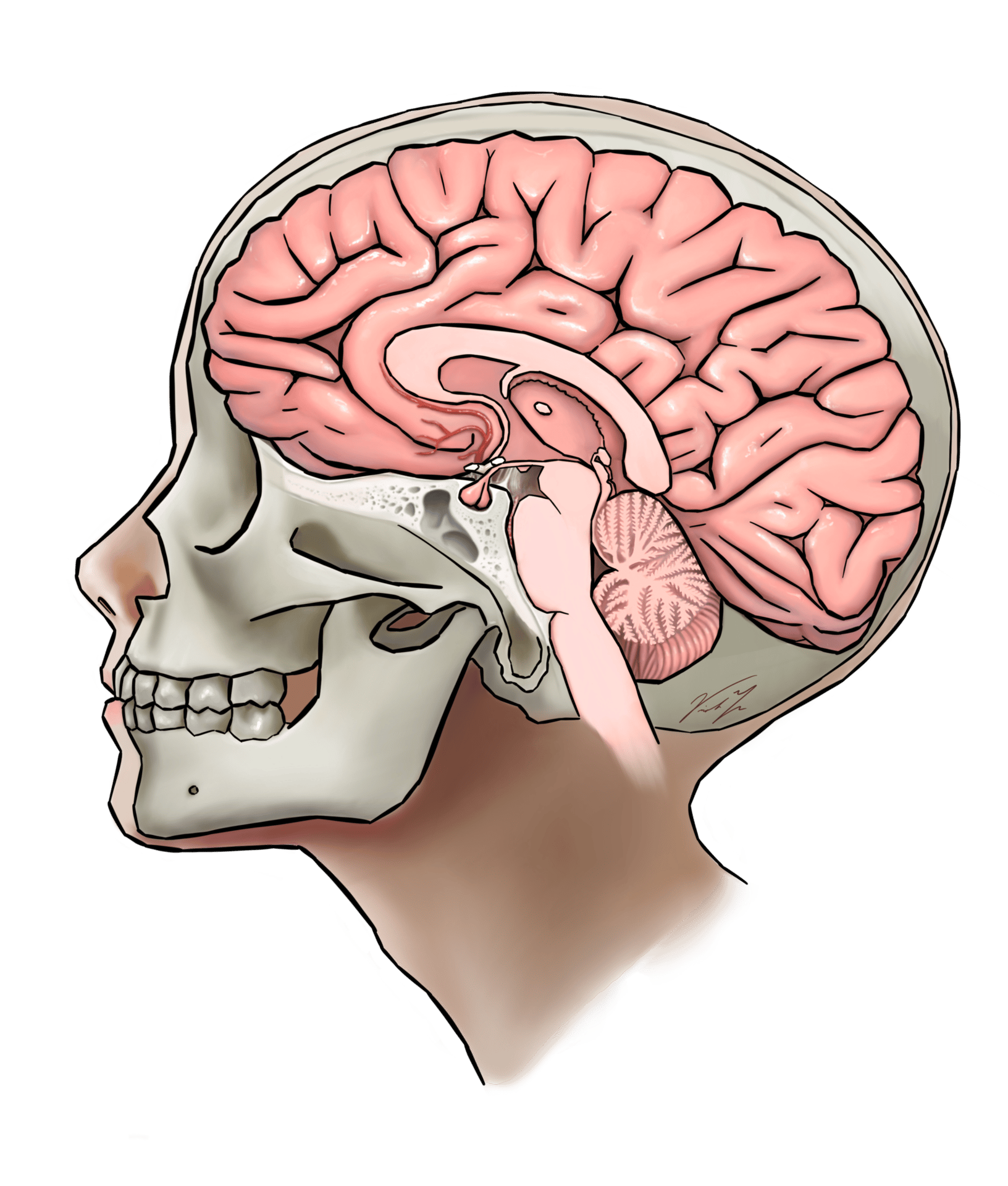
Left Ventricle of the Heart | Digital Painting | Procreate | Maya
Sagittal Cut of the Brain | Digital Painting | Procreate
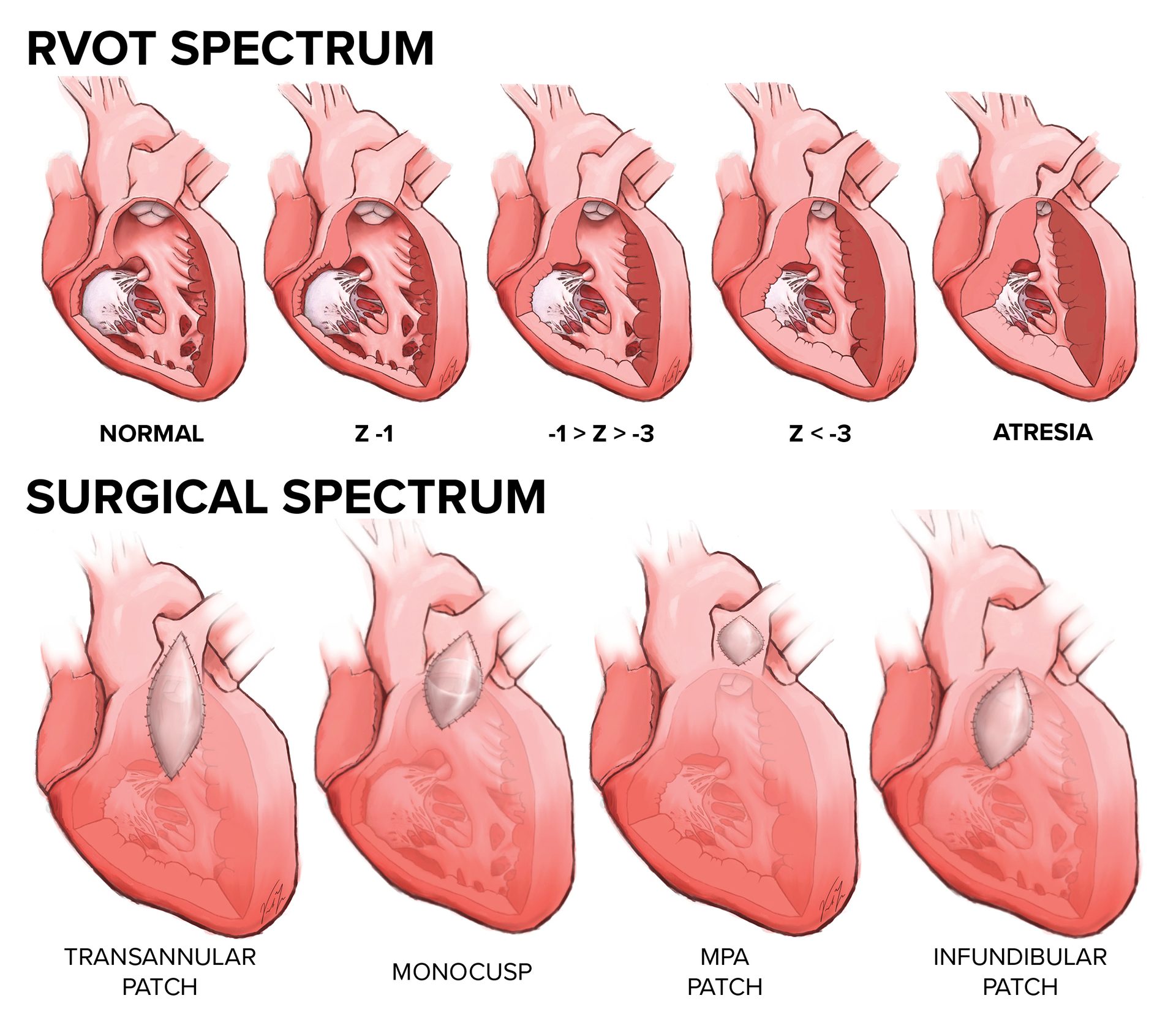
BioSci Card: Chinchilla | Digital Painting | Procreate
Cranial Cavities | Digital Painting | Procreate
Tetralogy of Fallot Spectrum and Surgical Repairs | Digital Painting | Procreate
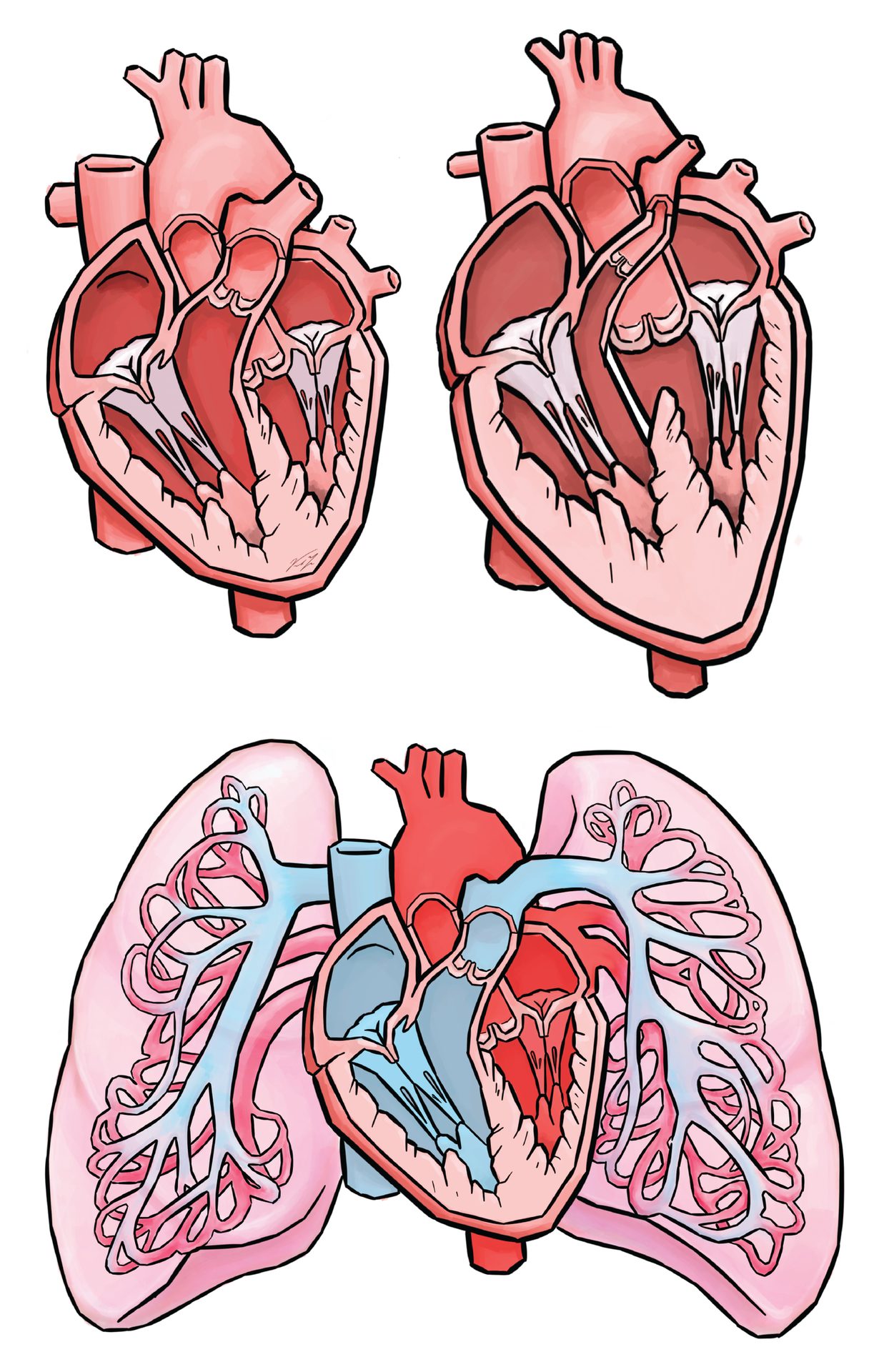
MRP Heart Illustrations | Digital Painting | Procreate


Neuroanatomy Portrait | Digital Painting | Procreate | Maya
WORK IN PROGRESS
Cerebral Arteries | Digital Painting | Procreate | Maya
Left Ventricle of the Heart | Digital Painting | Procreate | Maya

Pathology of Ectopic Pregnancy | Digital Painting | Procreate

Sagittal Cut of the Brain | Digital Painting | Procreate

MRP Heart Illustrations | Digital Painting | Procreate

BioSci Card: Chinchilla | Digital Painting | Procreate

Cranial Cavities | Digital Painting | Procreate

Tetralogy of Fallot Spectrum and Surgical Repairs | Digital Painting | Procreate
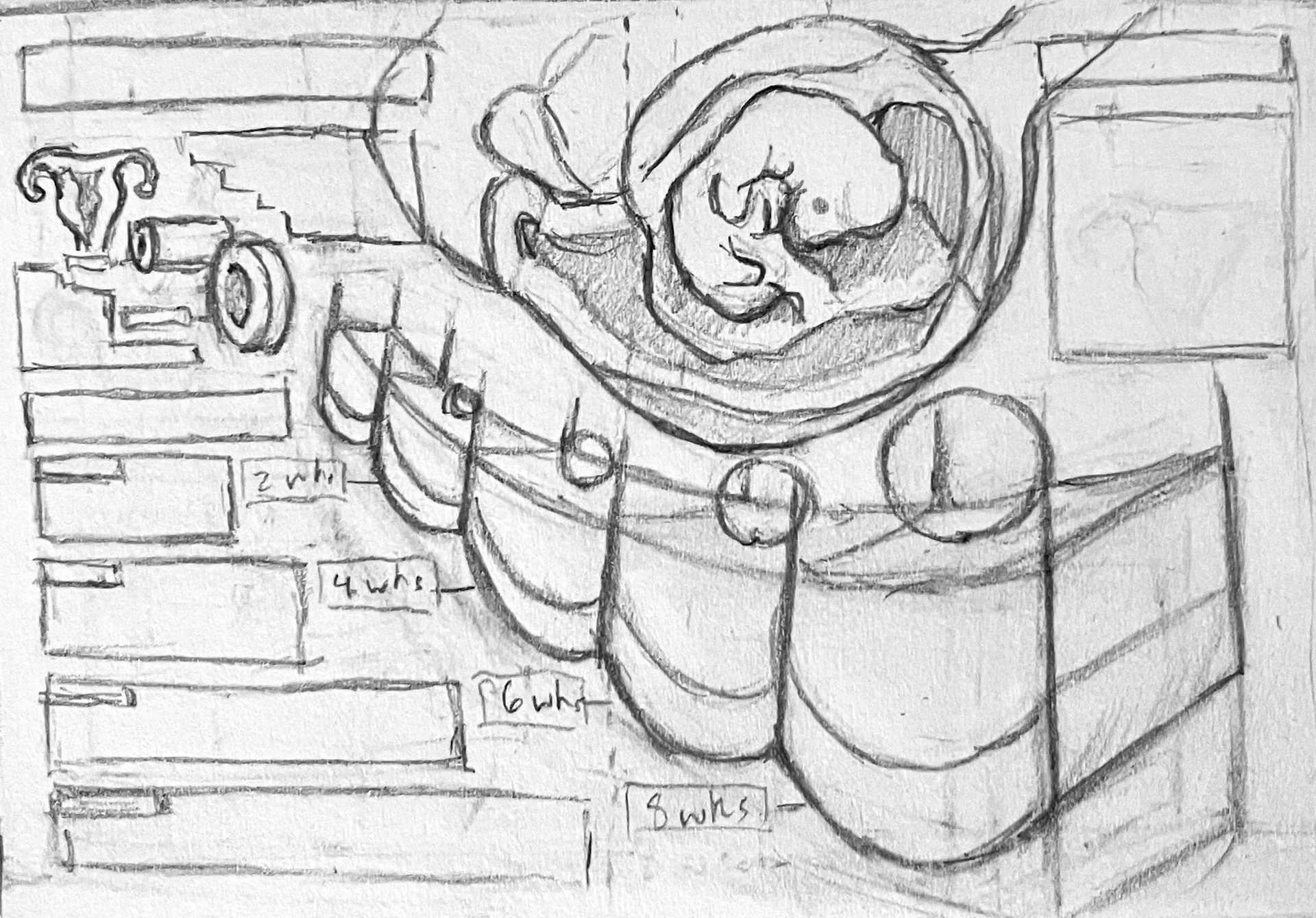
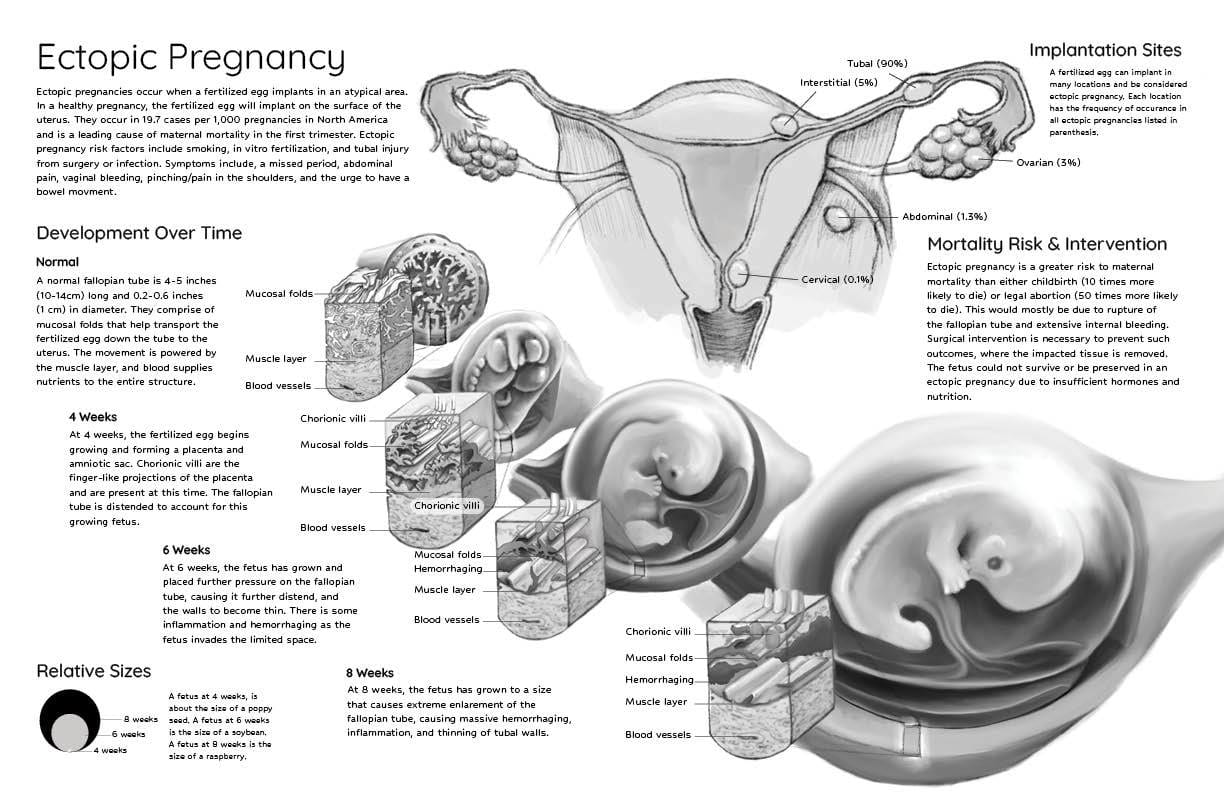
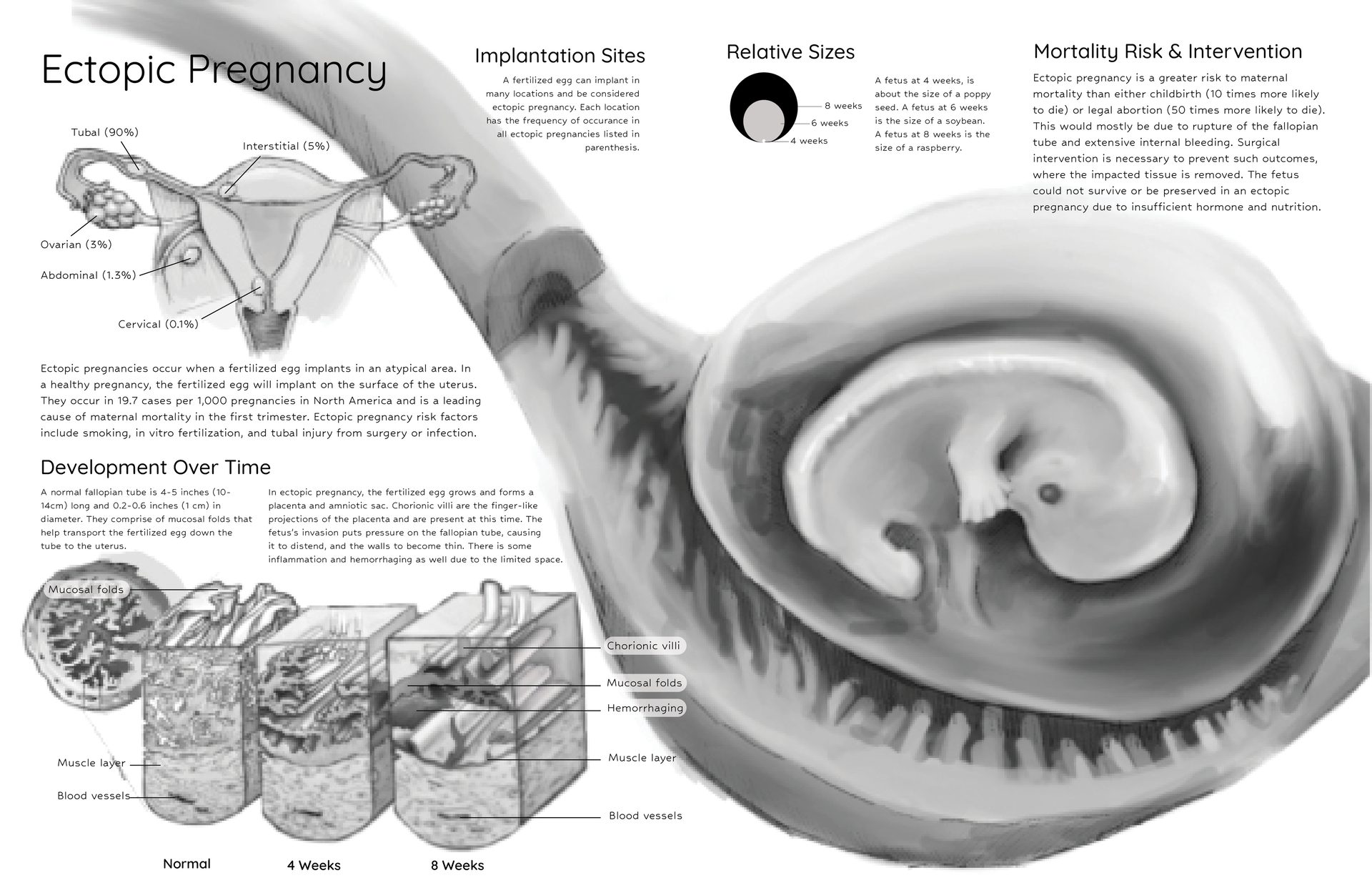
DIGITAL ILLUSTRATIONS

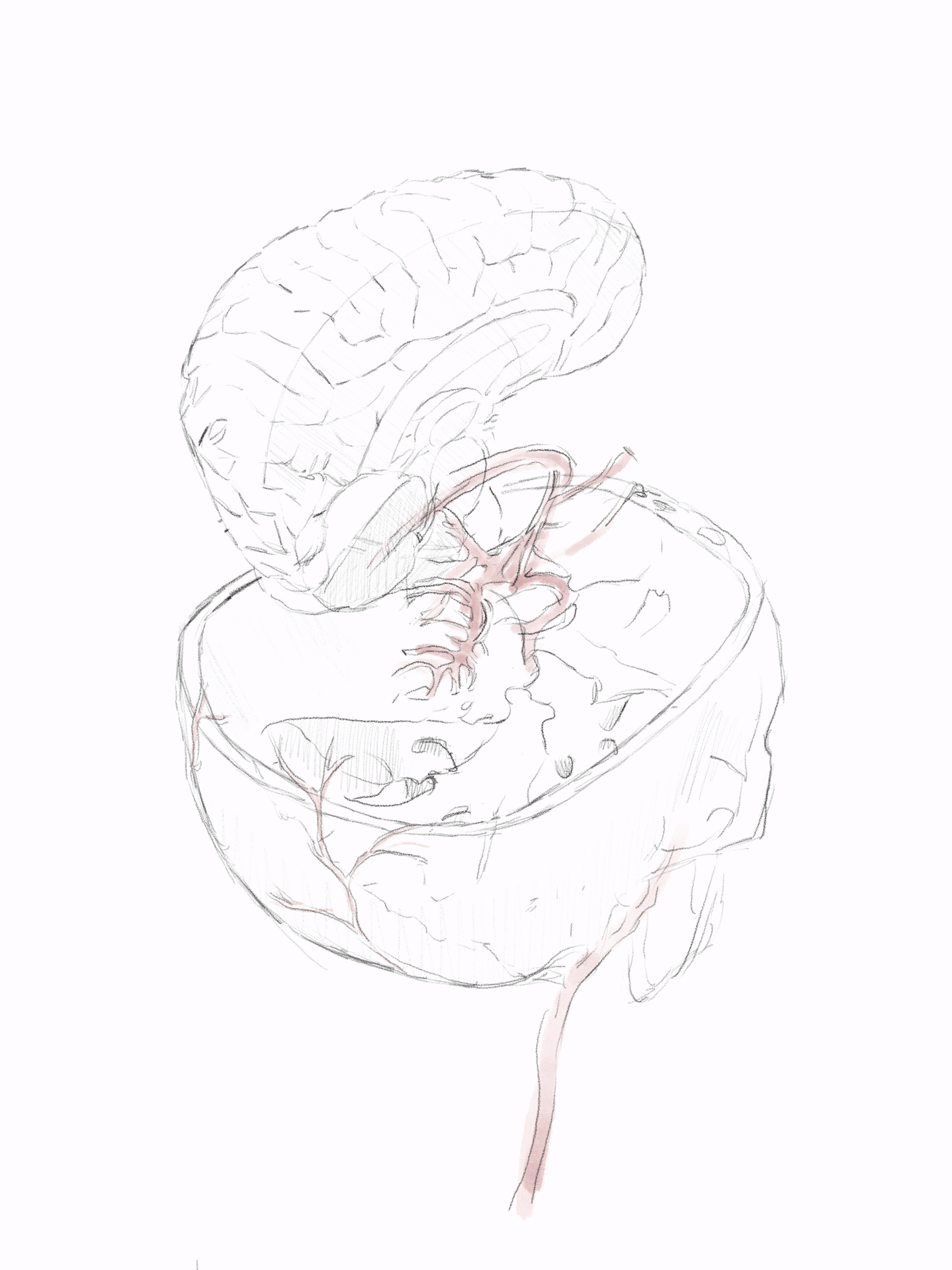

The goal of this illustration is to create an accurate editorial piece focused on external neuroanatomy. The brain's correct positioning within the skull posed a challenge. To achieve this, I sketched a self-portrait using photo reference and then mapped out the general position of the skull and brain using textbooks, online 3D models, real human skulls, and plastic brain models.
A 3D brain model helped me match the angle of my tilted head and served as a guide for drawing the brain in the portrait sketch. Checking that the oribitomeatal plane aligns with the bottom of the temporal lobe ensured the correct orientation and position of the brain.
After thorough research and verification of the anatomical position, I digitally painted the piece, paying special attention to the different textures of the skull and brain. To achieve the accurate brain coloration, I used a fresh lamb's brain for observation.
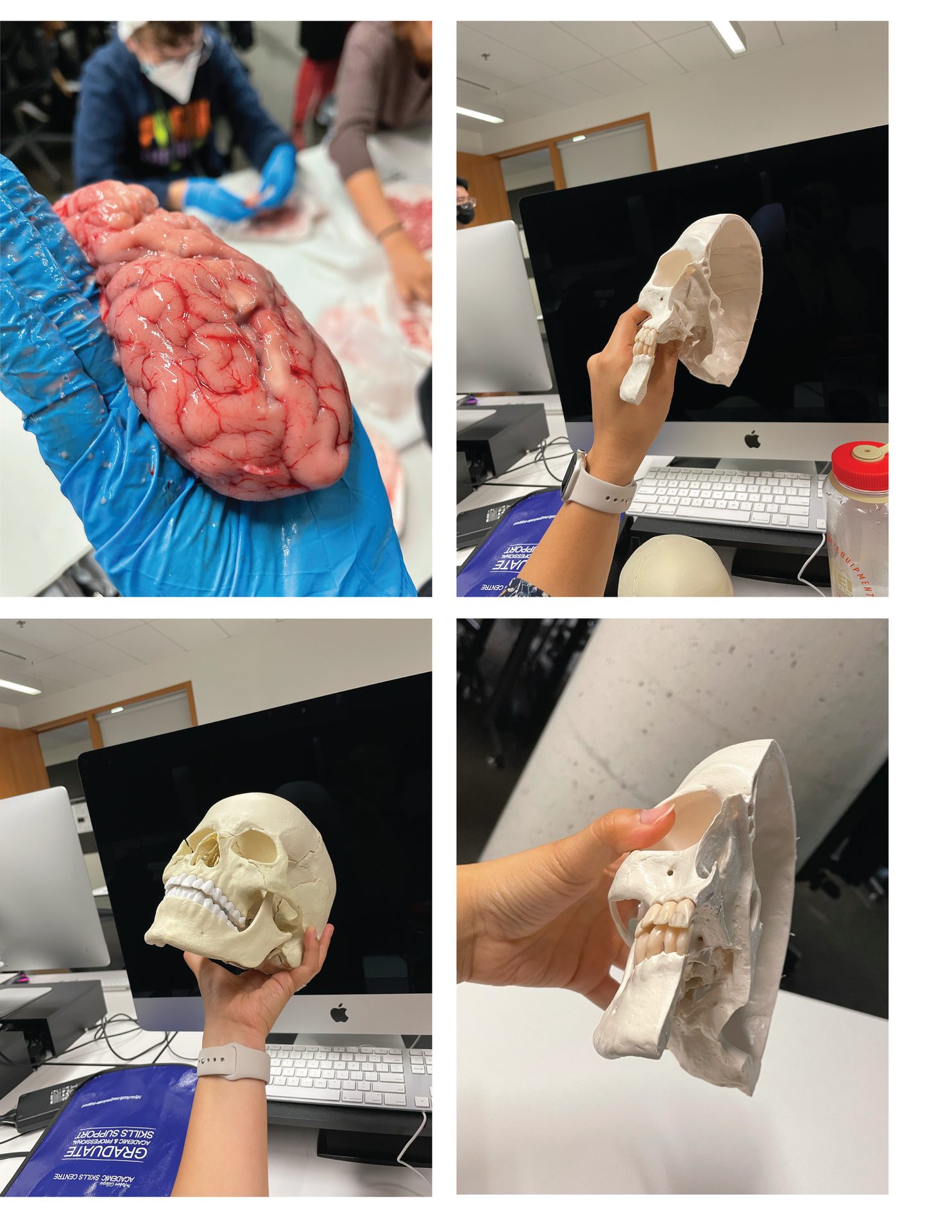
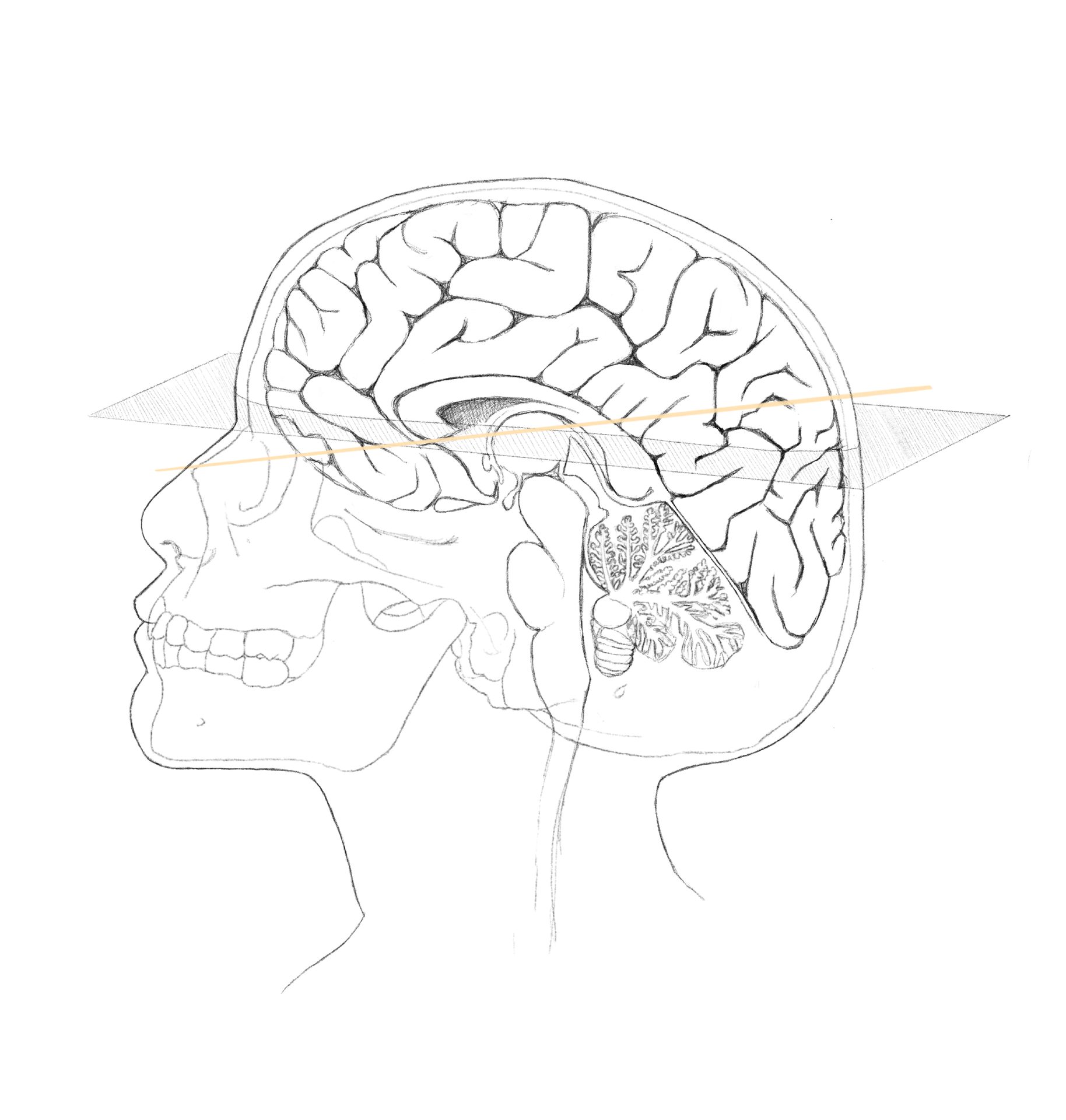
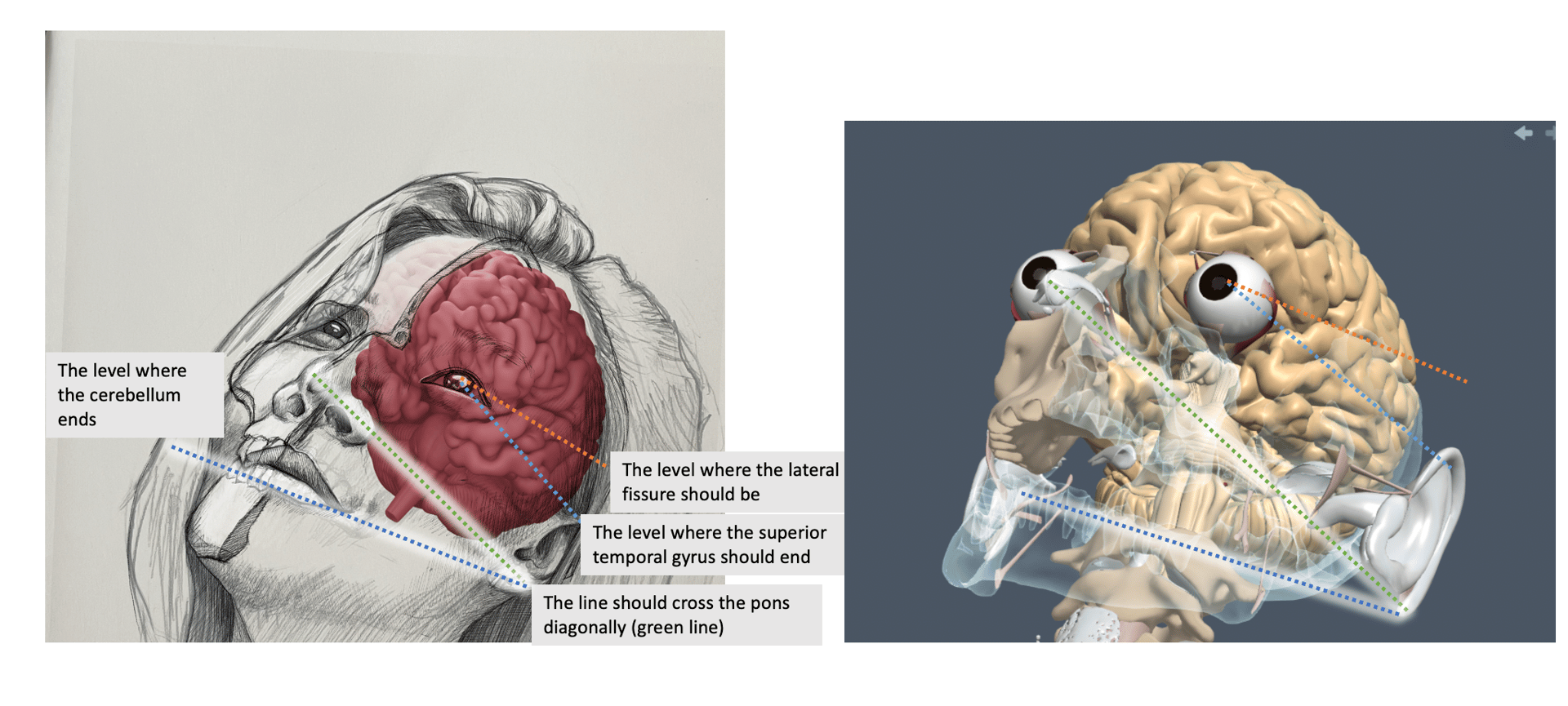
The purpose of this illustration is to educate viewers about the location of cranial arteries in relation to both the brain and the skull. Extensive research and references, including 3D maquettes, plastic models, and real skulls, were used to inform the creastion of the sketches. The final illustration was rendered through digital painting.
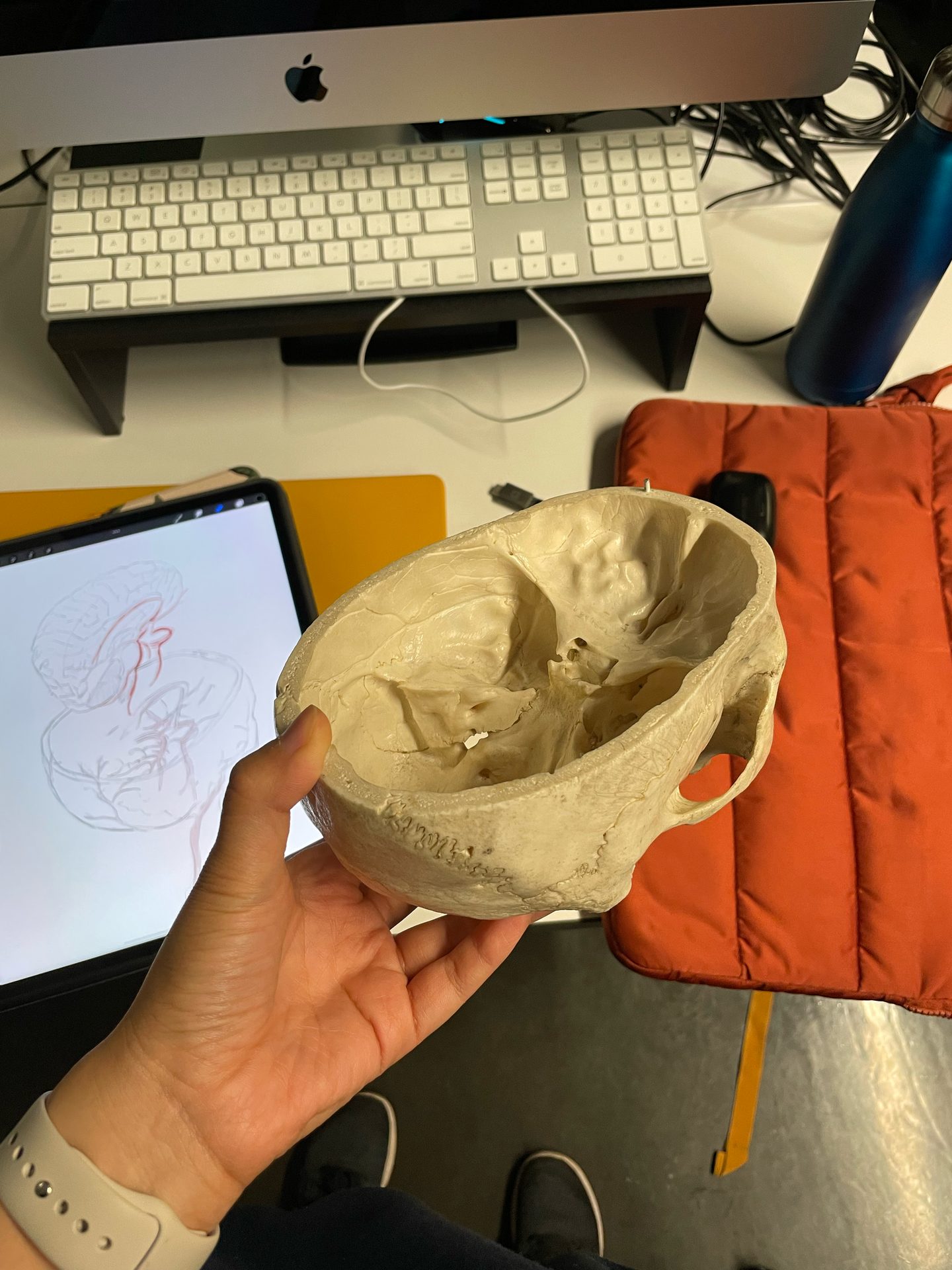
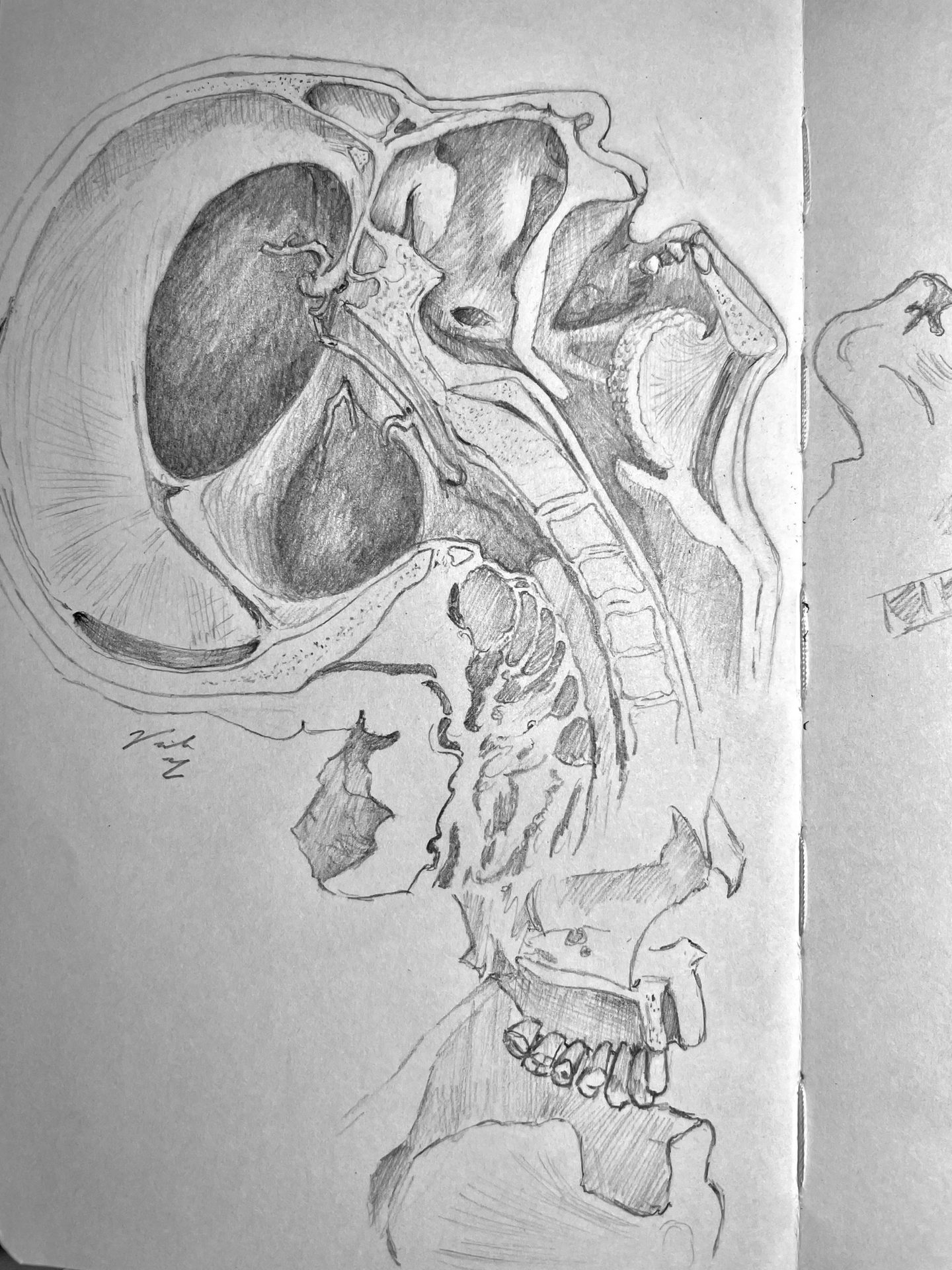
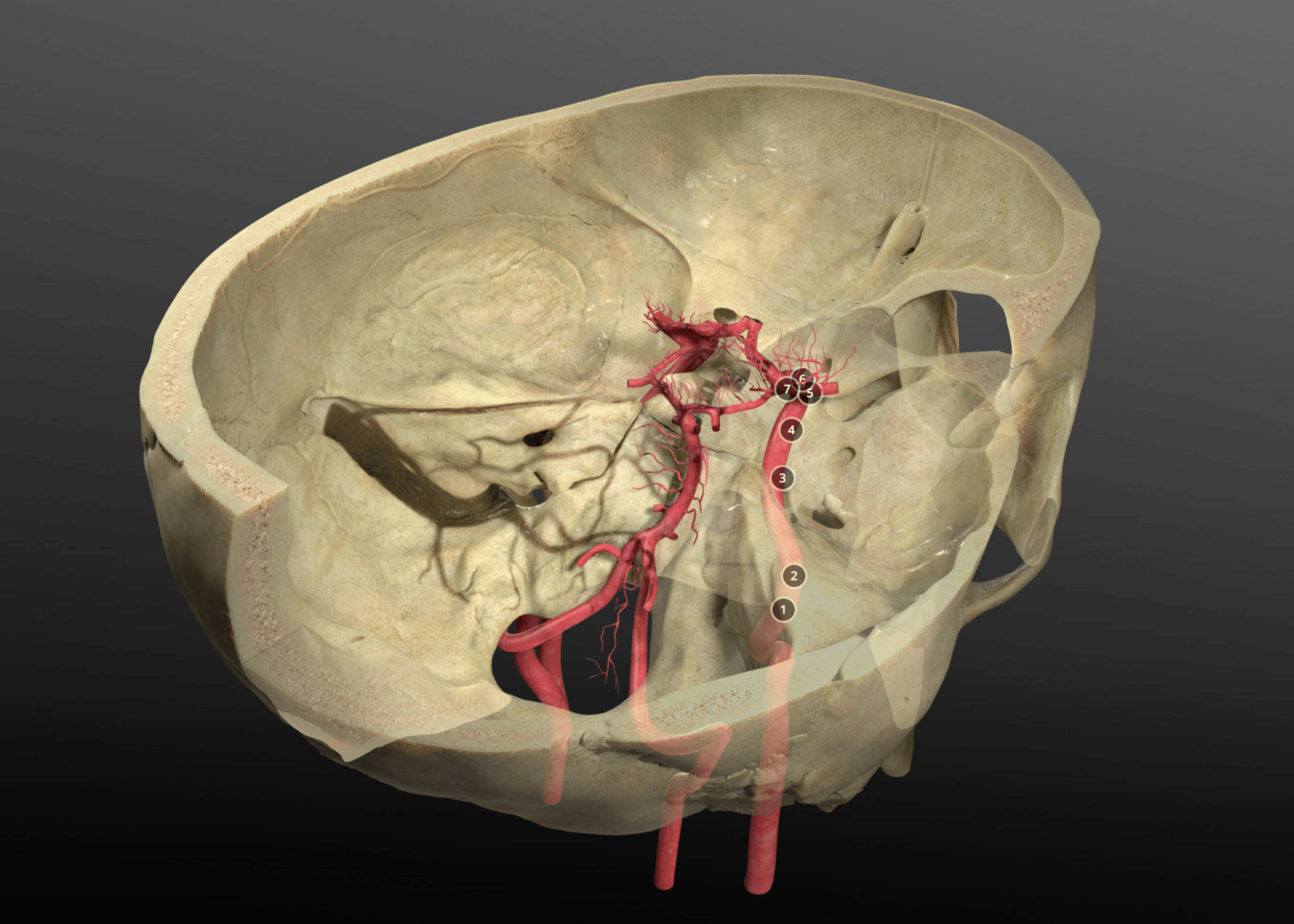
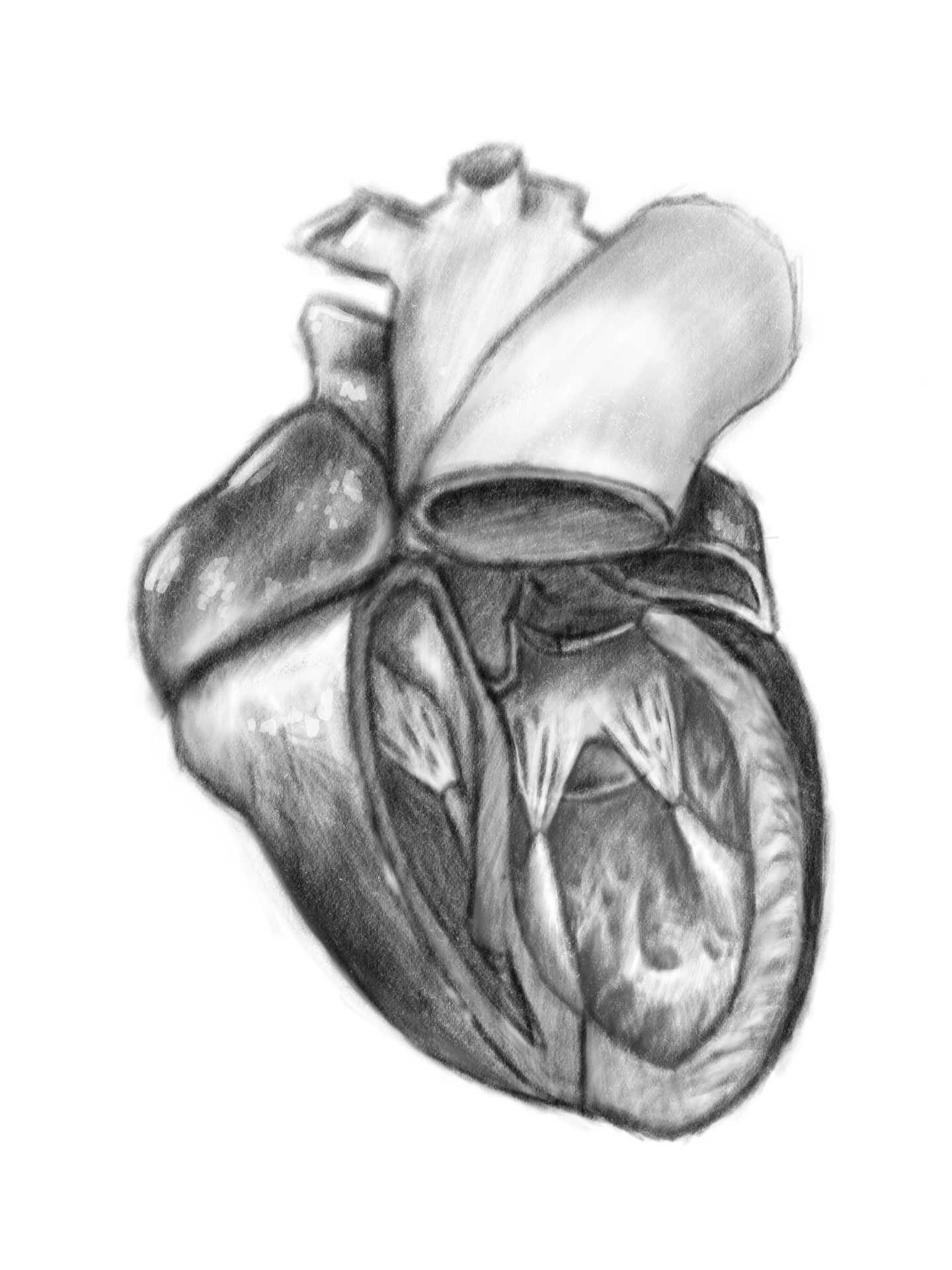
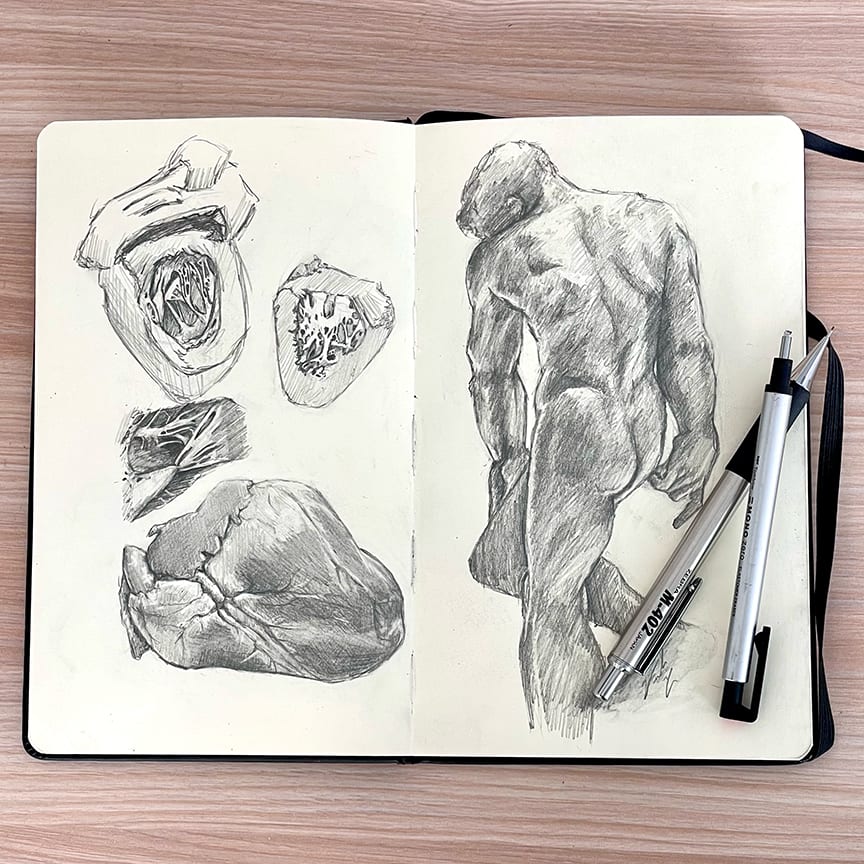
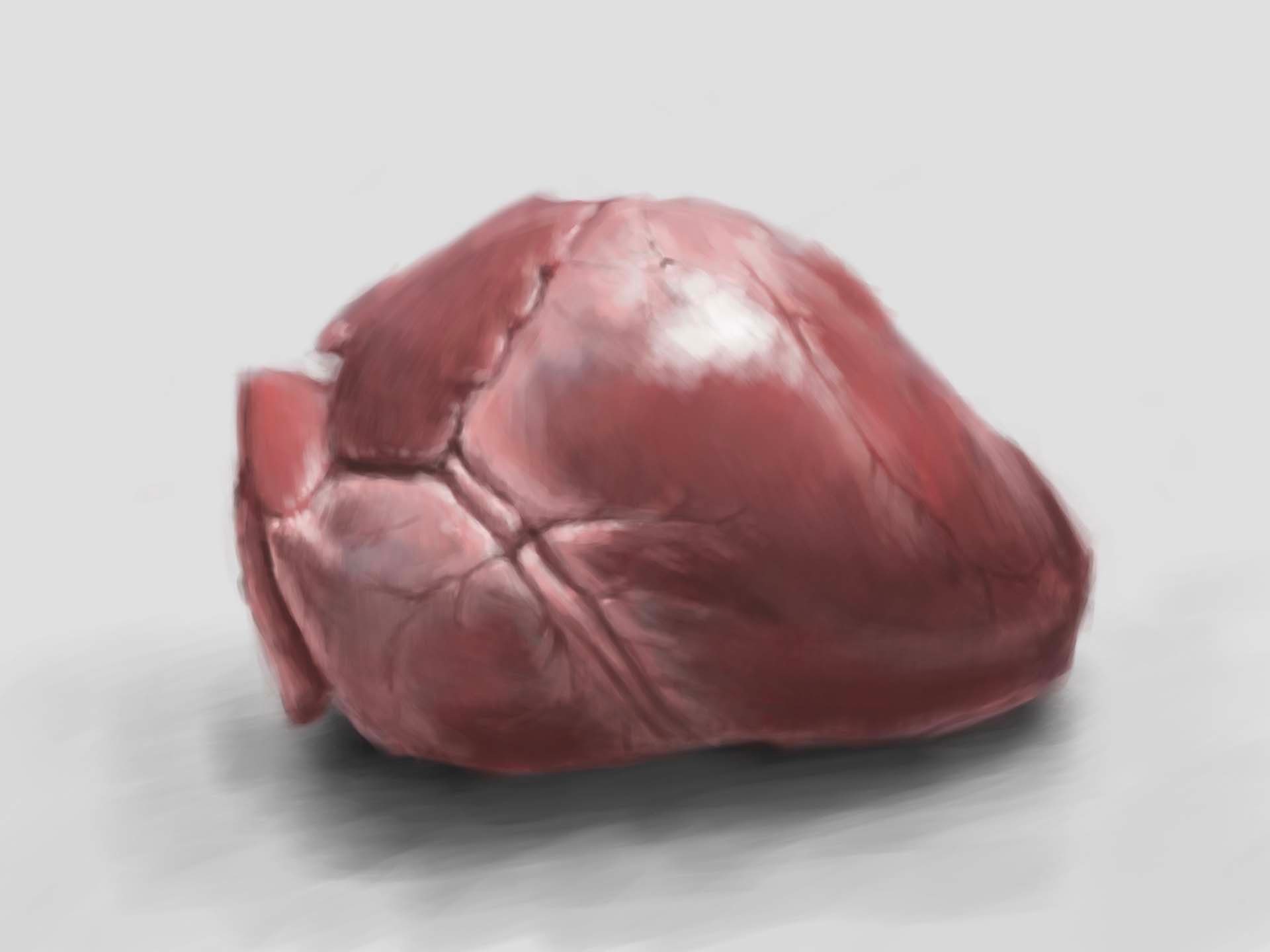
The goal of this illustration was to inform viewers about important external and internal anatomical features of the human heart. After researching the anatomy, I created observational sketches from a human cadaver heart, including detailed texture studies of trabeculae carneae and chordae tendineae. I also studied a pig heart for comparison.
Since graphite sketches lack color information, I did a color study of a pig heart as a digital painting to understand color undertones. Using a 3D maquette in Nomad Sculpt, I experimented with different cut views in the human body, ultimately choosing one that focused on the left ventricle.
After exploring the heart's physical structures, coloration, and various cut-aways, I rendered the final illustration. I started with a black and white render of the heart's physical structure and then added color on top.
This piece is meant to be a two-page spread in a journal such as Scientific American. It's objective is to inform the viewer about the pathology of ectopic pregnancy.
After performing research on the topic, sketches were created to investigate potential layout and determine the narrative of the piece. Then the sketches were further refined with drafted text and various compositions explored. The final piece was rendered as a digital painting.
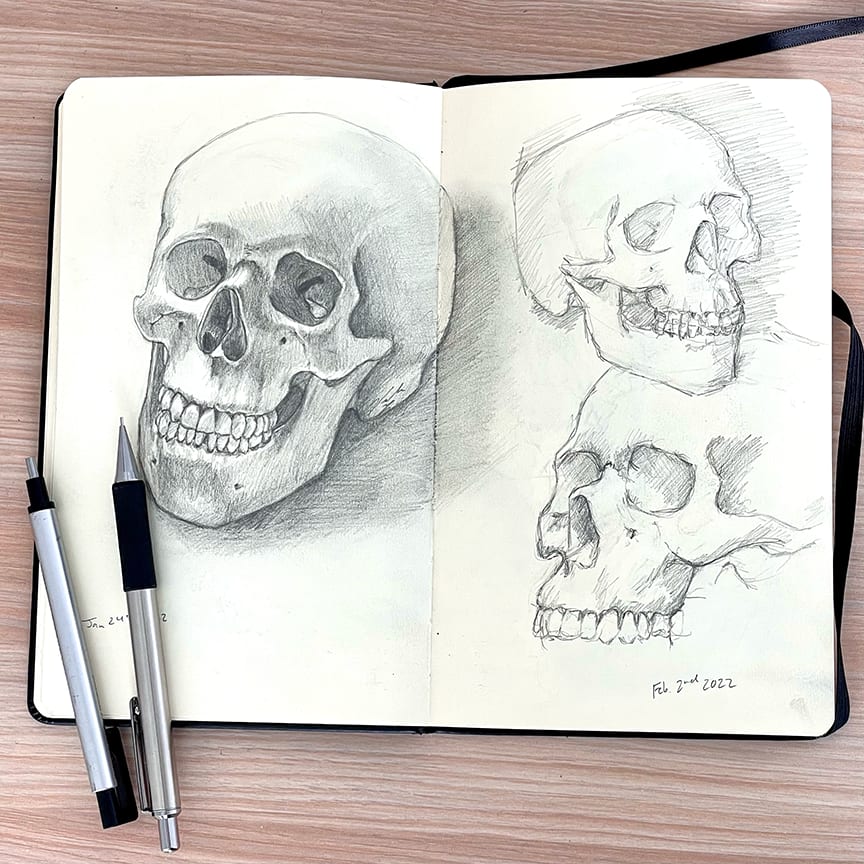
This illustration shows a sagittal cut of the brain in the skull and head of a child.
Sketches were made from observing plastic and real human skulls in different angles. The skull was then oriented within the facial profile and the brain placed in the skull.
See MRP for details on project.
See MRP for details on project.
BioSci Cards is a project where real organisms are highlighted in a combination of National Geographic meets Pokémon cards. Essentially these animals' very real special abilities are explained on these trading cards. The intent is to drive interest in learning about these fascinating creatures.
The project assignment was to illustrate one of the specimens from Grant's Museum on the University of Toronto's campus. The specimens had to be drawn from life so many sketches were made on site. Since these specimens are multiple years old, we had to reconstruct parts of the anatomy that has decayed or are missing. For example, in this particular specimen, the head was tilted extremely upwards which then distorted the neck muscles and skin. That had to be corrected in the illustration. As well as the multiple missing teeth had to be reconstructed.
MRP: Tetralogy of Fallot Heart | 3D Model: Practice | Nomad Sculpt | Substance 3D Painter | Maya
This was a 3D model that I used to practice modeling for my master's research project (MRP). My MRP involves creating an online interactive learning module for parents of children with Tetralogy of Fallot (TOF) which is a congenital heart disease. The 3D model will be used at the end of the 'Normal Heart' module where the user can explore the external and internal anatomy. The 3D heart model explorer will also have the capability to have hotspots that the user can open and learn more about the specific anatomy.
This particular model will not be used for the MRP as the internal space is not based on CT scans of the actual heart. This is just practice for the final 3D model that will be based on CT scans of an actual heart.
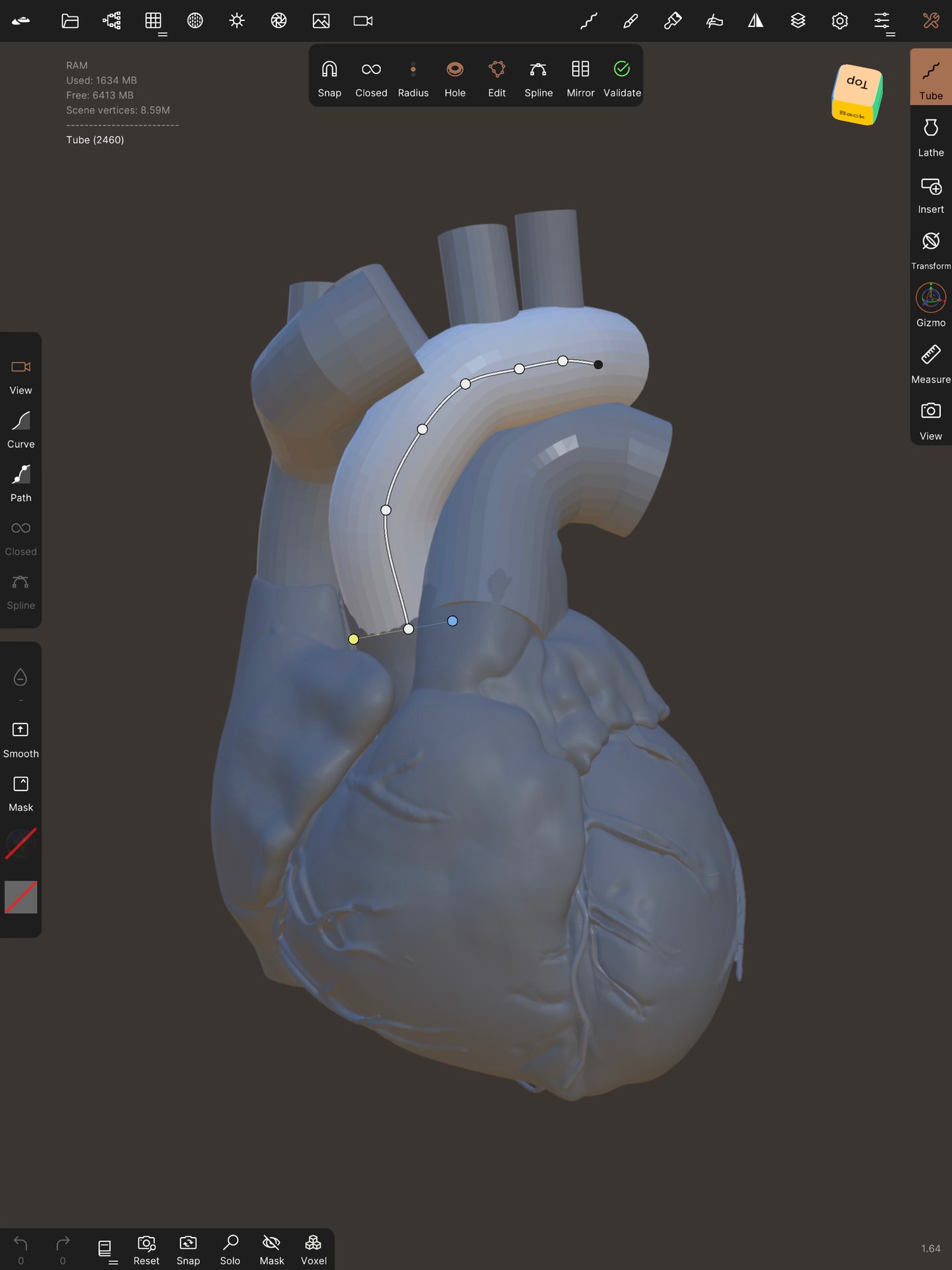
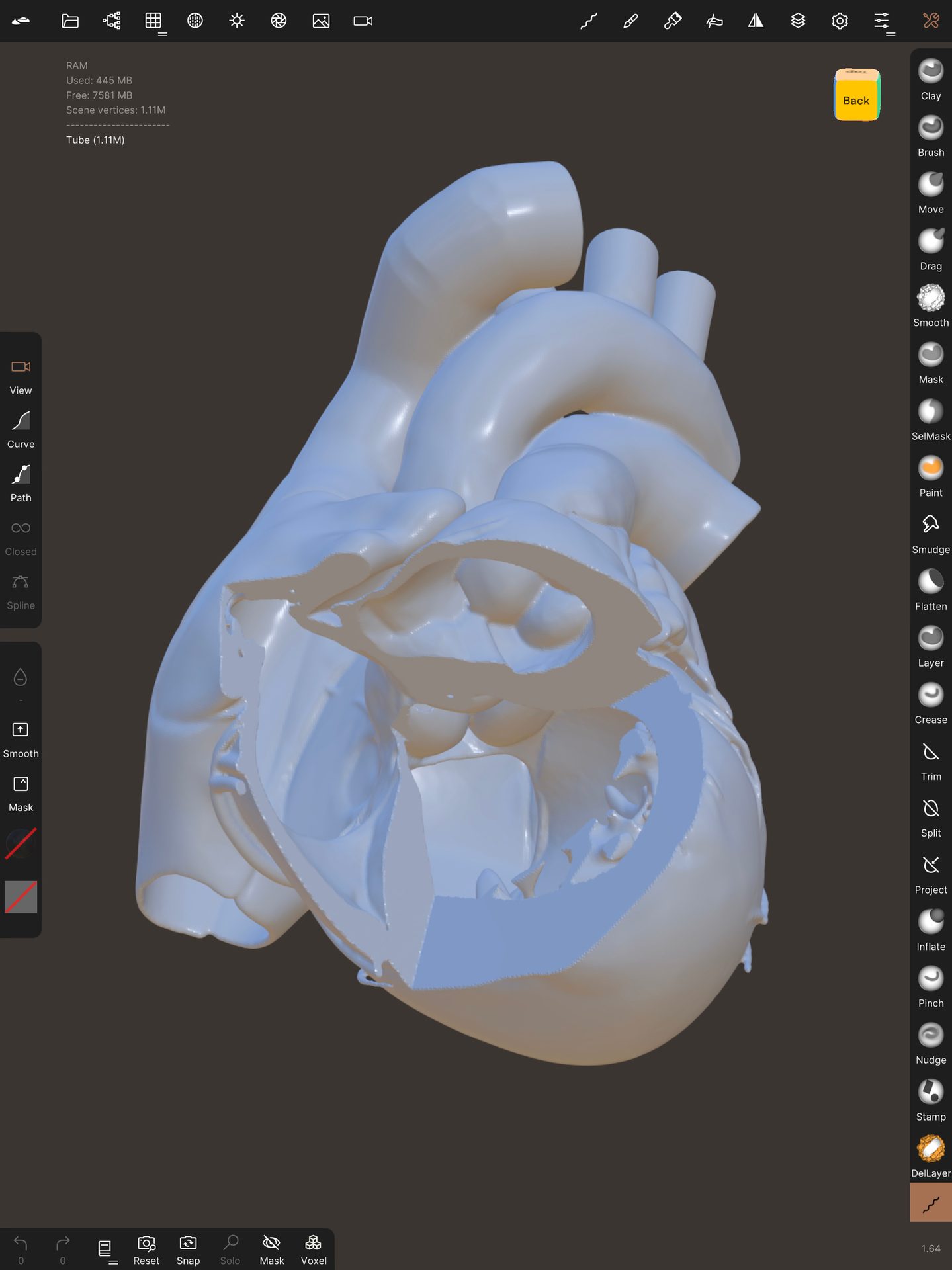
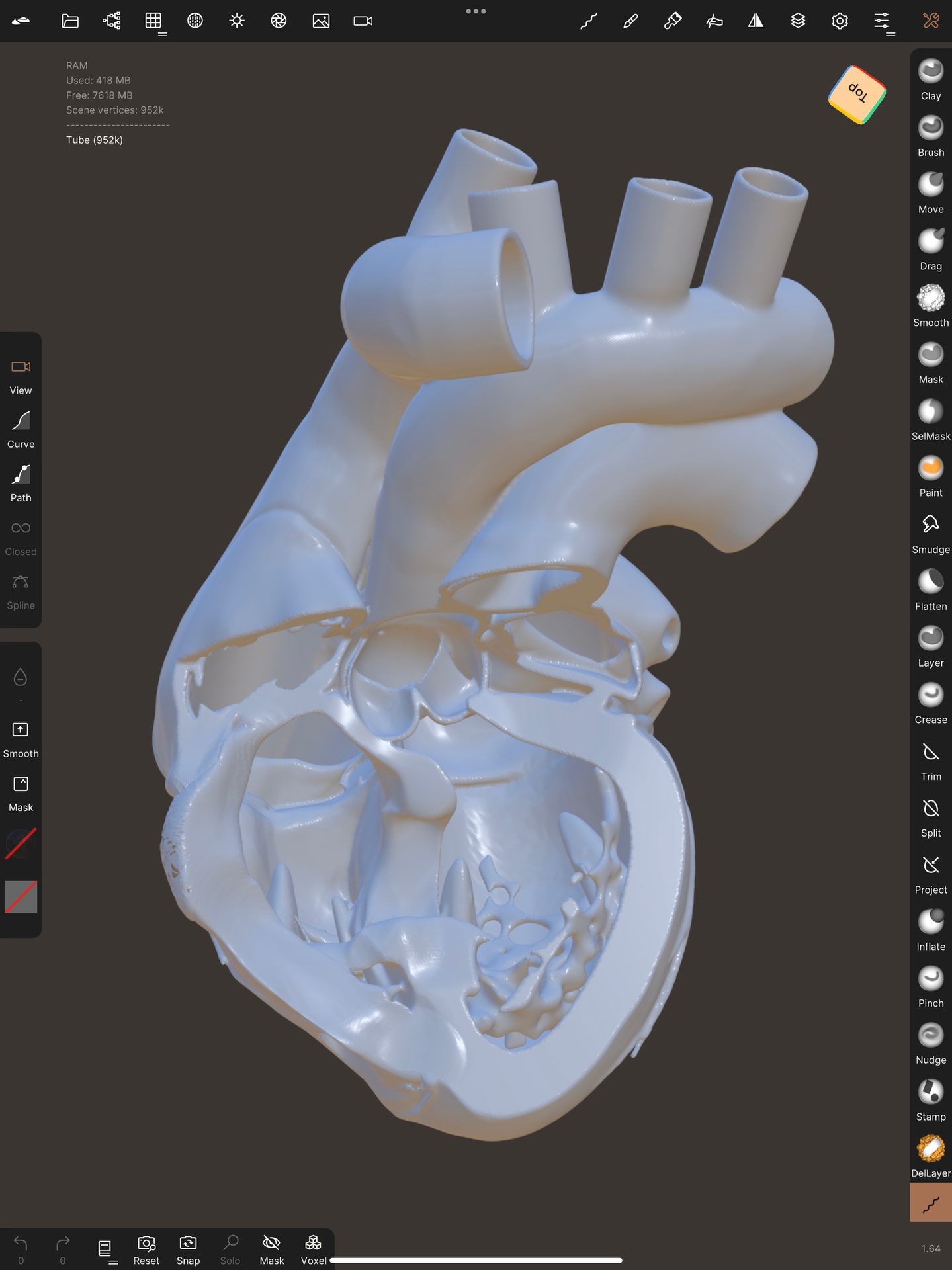
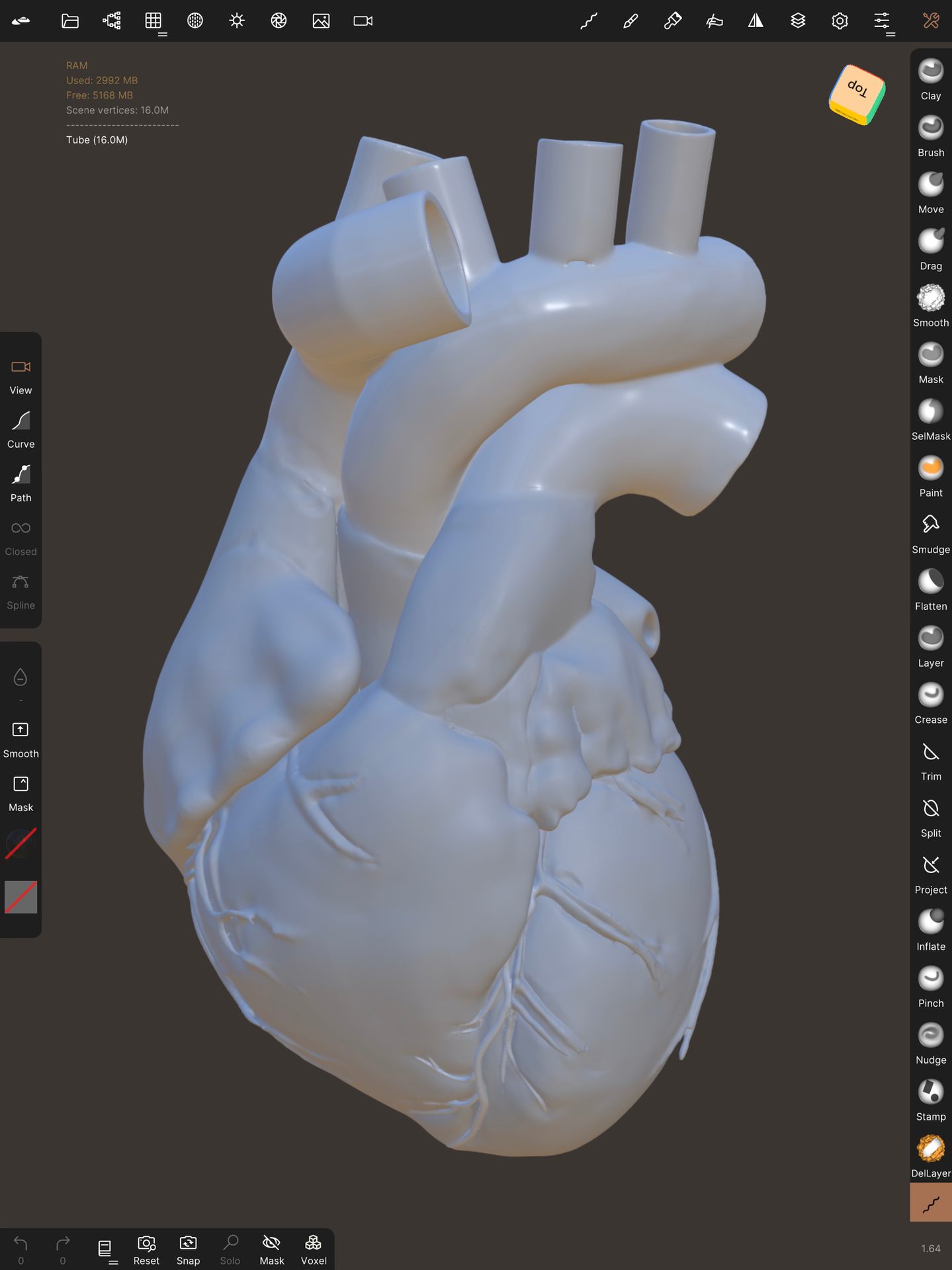
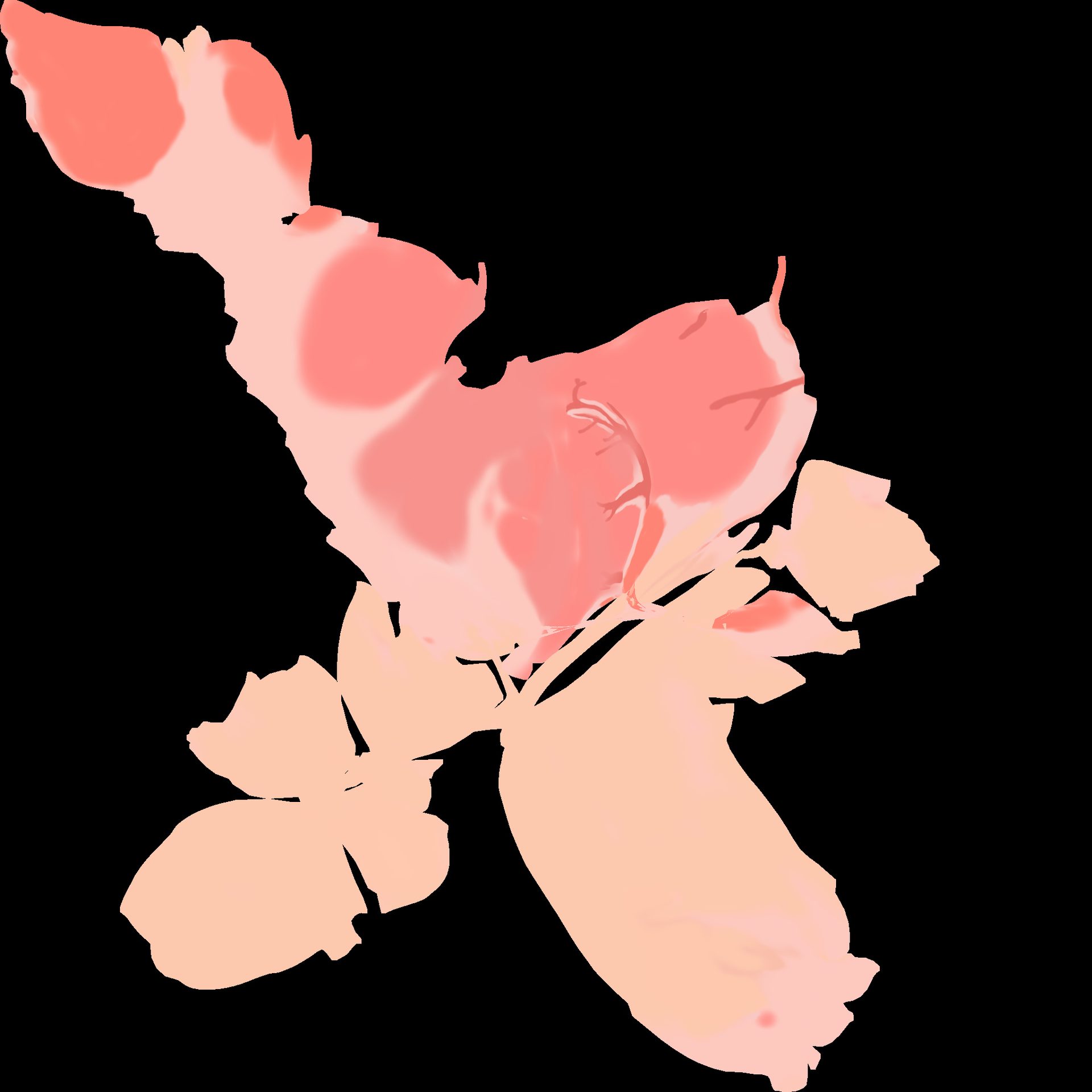
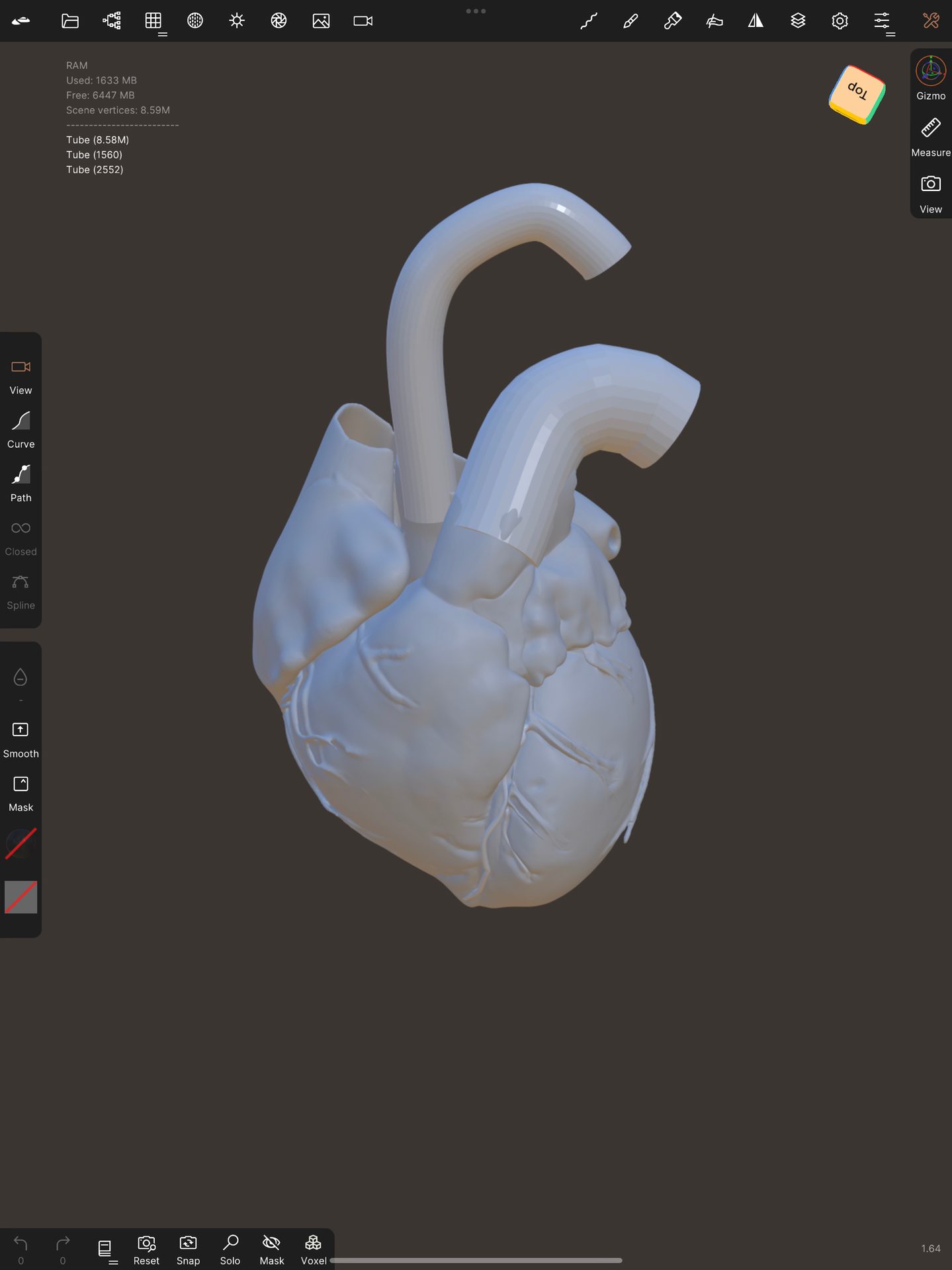
MRP: Tetralogy of Fallot Heart | 3D Model | Nomad Sculpt | Maya
This is the 3D model that will be used in the MRP as the internal structures were based on CT scans of a real heart.
The CT scan model was imported into Nomad Sculpt where the outside structure was modelled from scratch. After modeling the external structures, the CT scan 3D model was boolean cut from the external structure model so that the internal anatomy is accurate.
The next step is to model the valves and clean up the internal structures. Then a boolean cut will be made to expose the valves.
This model will be used at the end of the 'Normal Heart' module where the user can explore the external and internal anatomy. The 3D heart model explorer will also have the capability to have hotspots that the user can open and learn more about the specific anatomy.
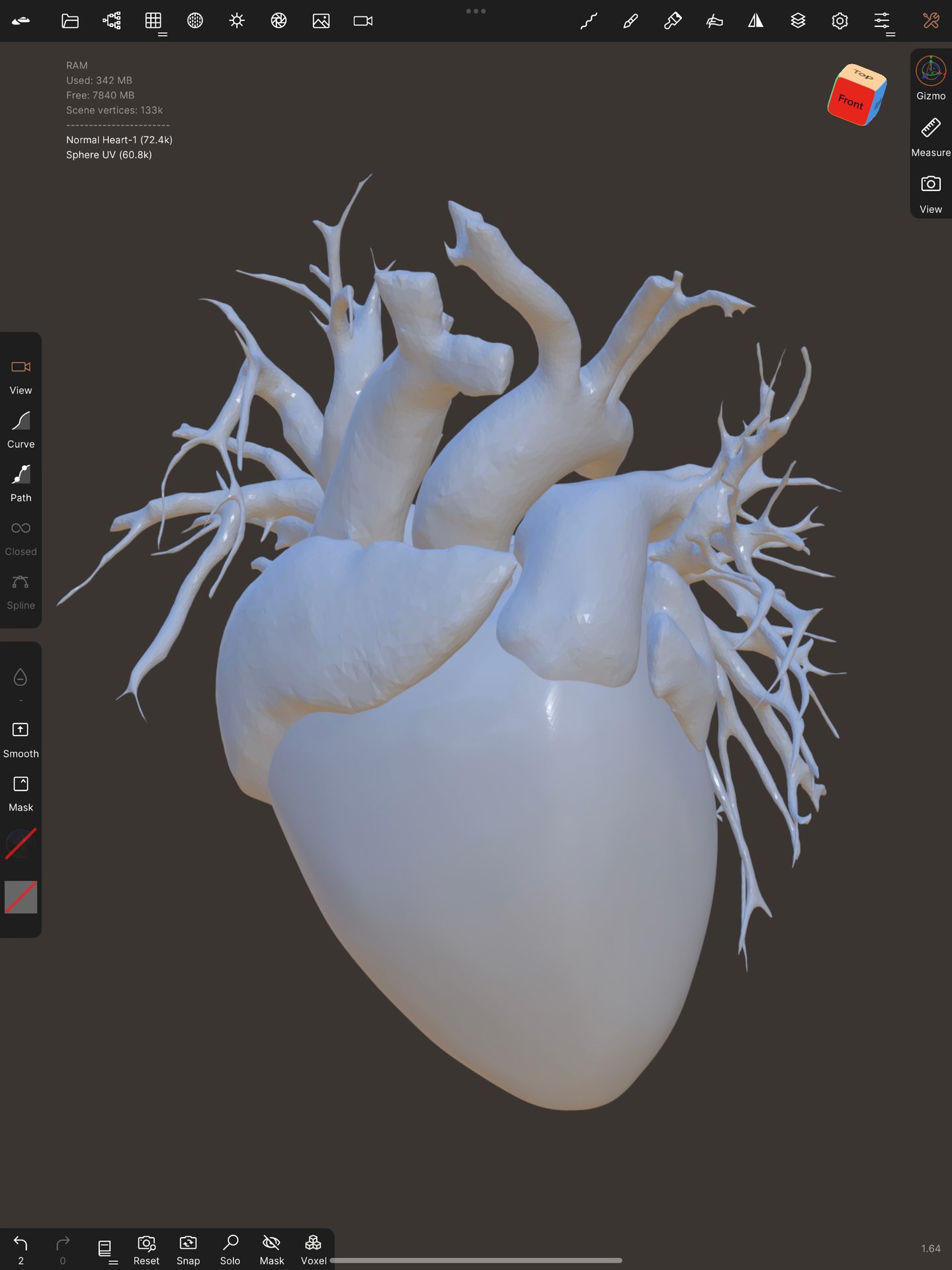
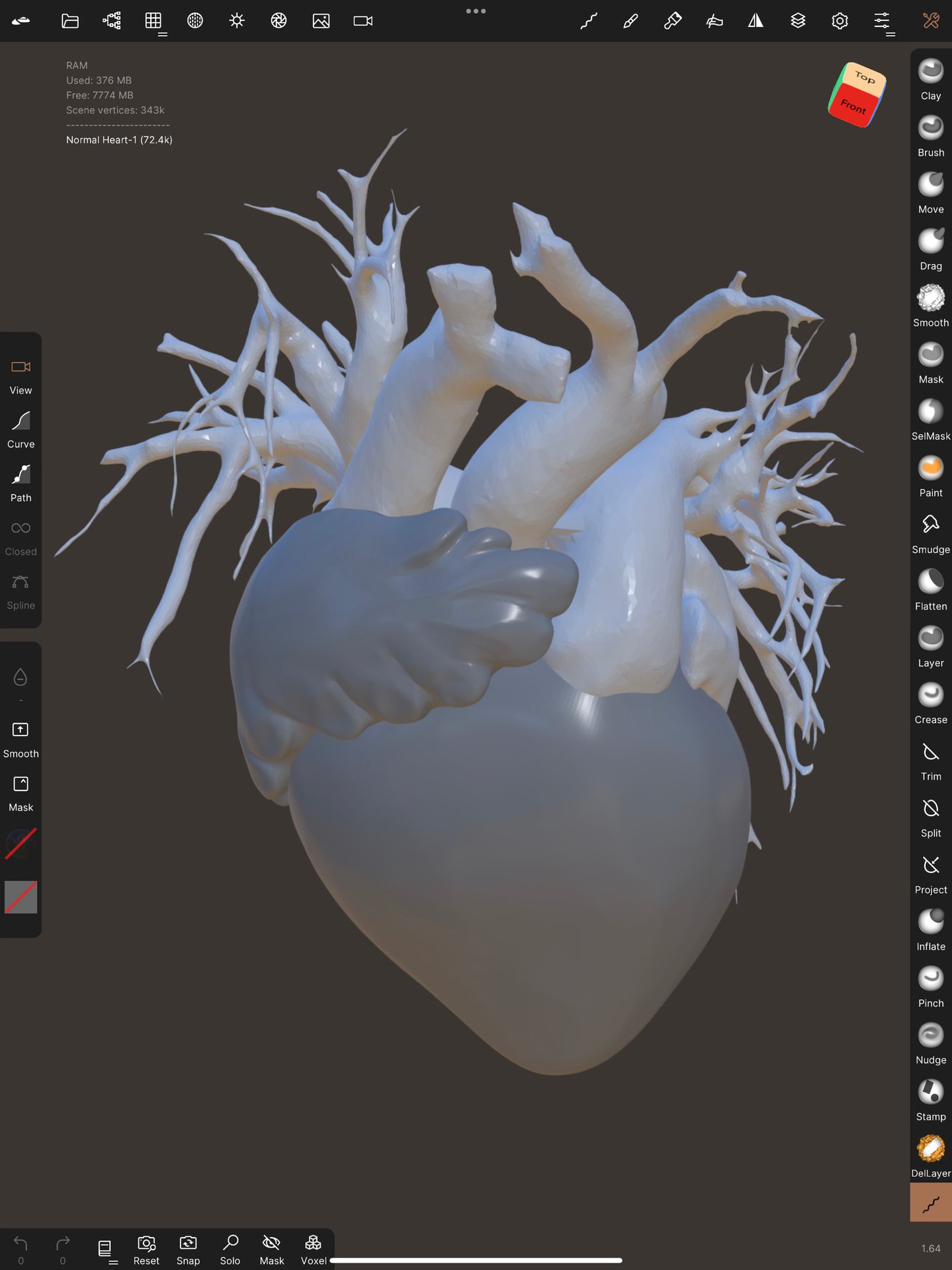
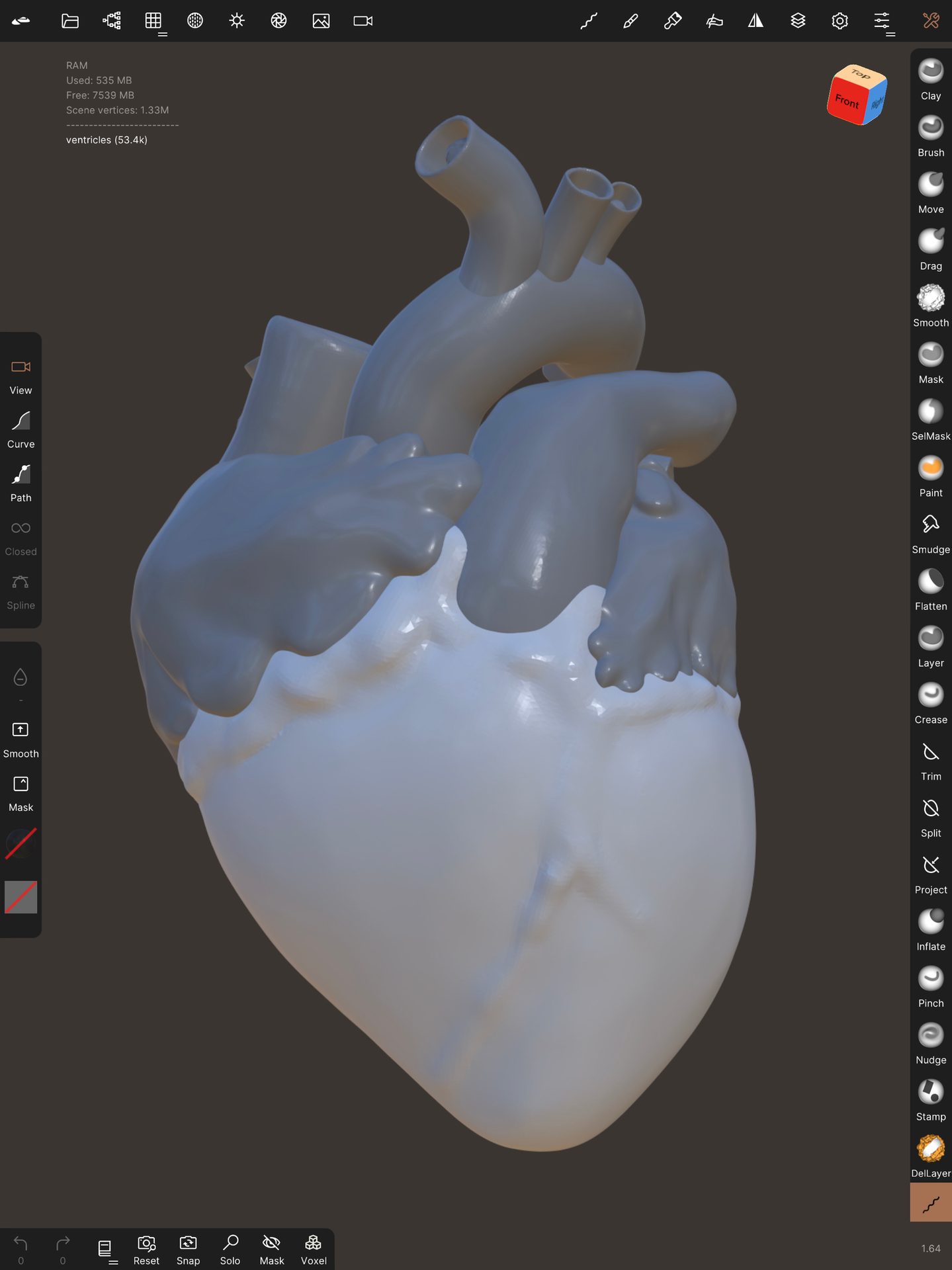
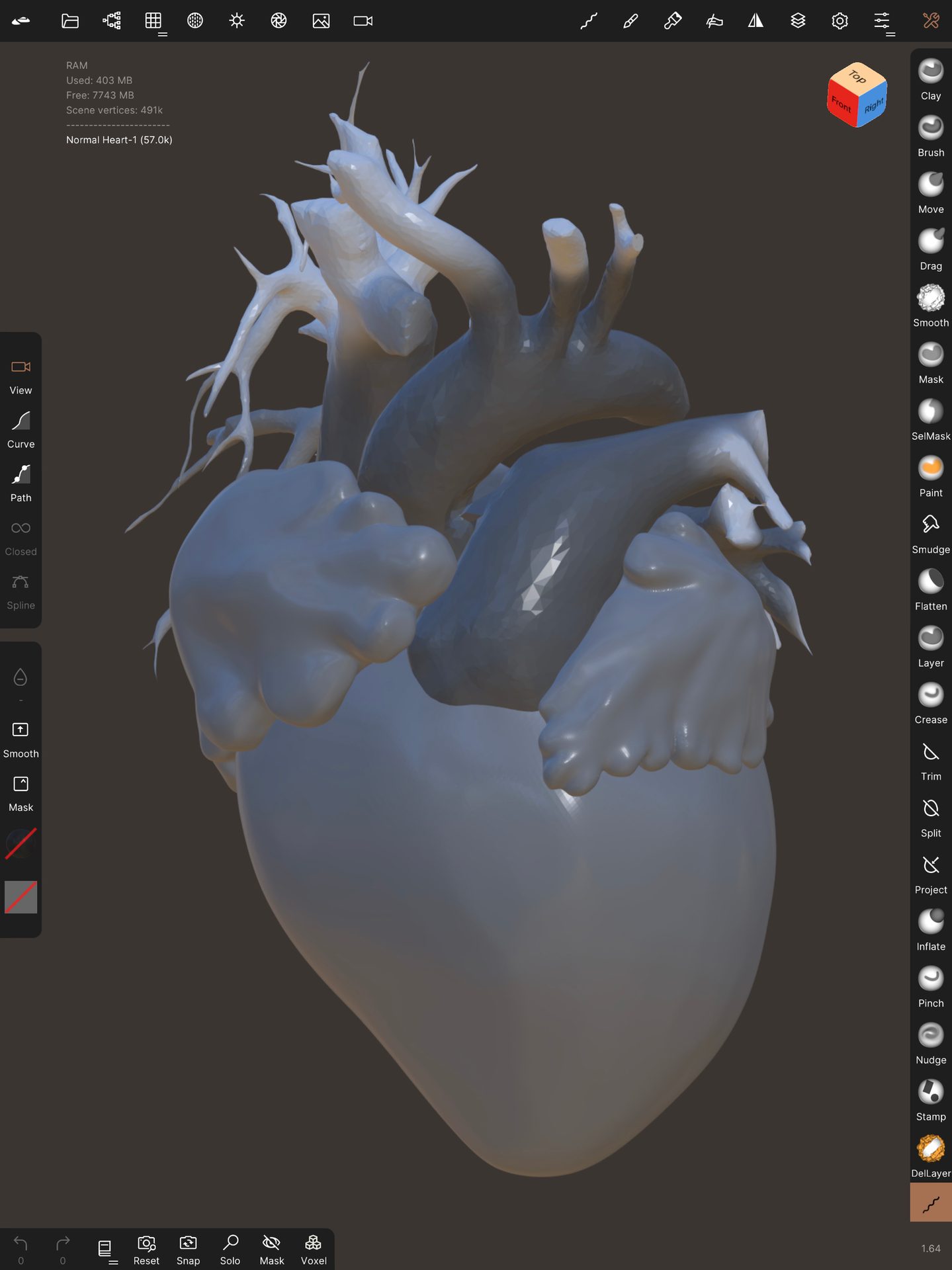
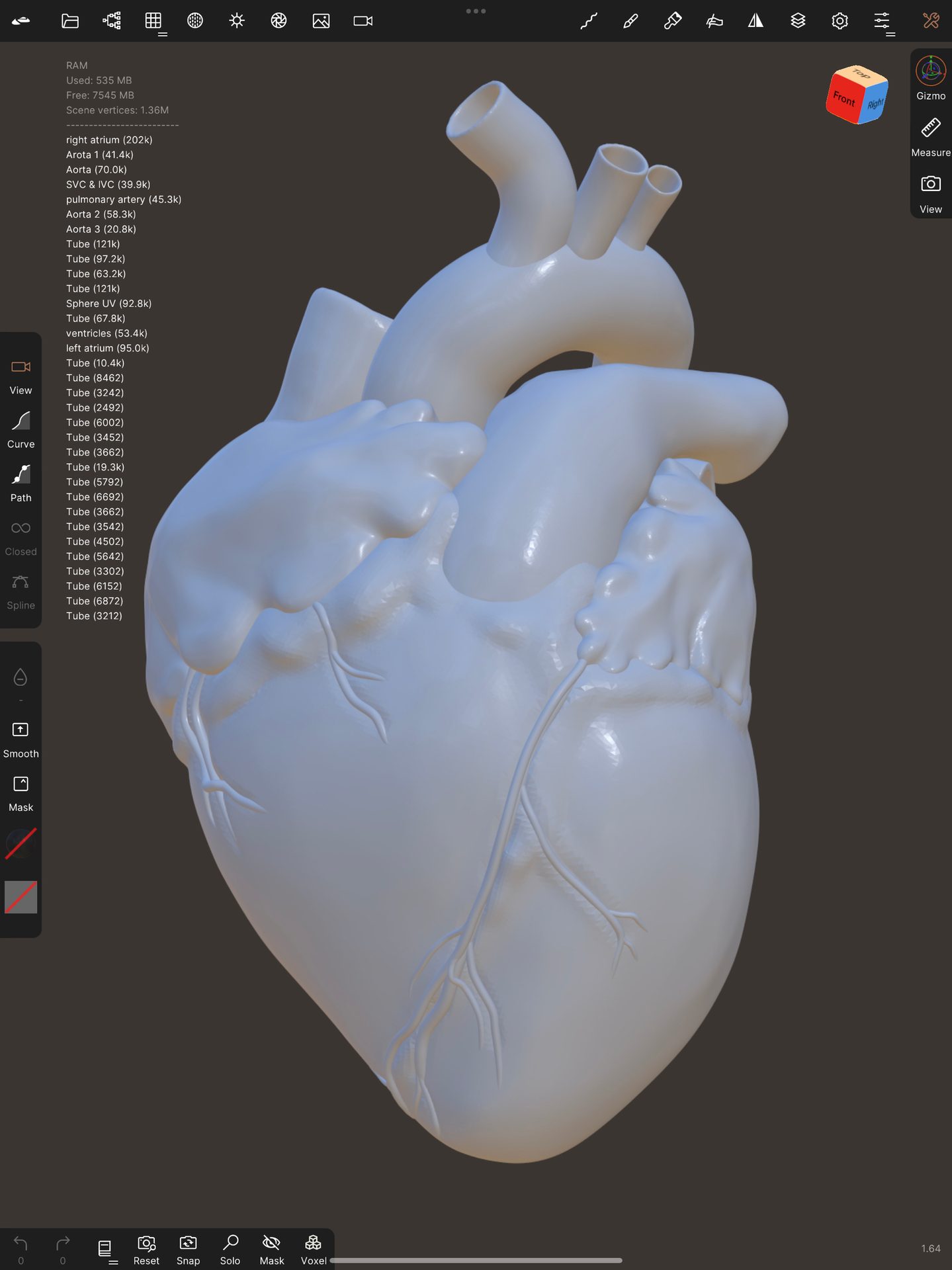
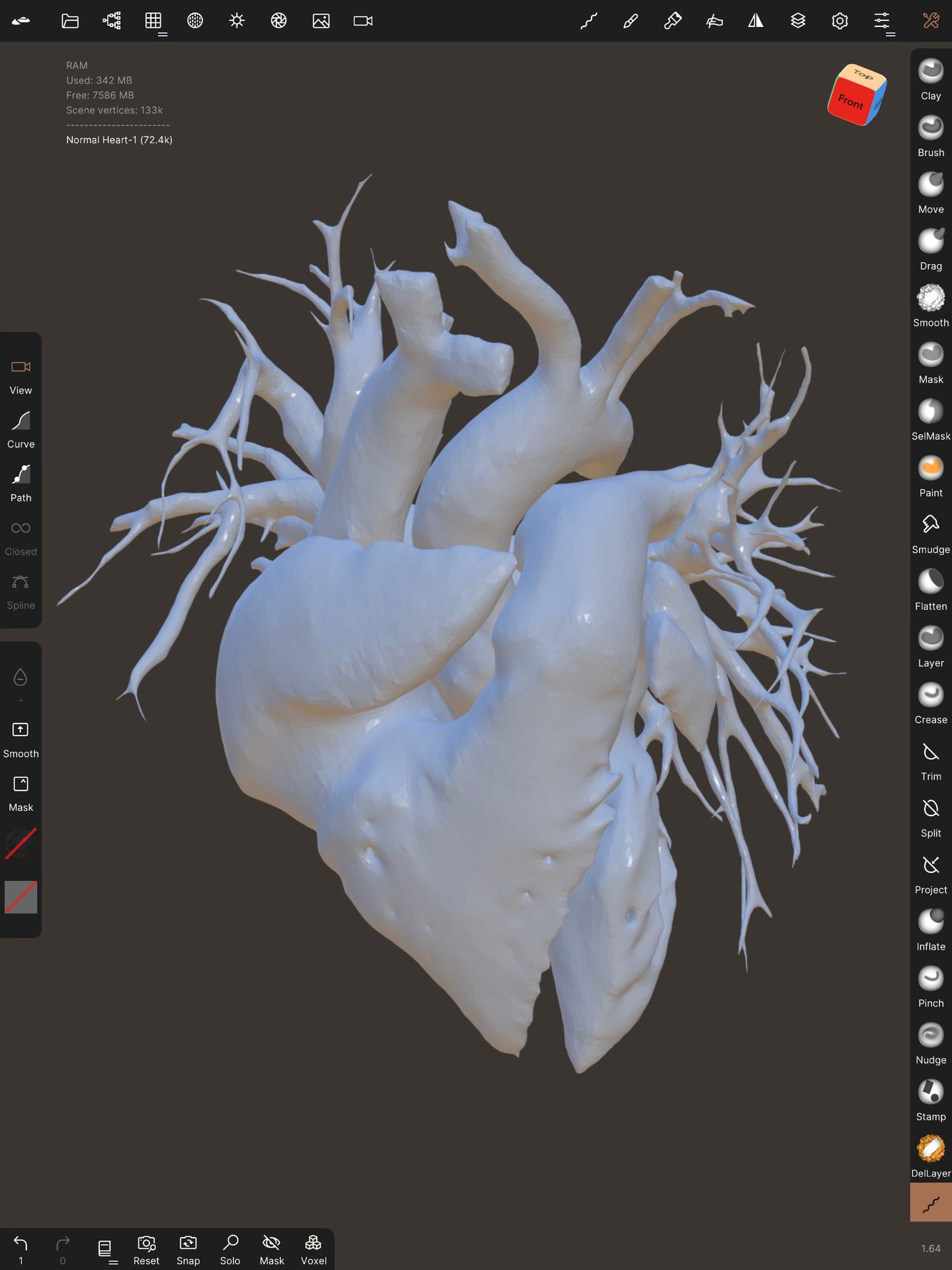
Dino Game Assets | Low-Poly Models for Interactive Dino Game | Blender
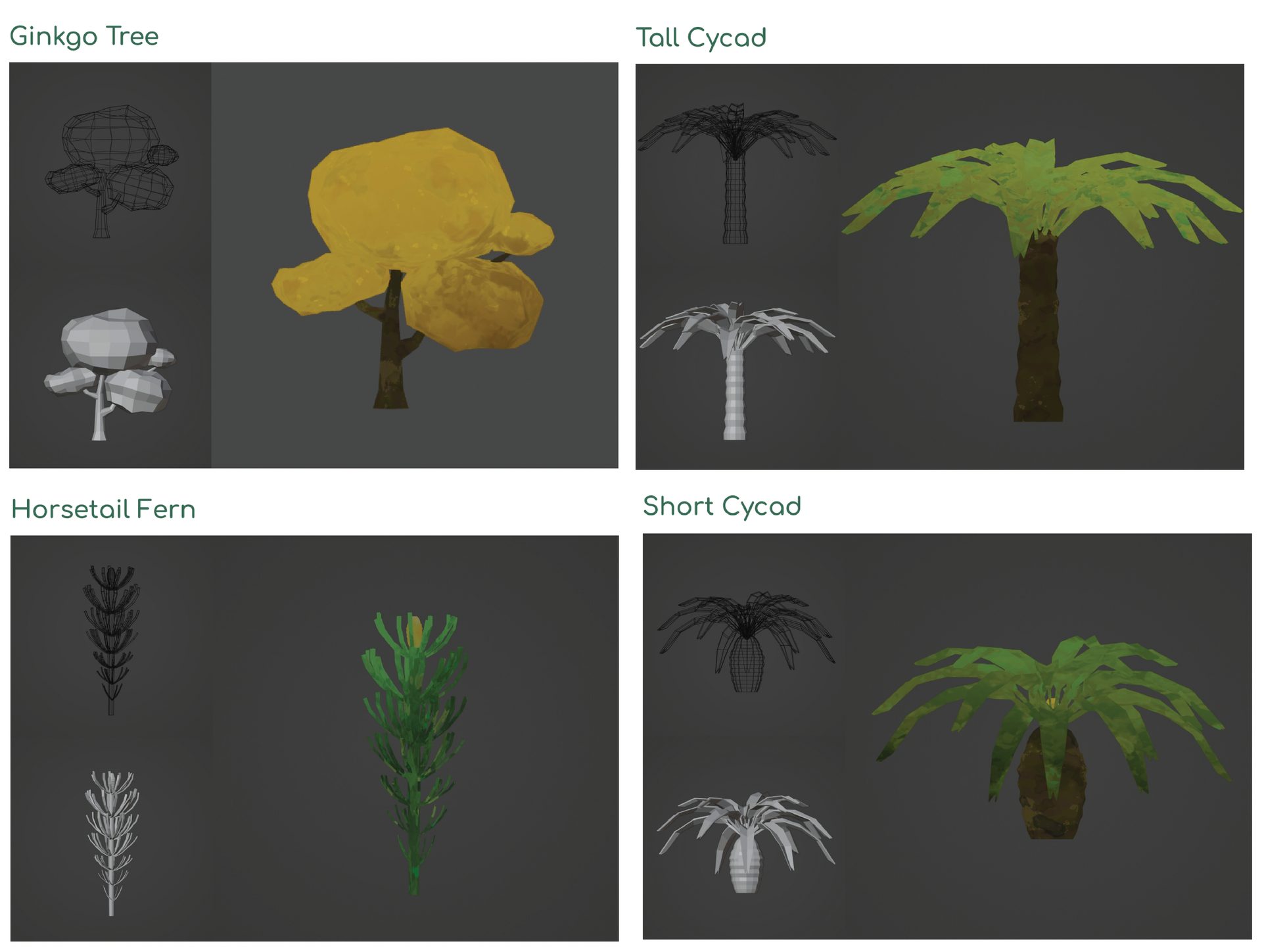
The models were created in a low-poly style in Blender. They were used to create an interactive immersive environment to replicate the Late Jurassic period. This was used as part of a 3D game that was targeted at middle schoolers to help them learn about the Late Jurassic period.
The models were created in Blender, and procedural textures were applied to keep a consistent style across all models created.
These models were UV unwrapped and imported into Unity where the game was developed.
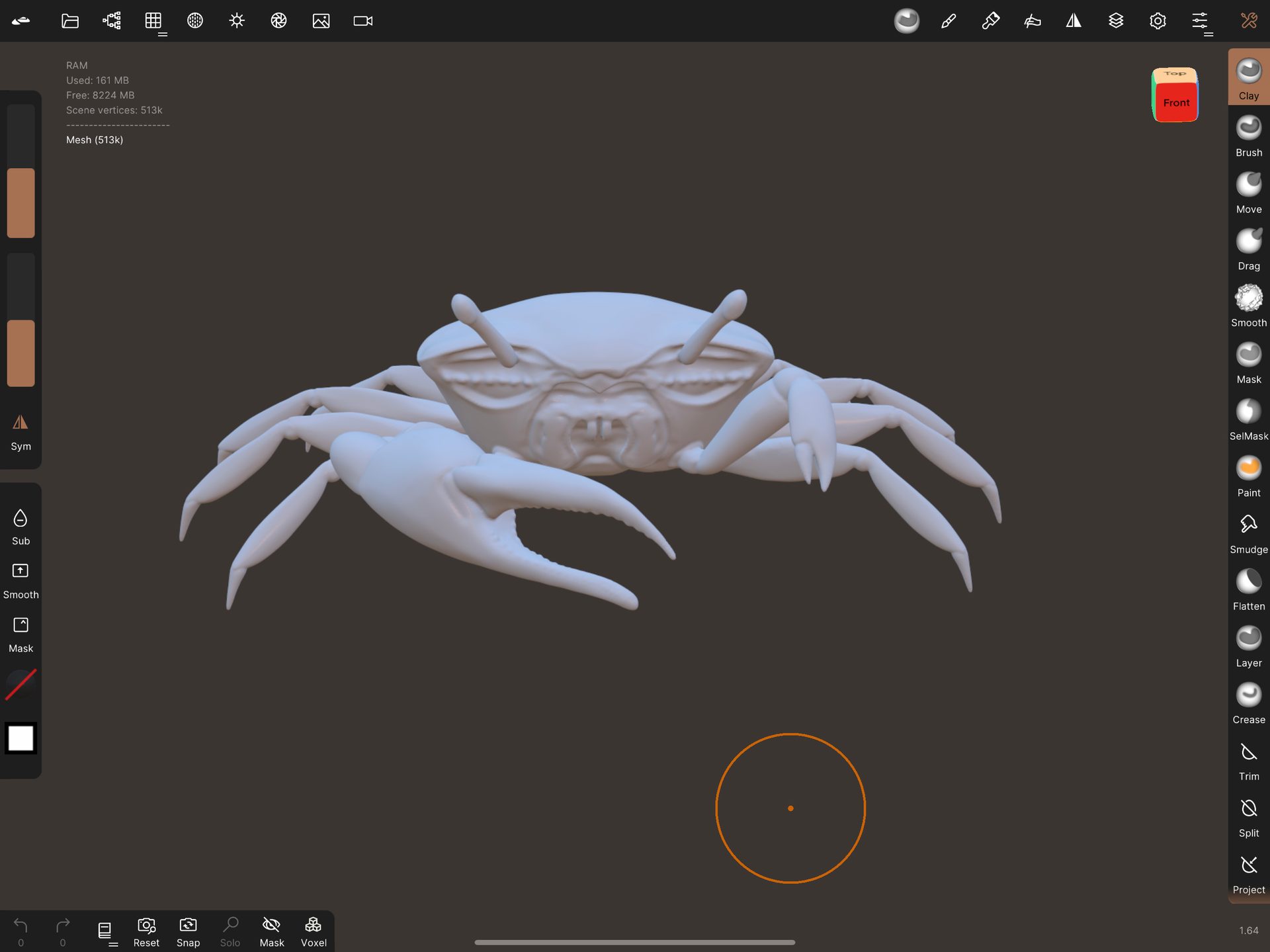
Crab Freeform Sculpt | ZBrush | Quixel Mixer | C4D
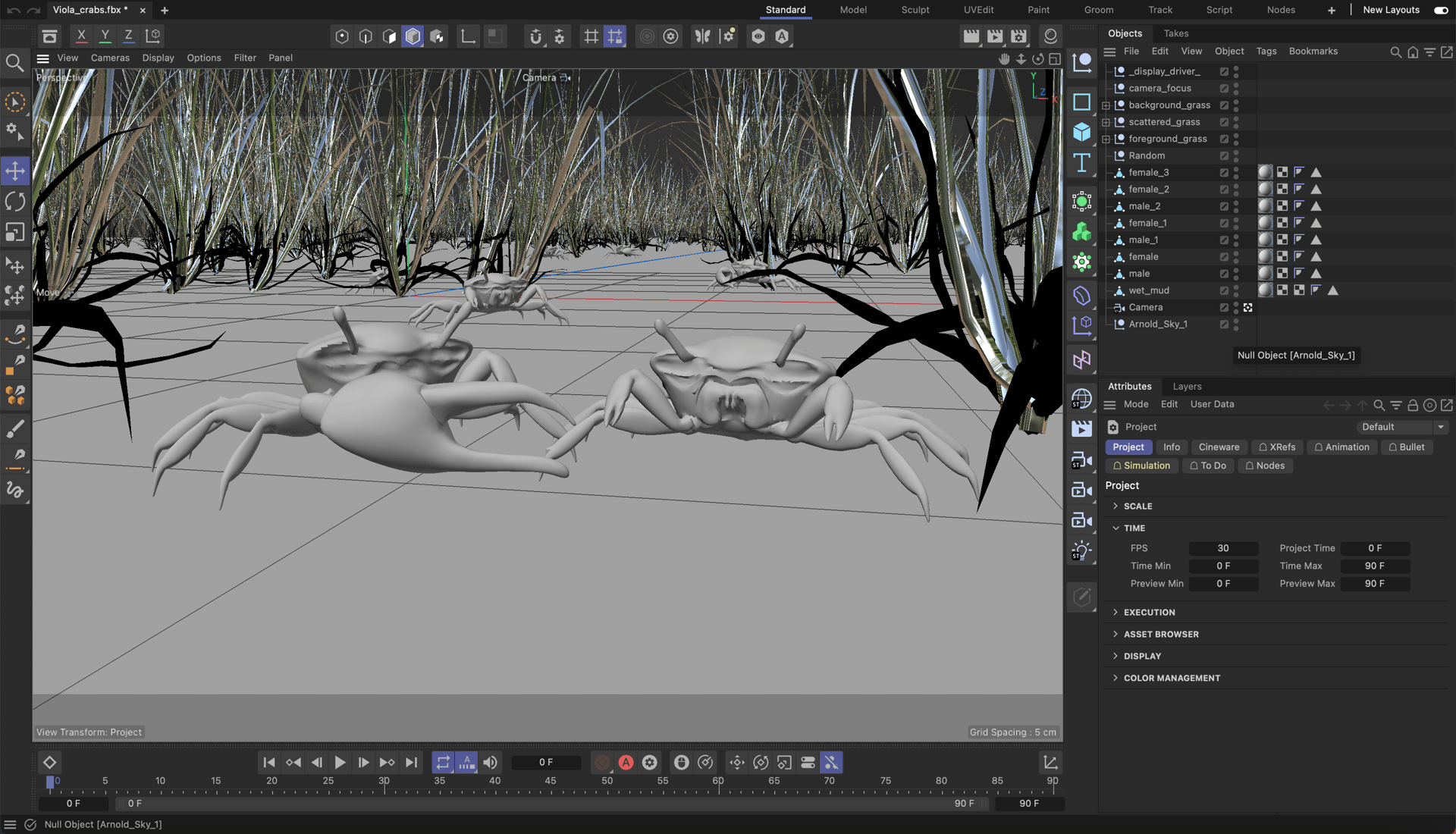
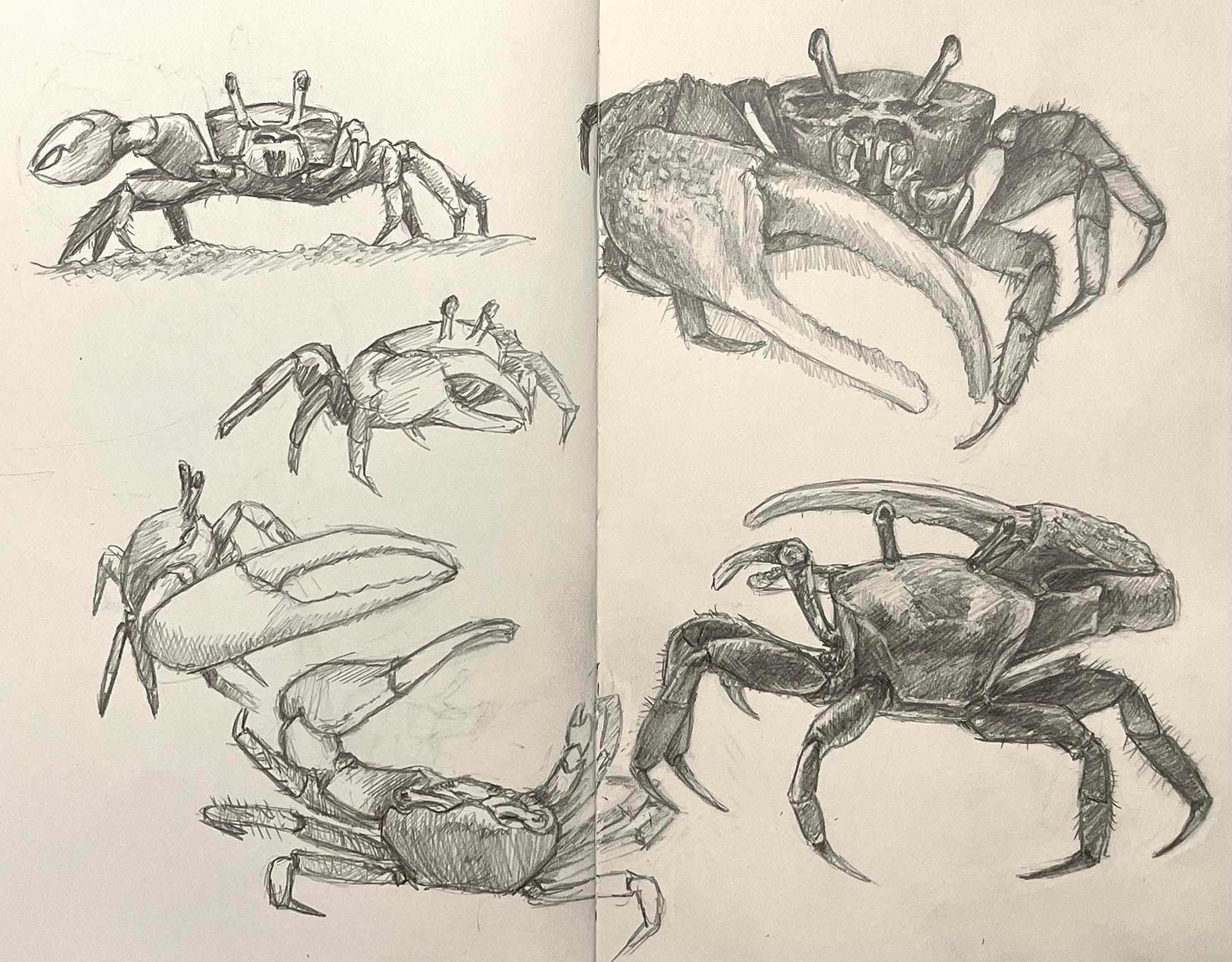
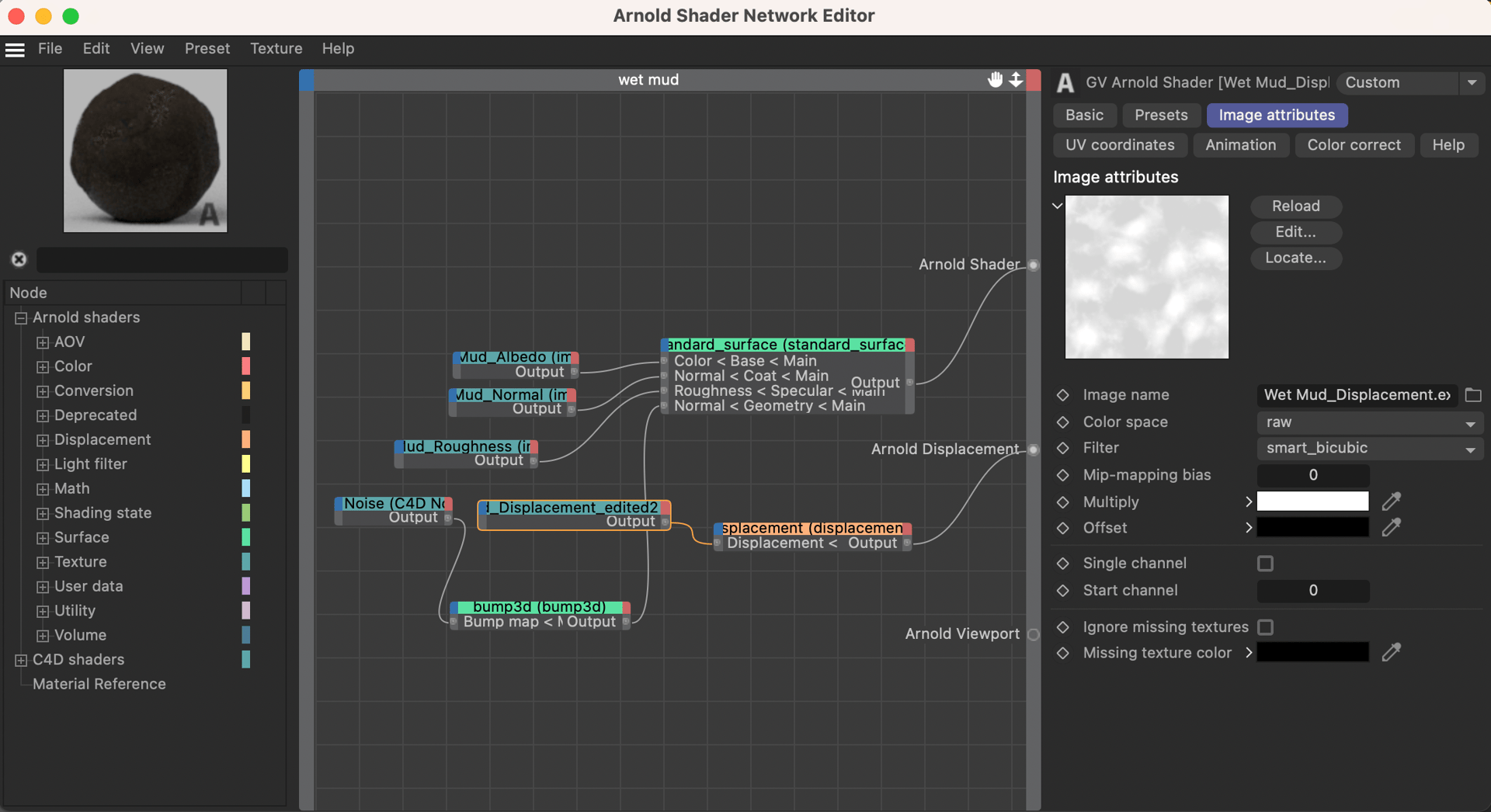
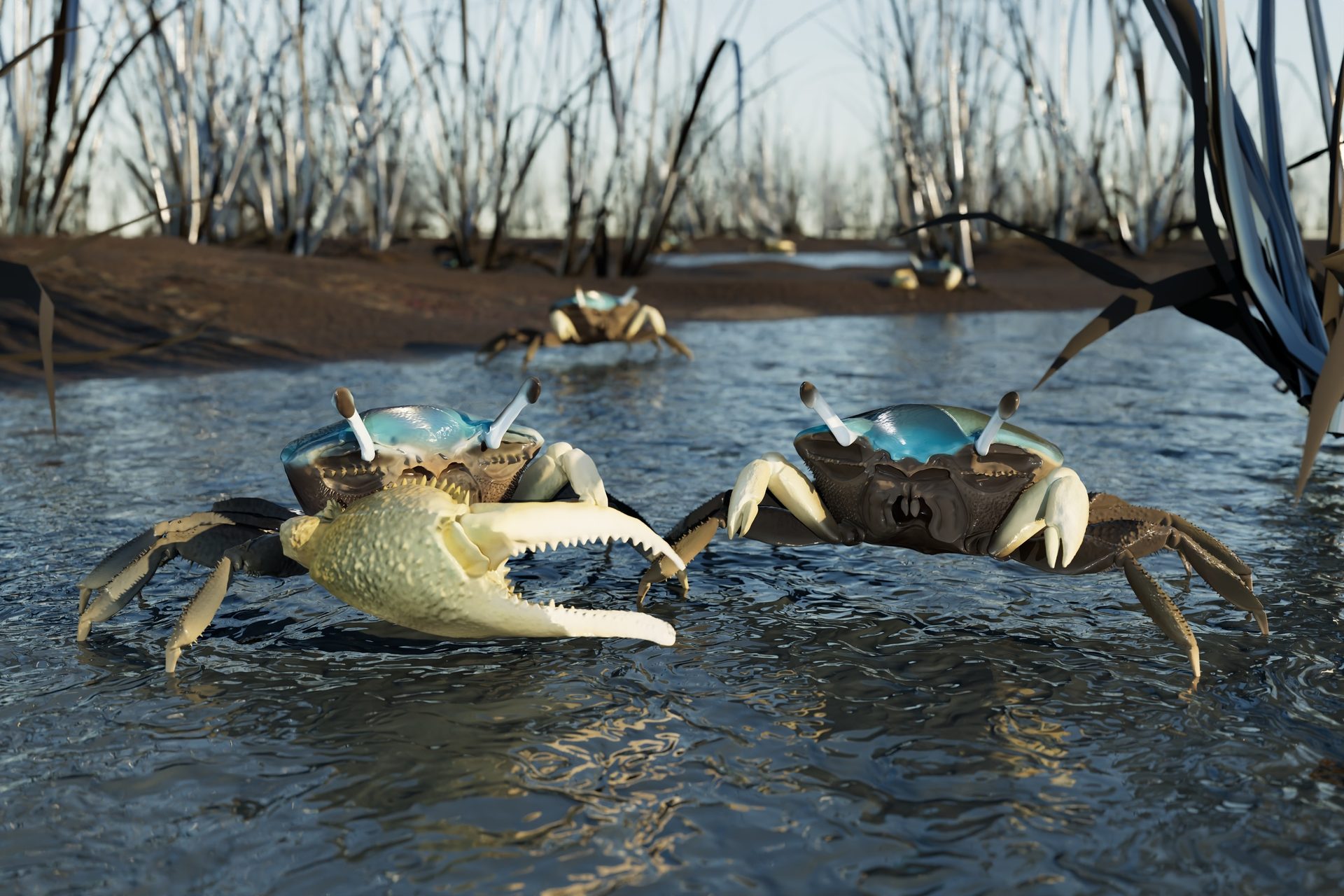
This was the first 3D modeling assignment. Using a standard sphere, we are to create an organism of our choosing. I chose the Fiddler crab. I wanted to challenge myself and create both the male and female fiddler crabs since the males had an obvious example of sexual dimorphism (the one larger claw).
To start, the anatomy of the crab was studied from all angles. Then in Nomad Sculpt, I started modeling out the basic shape of the crab. I then took the model into ZBrush where ZRemeshed and further refined and detailed the model. After being satisfied with the details in the model, I decimated and projected the detailed mesh onto a subdivided lower-resolution mesh. I then polypainted the models in ZBrush and brought the finished models into C4D.
In C4D, I wanted to create a realistic environment since these crabs are typically found in saltwater marshes.
I took materials from Quixel Mixer for 'Wet Mud' and imported the albedo, roughness, normal, and displacement maps into a material that I then applied to a plane. I wanted to have varying heights for the ground, so I added segments (100 x 100) to the plane object so that there was more geometry to start with. Then in the Arnold tag, I increased the displacement height to create the effect I desired. I then added a second plane that I applied a water surface material with noise added to create the ripple effect.
The grass was sourced from C4D's asset library and placed using Arnold scatter to have the grass randomly populate the environment.
Arnold sky as well as an Arnold point light were used to illuminate the scene.
Floresta Game Asset | Blender
Collaborative project where an interactive educational game was created via Figma to teach middle schoolers about the REM cycles of sleep.
3D assets were created in Blender and exported as still images to be used on Figma.
**Figure in bed was modeled by teammate, but everything else was created by me
Spider Model for Scrollytelling Website | Nomad Sculpt | ZBrush
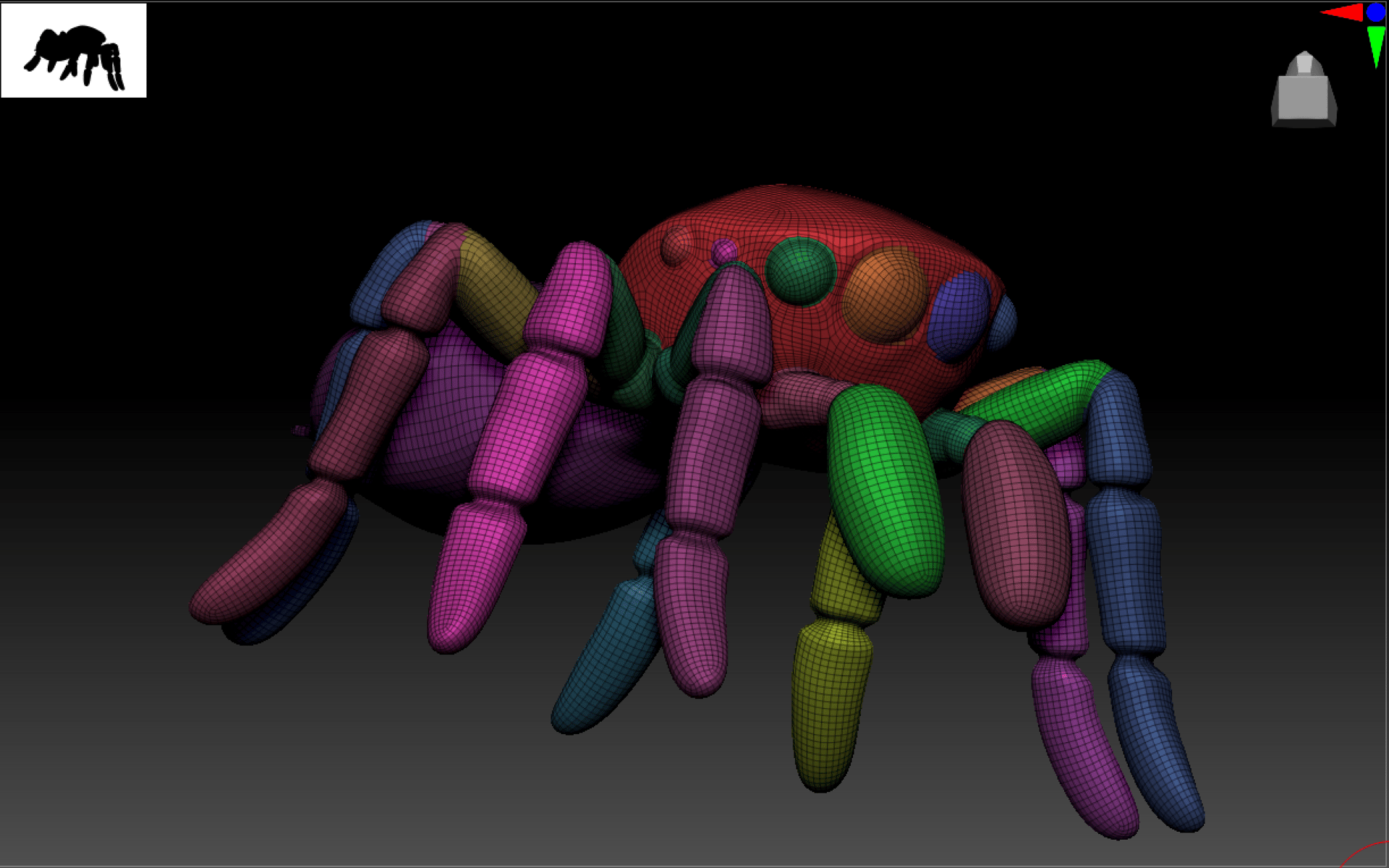
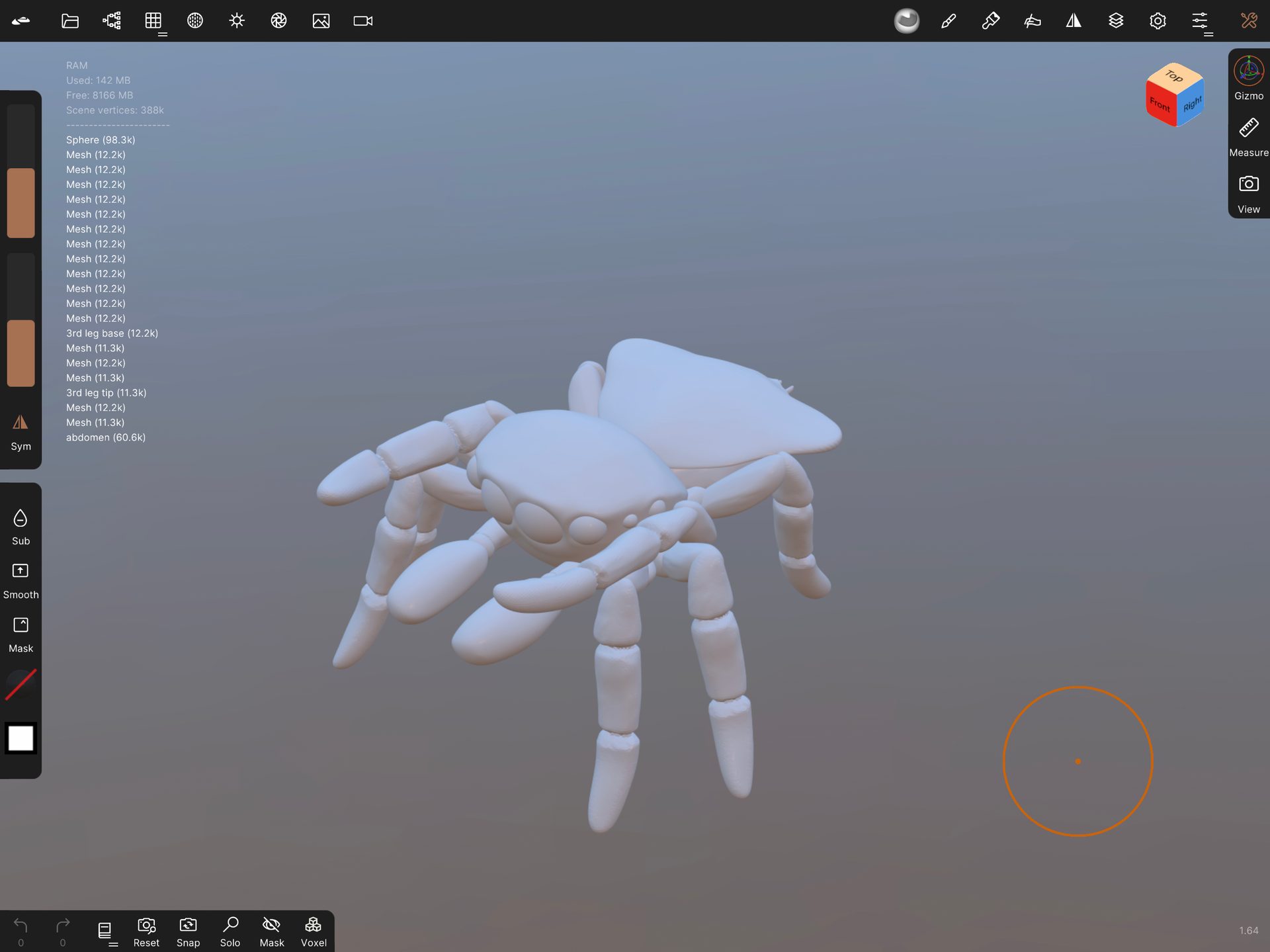
Created 3D model of peacock spider for scrollytelling website.
Model was created in Nomad Sculpt, then brought into ZBrush to be separated into polygroups to help with animating the limbs.
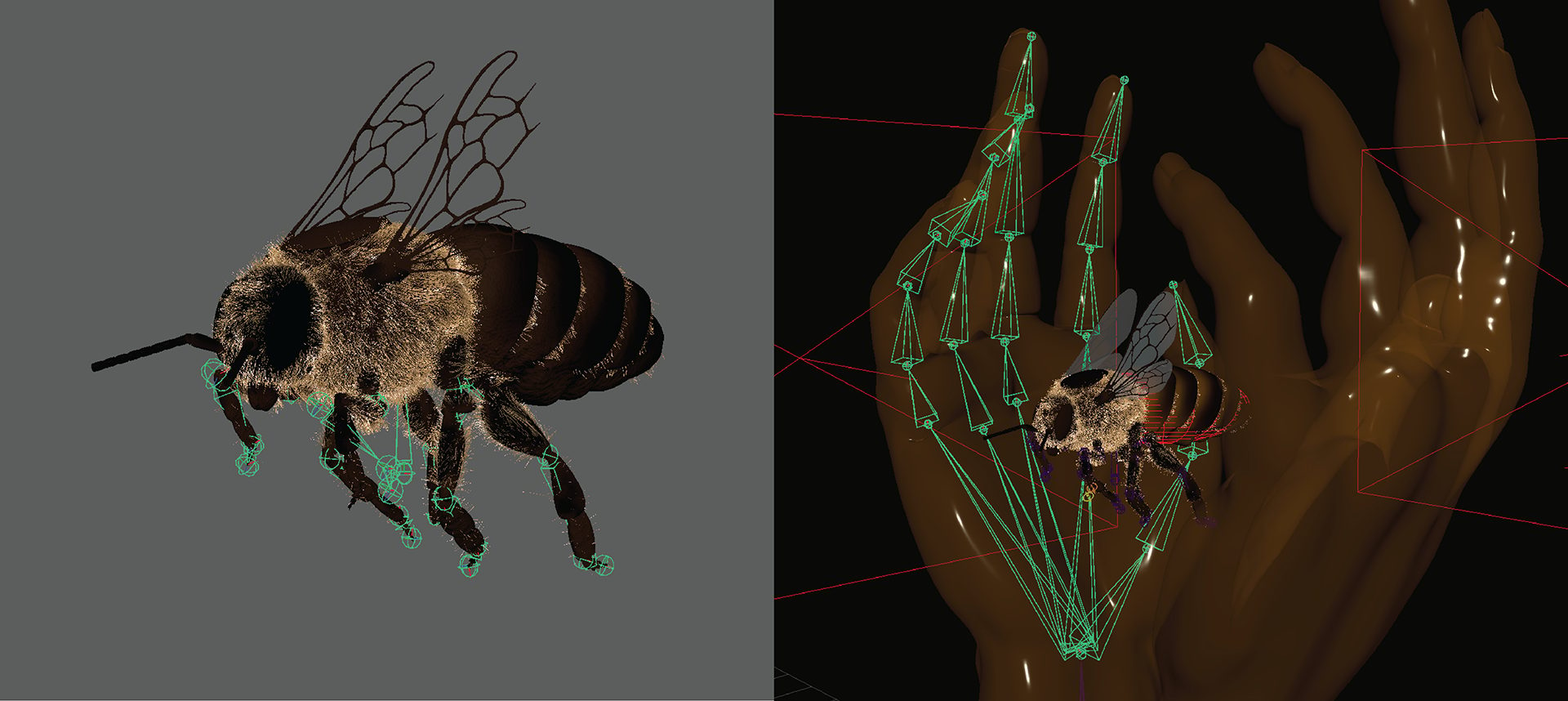
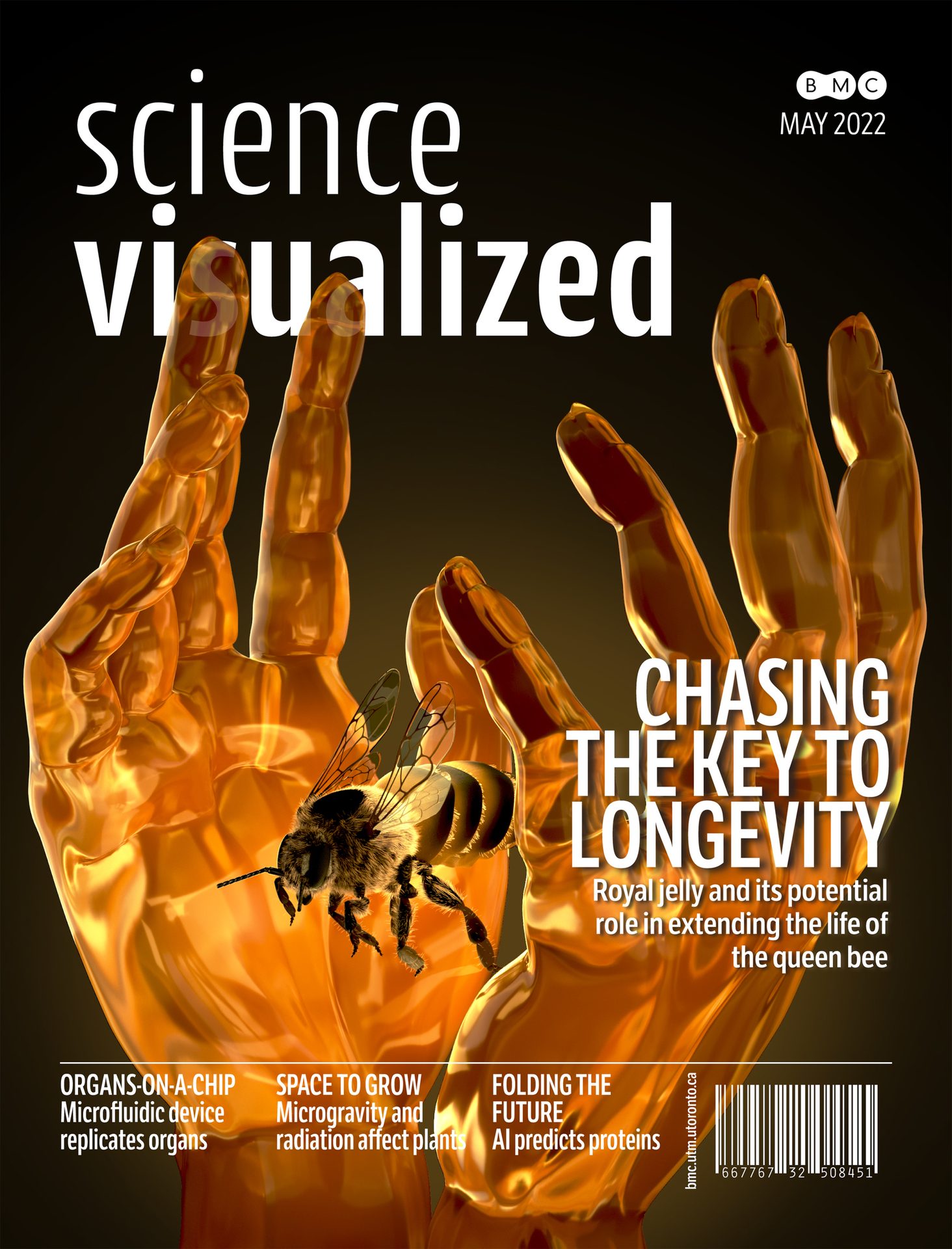
Maya Bee Cover | Maya
All 3D models used for this editorial cover were completely created in Maya. The bee was modeled in Maya, with GenX hair used for the carapace. Both the bee and the hands were then rigged and staged to fit the composition needed for the editorial image. Lights were added as I wanted to create a glow-like effect emitting from the bee. The hands had materials with subsurface scattering and transparency to mimic honey.
The overall goal of this piece is to entice a potential reader to read about the featured scientific article. This article is based on researchers discovering more keys into how queen bees can live longer than worker and nurse bees due to the royal honey they were fed as larvae.
Peacock Spider Scrollytelling Website | Nomad Sculpt | ZBrush | Figma | Tableau | Affinity Designer
To better inform the user of the movements involved in the mating dance of a male peacock spider, I determined that using an interactive digital media such as scrollytelling would be the best option.
This scrollytelling website prototype contains many types of media to best help educate the user about peacock spiders. Digital illustrations are created to show the diverse coloration that can be found on different spiders. A 3D spider model was created in Nomad Sculpt and refined in ZBrush to help show via animation the different components of the mating dance. An interactive map created on Tableau shows the location of each species of spiders.
Data Visualization: Relationship Between Employment and Health Insurance Coverage | Tableau
The question I was trying to understand and visualize was how employment and healthcare coverage were linked in the United States of America. I took data from the US Census from 2014-2018 and after cleaning up the data set I was able to create a bi-variate interactive map that shows the relationship between income and healthcare coverage over time.
My next question was "Who exactly are unemployed/uninsured?". Using survey data from the same US Census, I was able to create racing line charts of the job industry of those who are unemployed/uninsured over time, and a more specific income bracket of those who are unemployed/uninsured over time.
My final question was "Why are they unemployed/uninsured?" Again taking survey data from the US Census, I was able to visually correlate how many people claimed the same specific reasons for not working and reasons for not taking health insurance over time.
Dino Game | Blender | Unity
This collaborative group project involved creating a 3D environment that can be navigated by the user using a stegasaurous. The target audience is middle schoolers. The goal of this educational game is to teach the user about the environmantal aspects that are different in the Late Jurassic Period compared to present day. Environmental elements such as CO2 in the atmosphere, precipitation, temperature, and the plants that would have flourished there at that time. Once the ideal environment is created, the rest of the dinosaur eggs will hatch. This is one module planned out of many. Each module will be a different extinct species that lives in a specific period of time. This way the user will learn about each period of time through trial and error. It is a puzzle game as there is a certain recipe that needs to be discovered in order to beat the module.
The 3D models were created in Blender, and then exported into Unity where ma and another team member wrote code to allow for camera movement and player movement.
Crab Game Test| Nomad Sculpt | ZBrush | Unity
This collaborative group project involved creating a 3D environment that can be navigated by the user using a stegasaurous. The target audience is middle schoolers. The goal of this educational game is to teach the user about the environmantal aspects that are different in the Late Jurassic Period compared to present day. Environmental elements such as CO2 in the atmosphere, precipitation, temperature, and the plants that would have flourished there at that time. Once the ideal environment is created, the rest of the dinosaur eggs will hatch. This is one module planned out of many. Each module will be a different extinct species that lives in a specific period of time. This way the user will learn about each period of time through trial and error. It is a puzzle game as there is a certain recipe that needs to be discovered in order to beat the module.
The 3D models were created in Blender, and then exported into Unity where ma and another team member wrote code to allow for camera movement and player movement.
TOF Heart Scrollytelling | Procreate | Nomad Sculpt | Figma | Vev | AfterEffects | ZBrush | Maya
GRAPHIC DESIGN
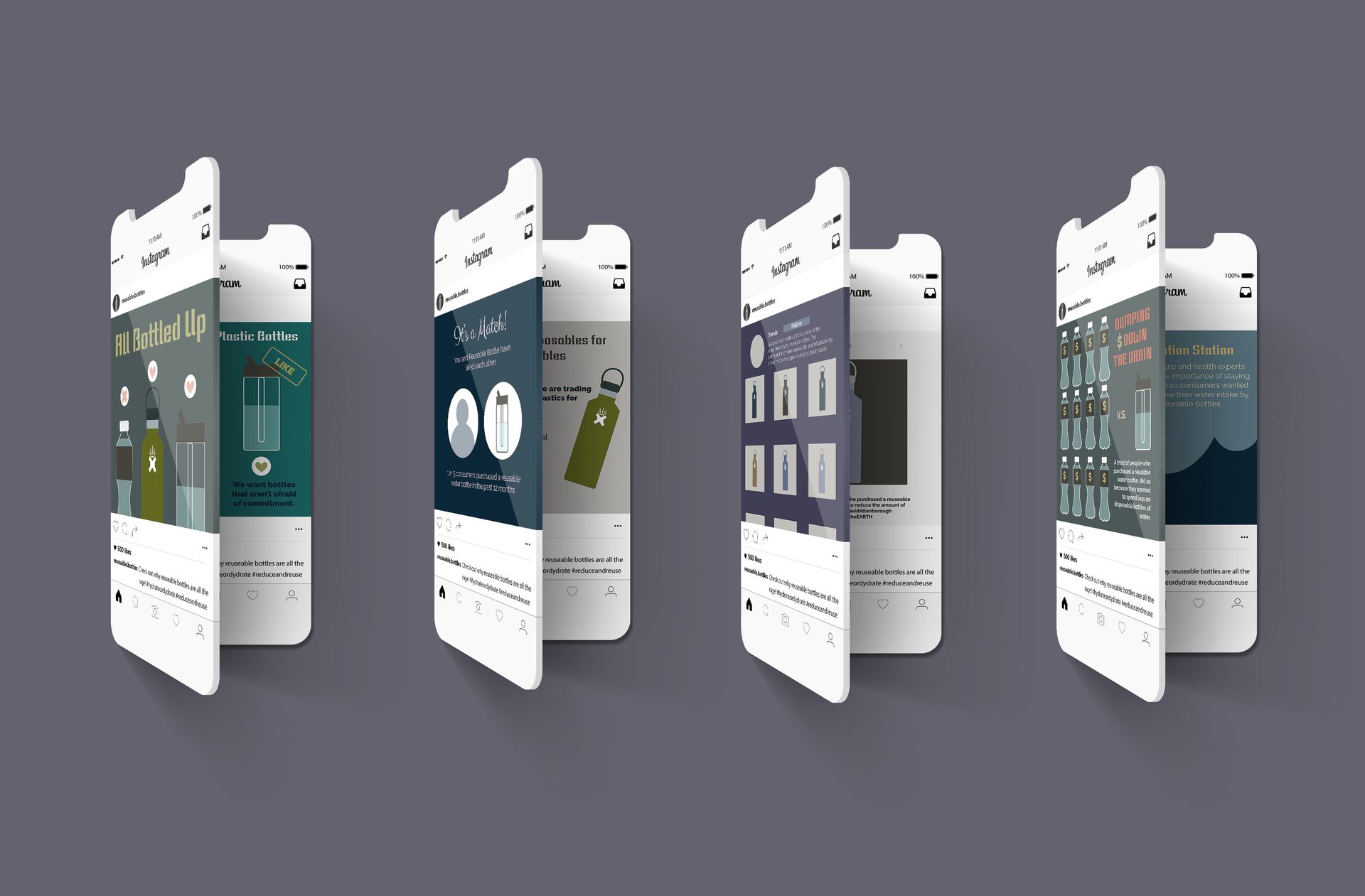

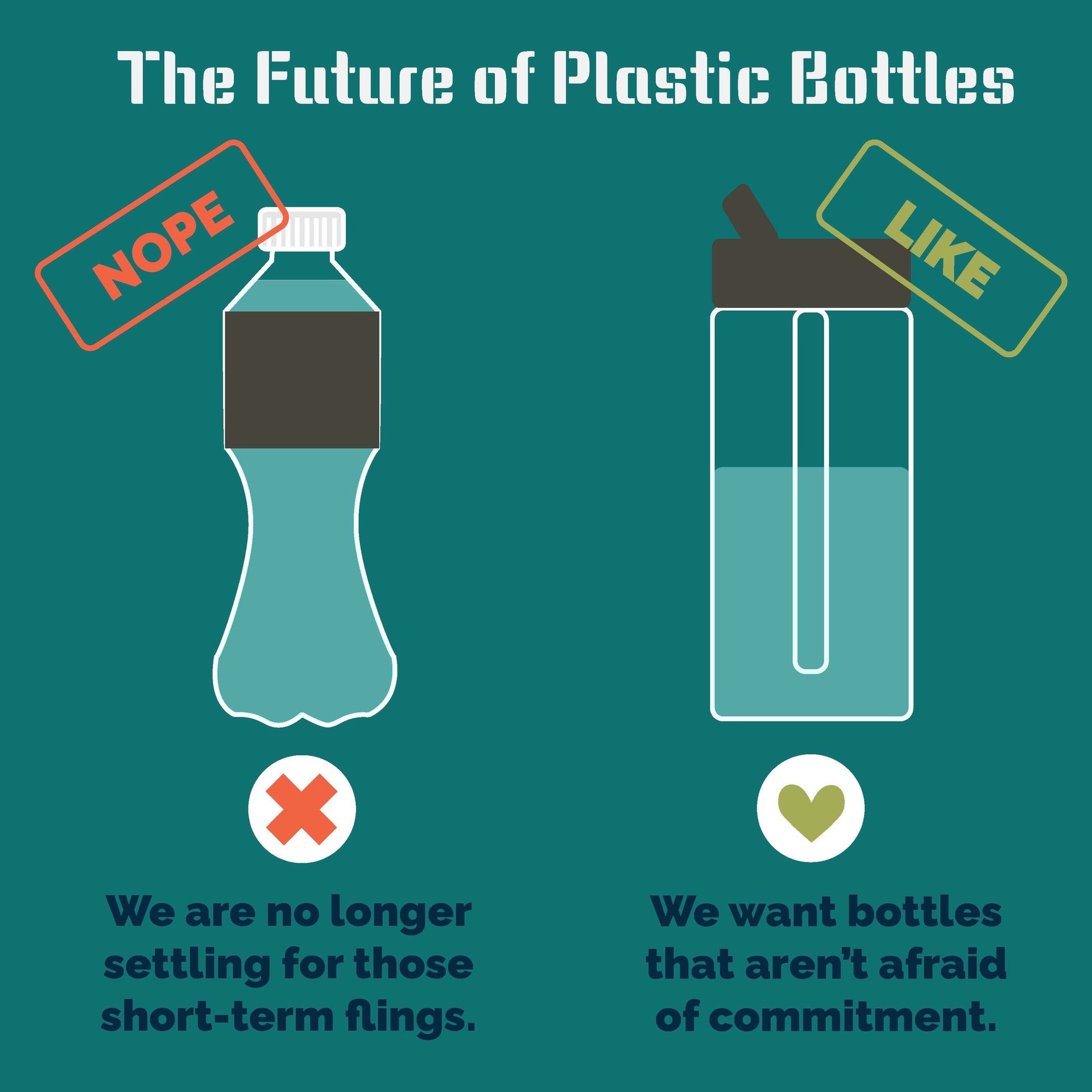
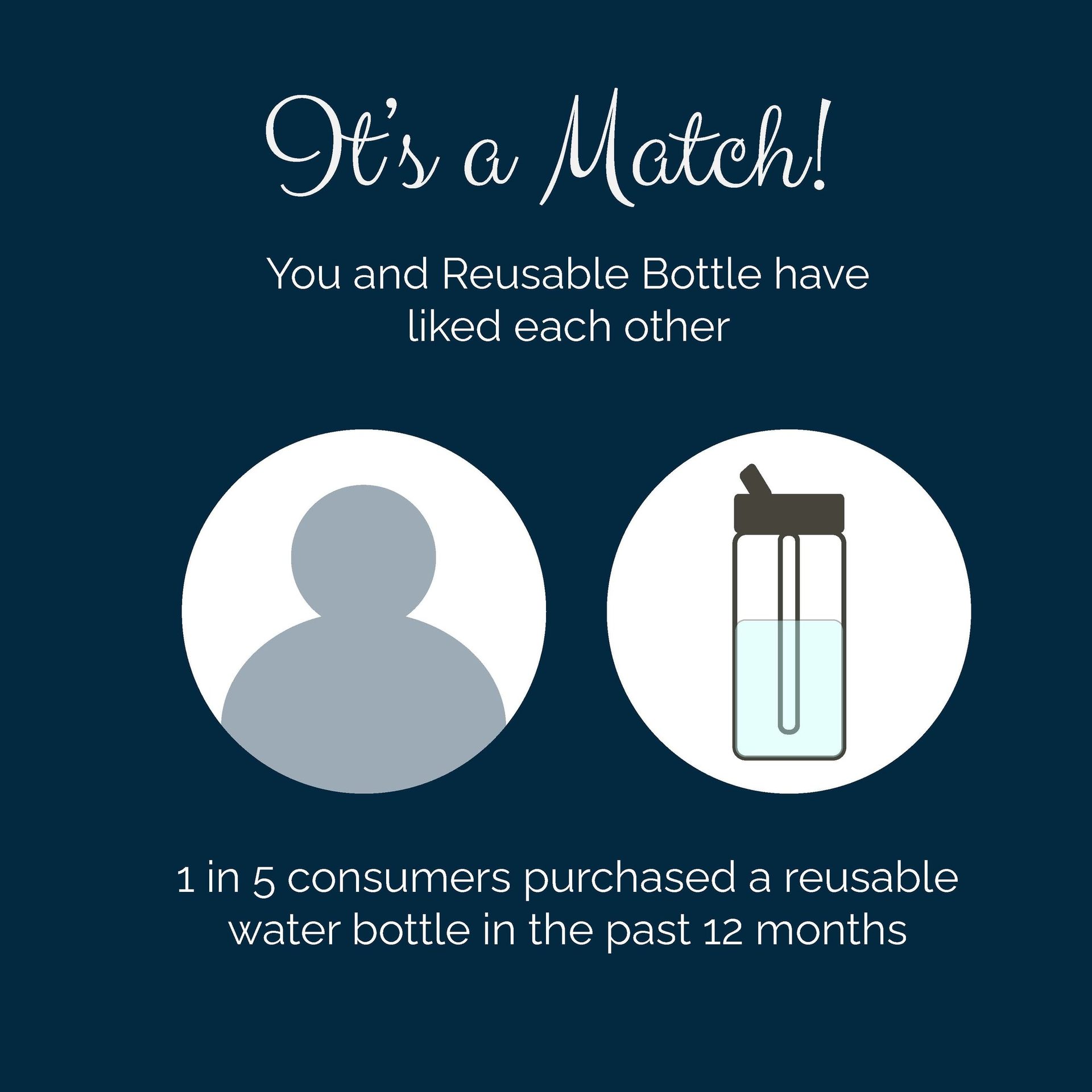
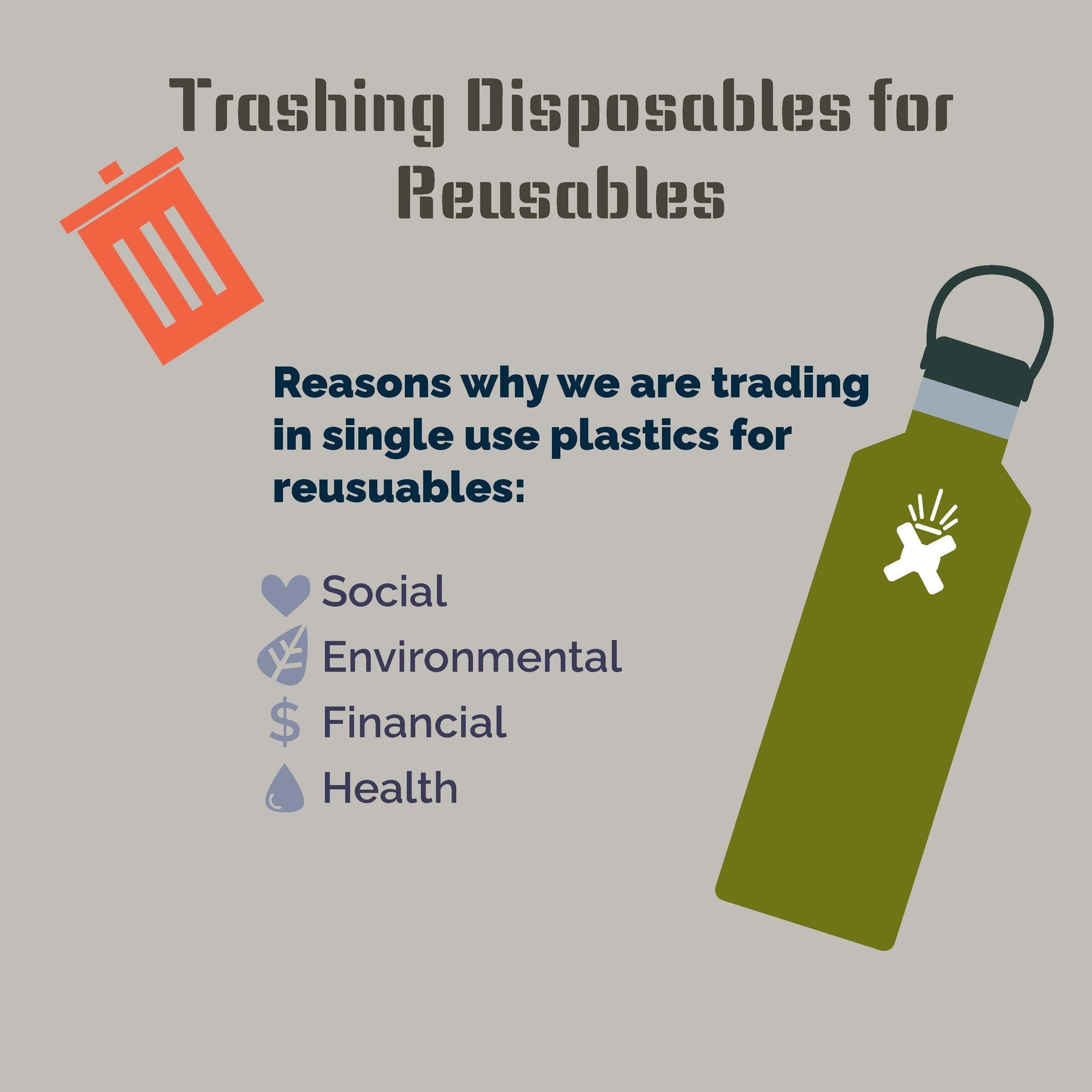


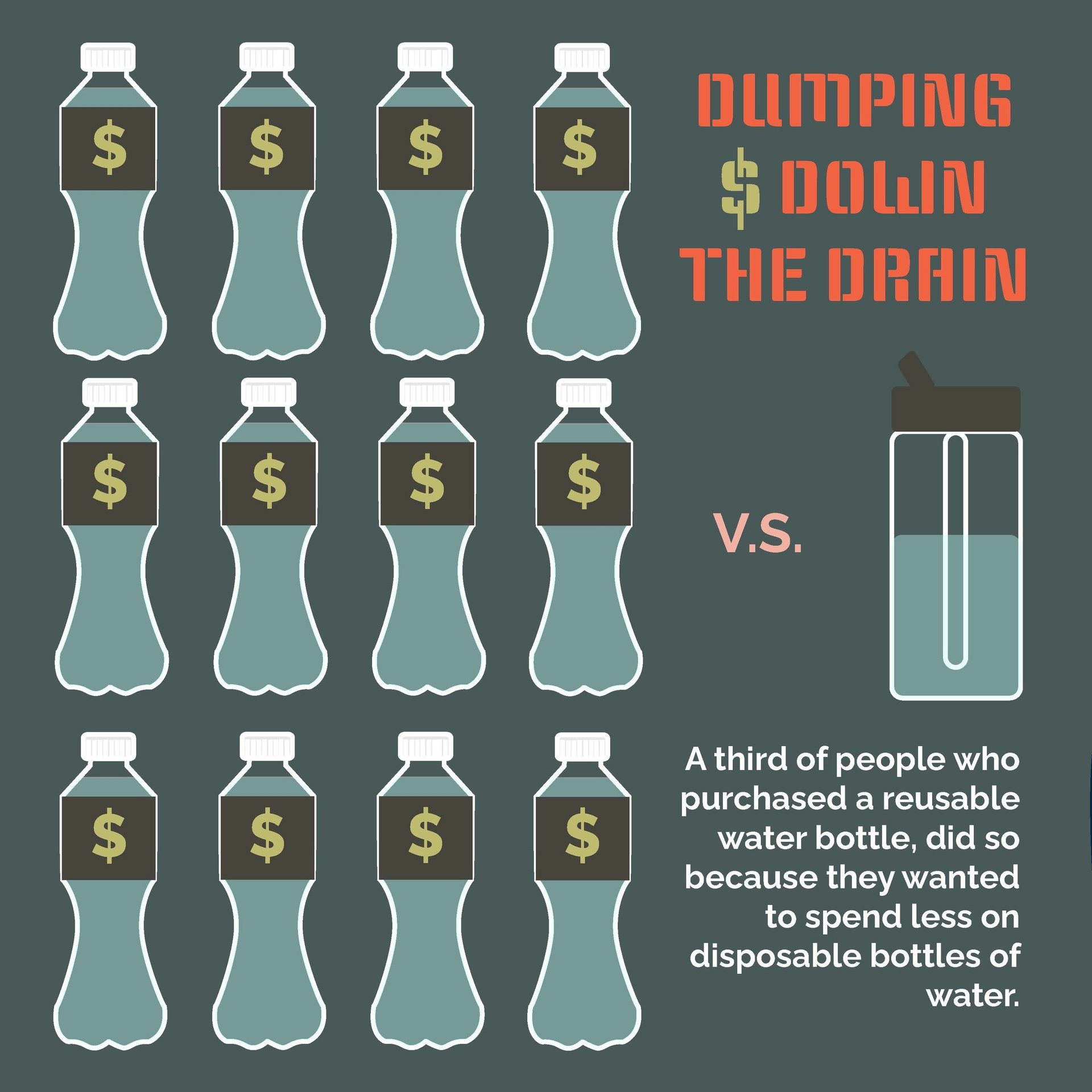
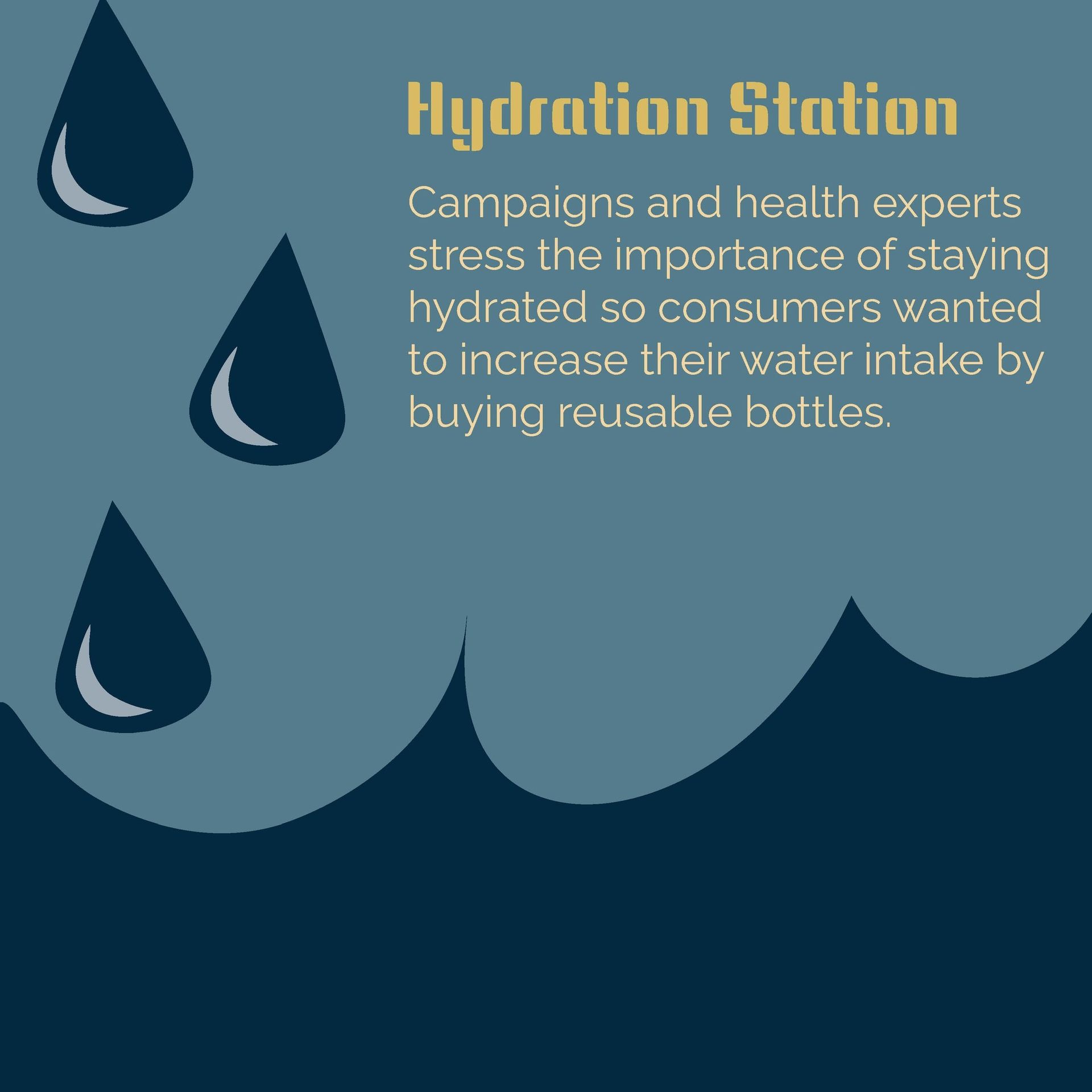
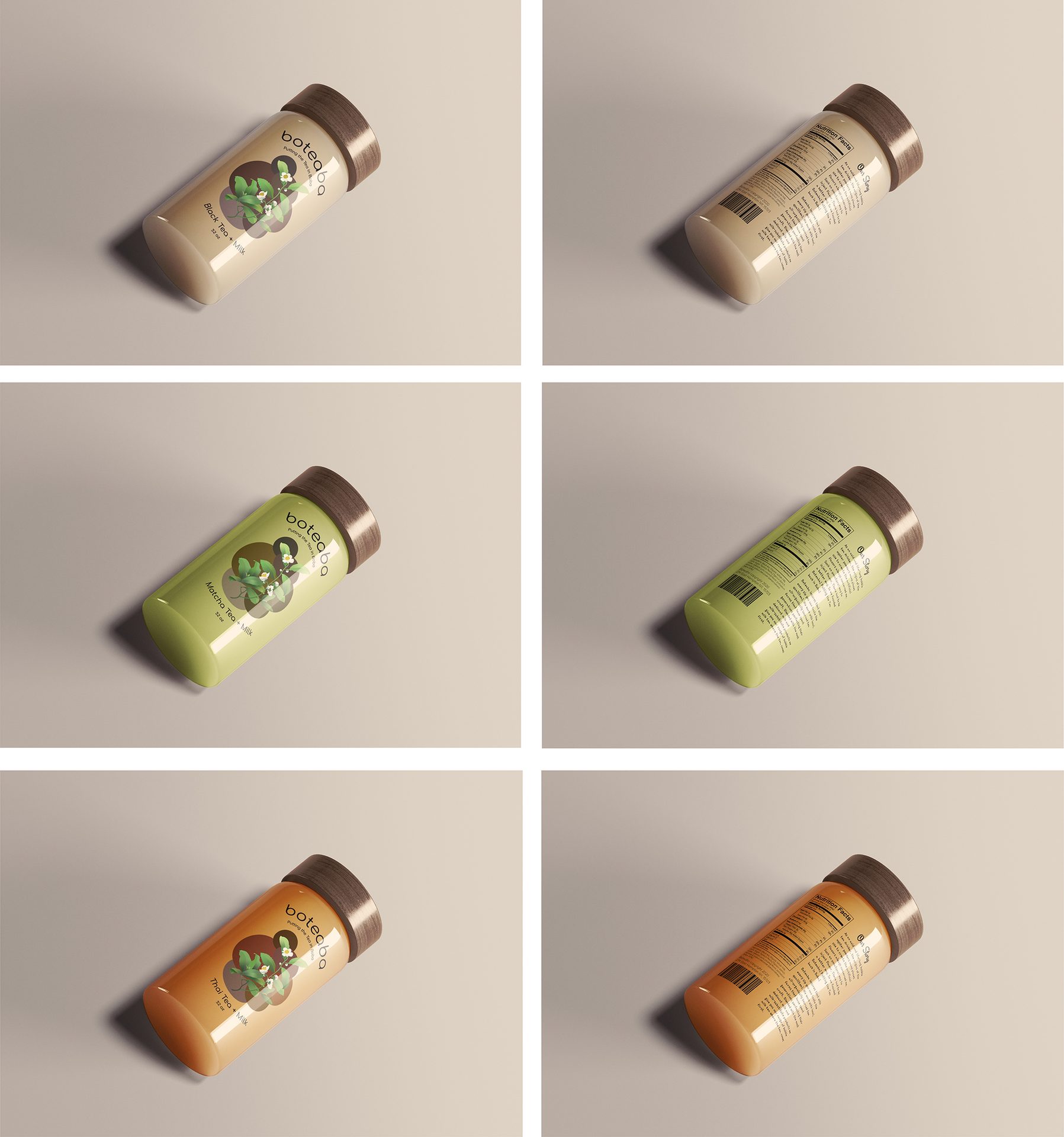
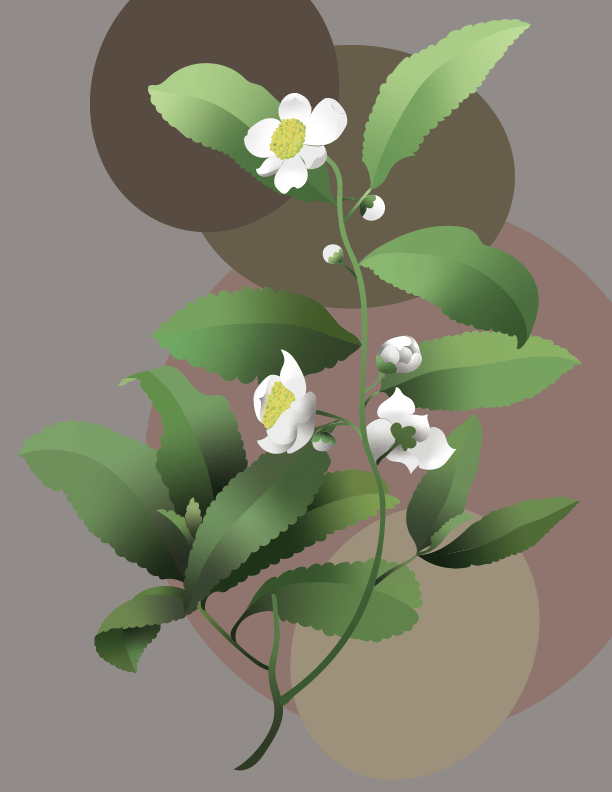
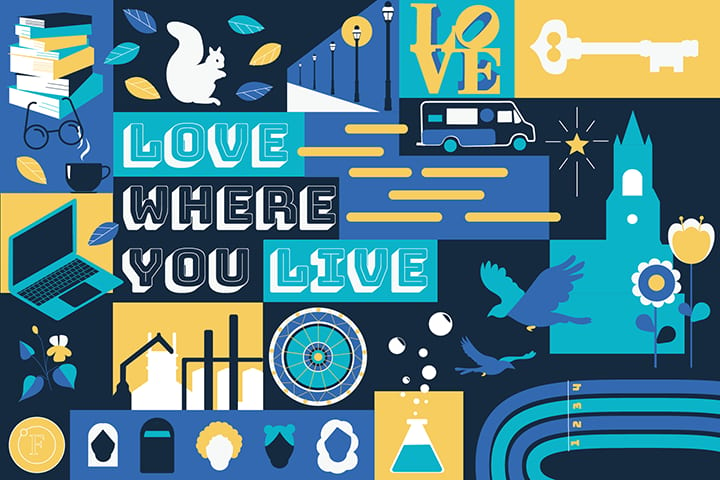
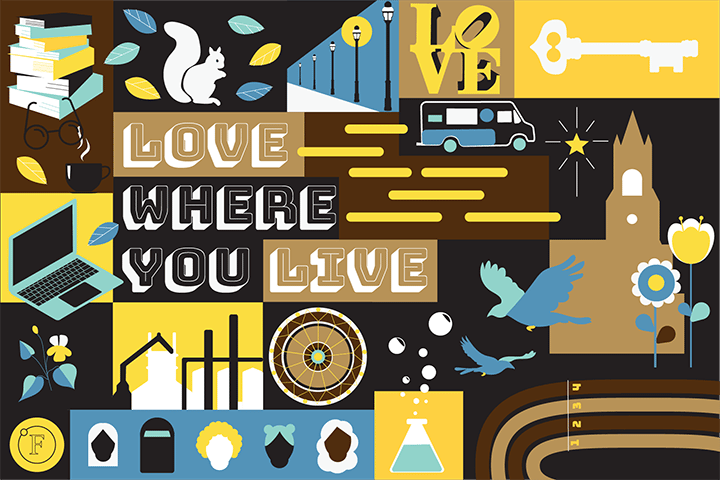
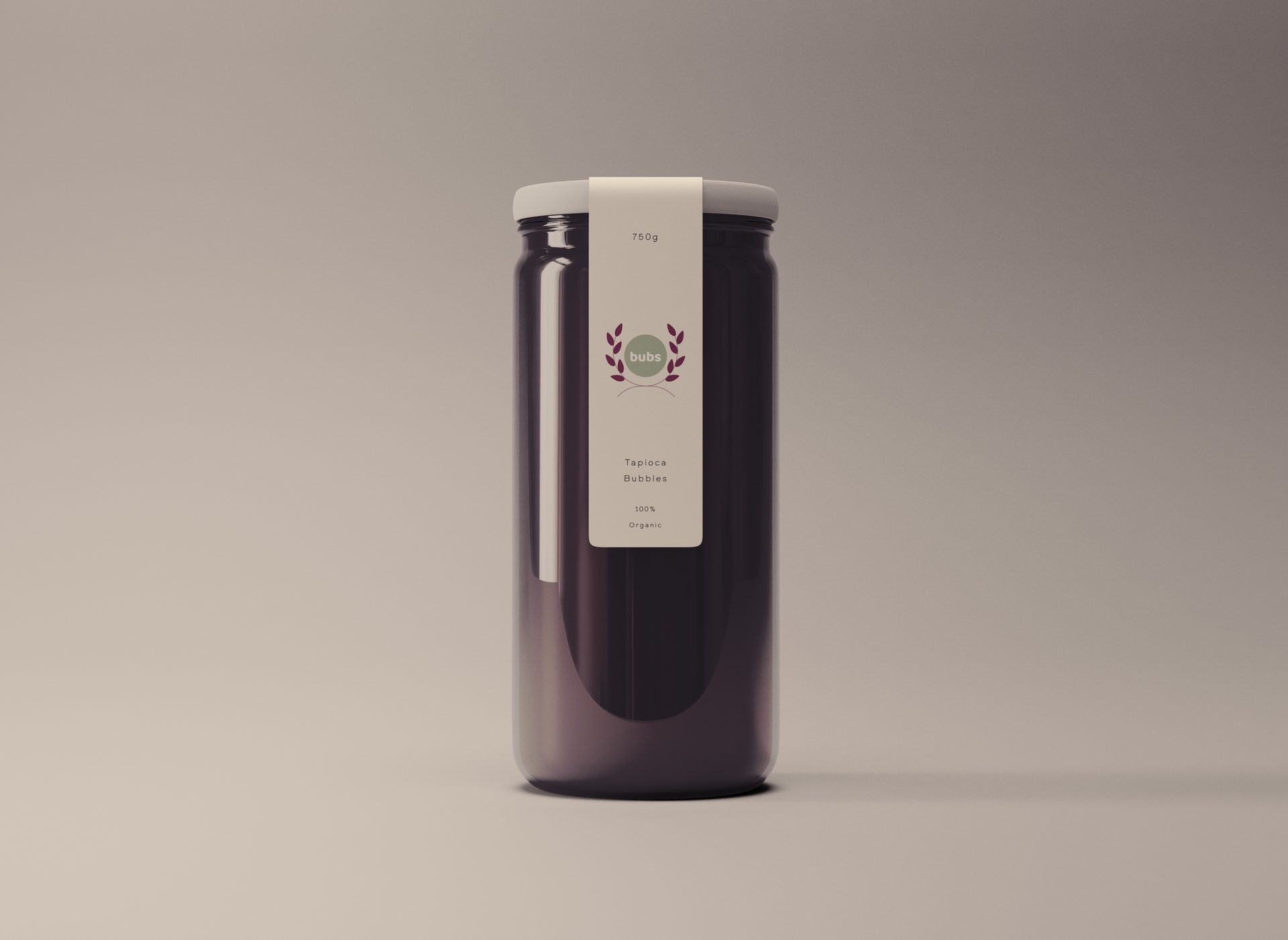
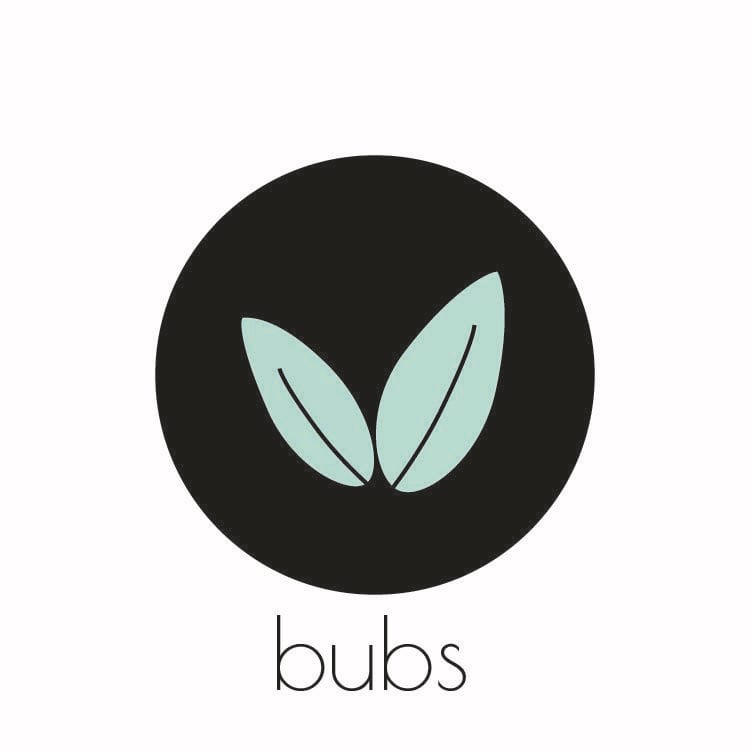


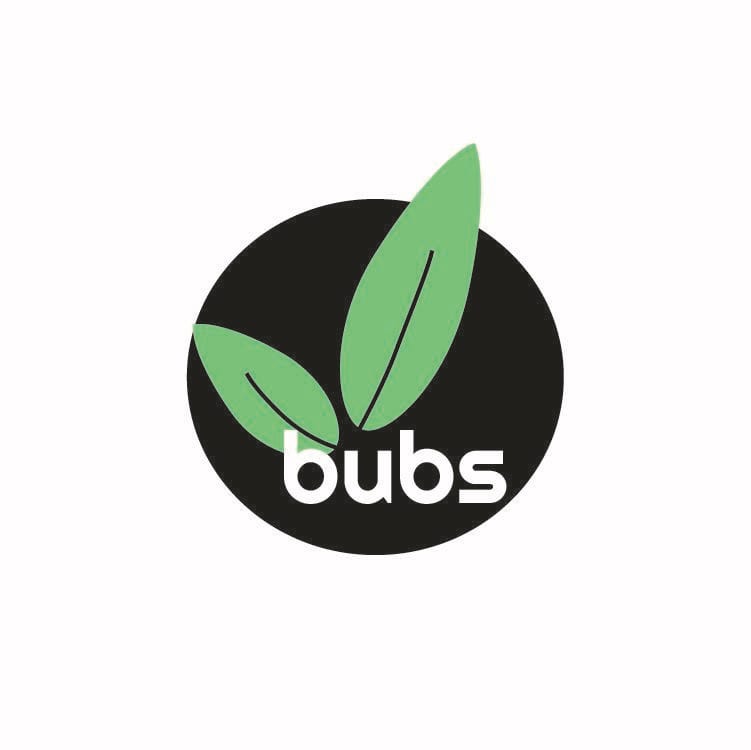


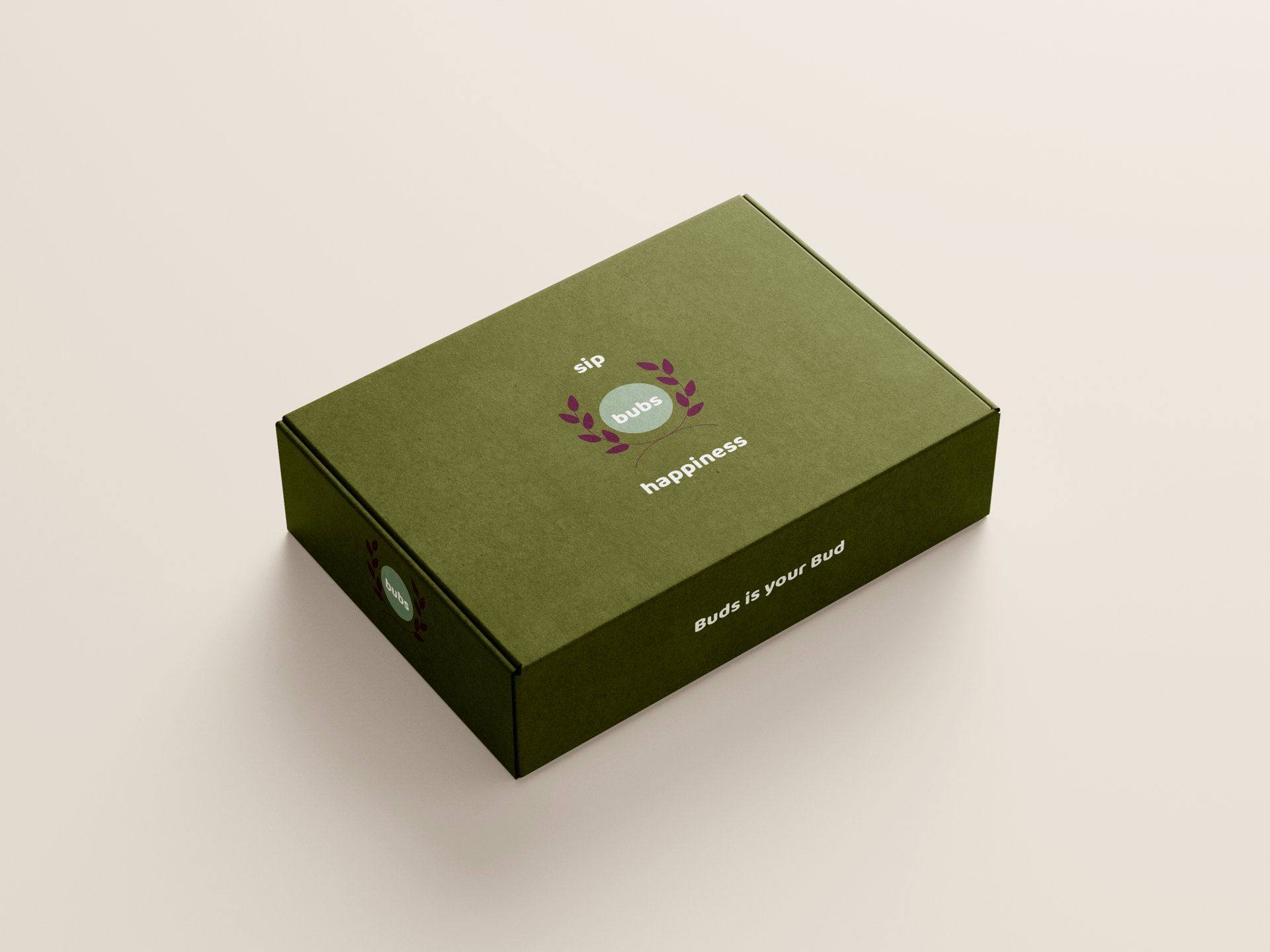
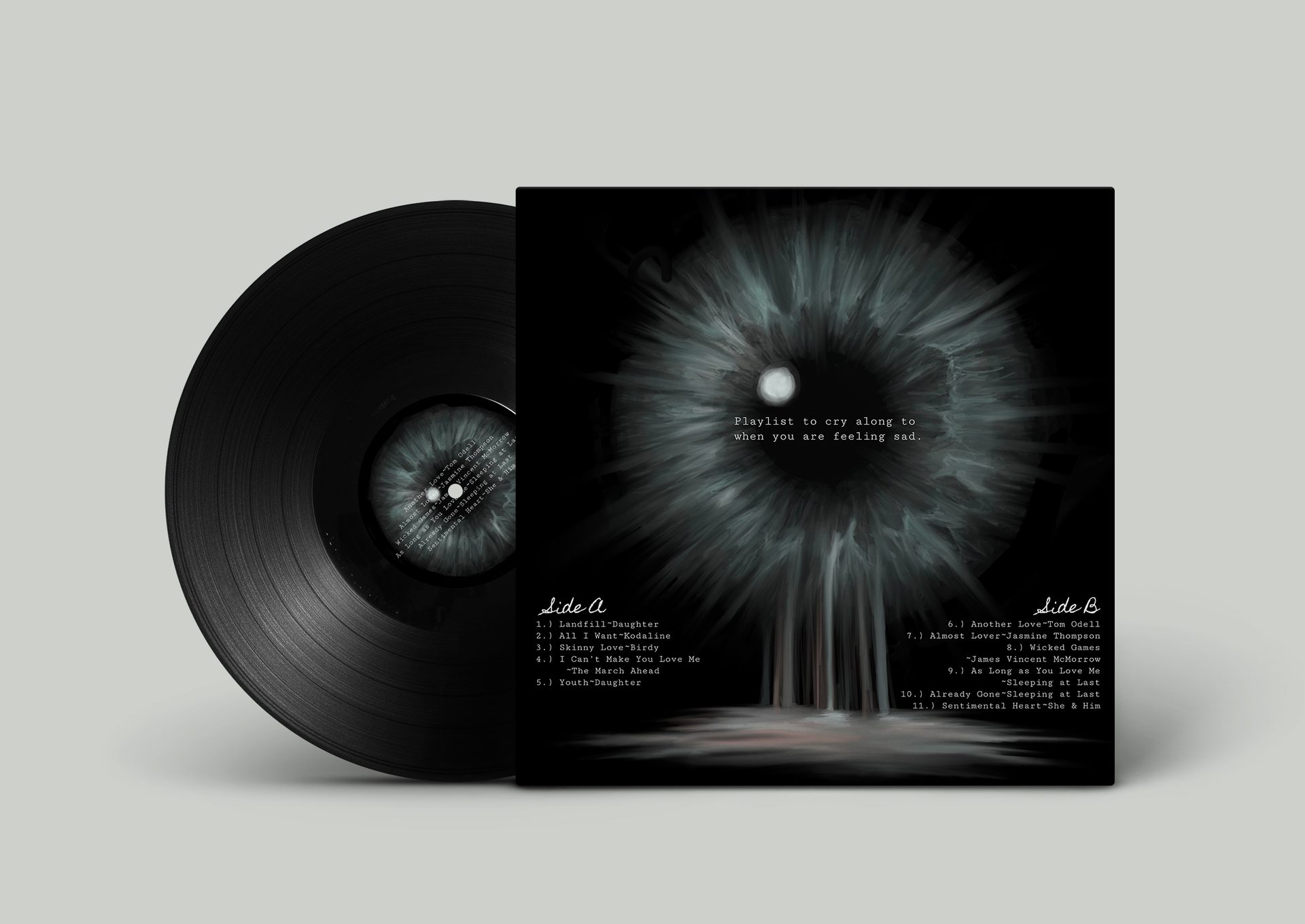
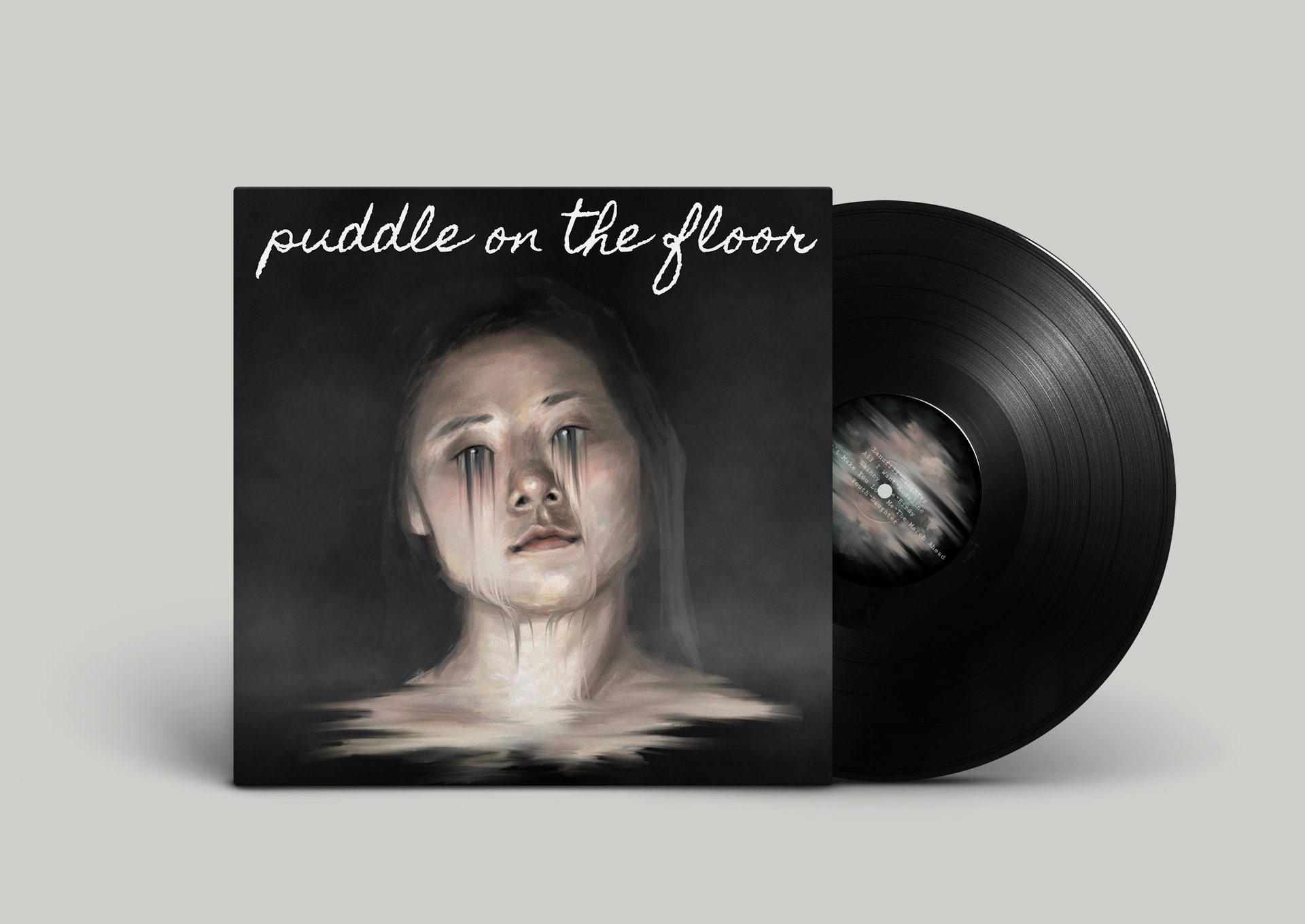
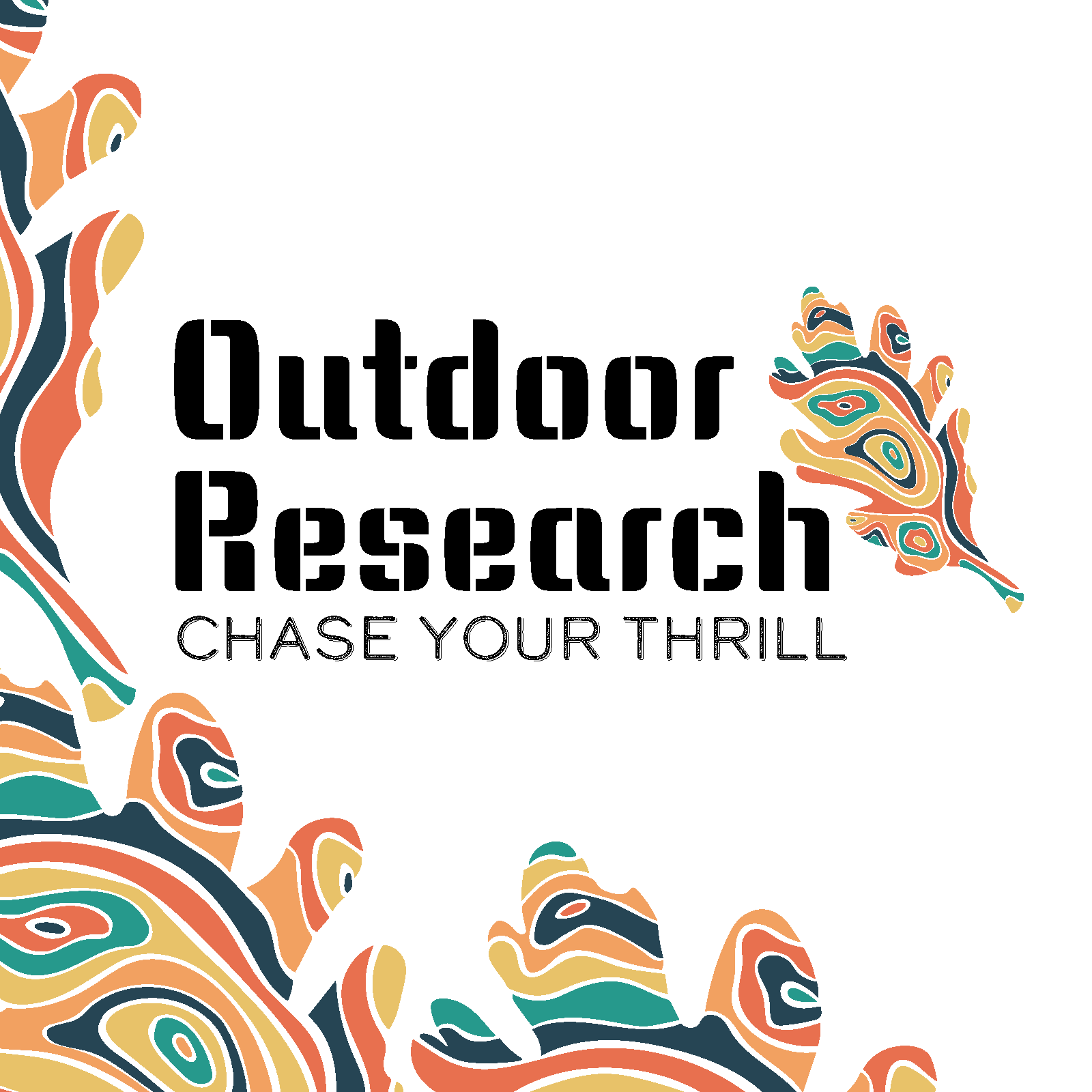
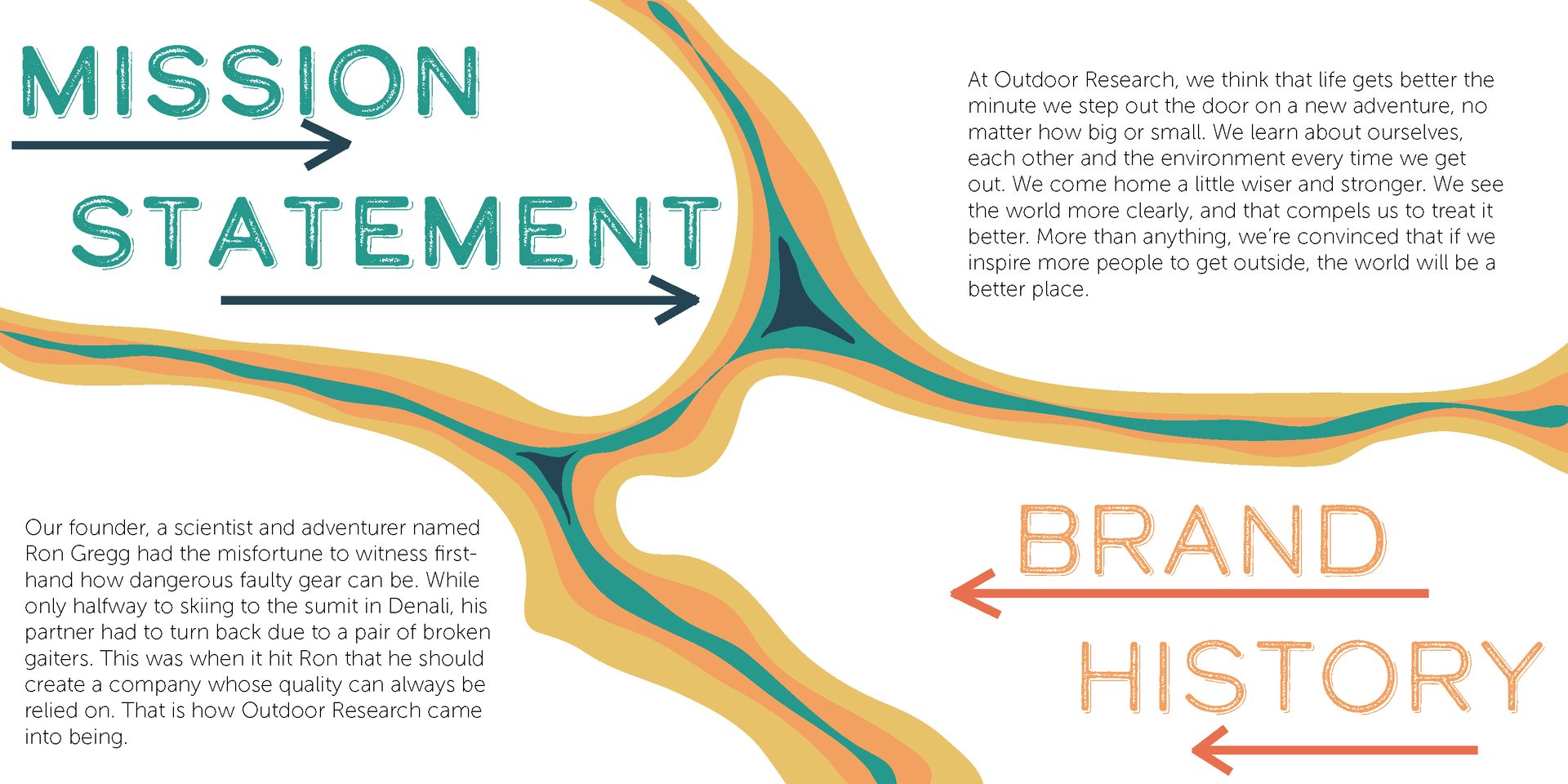
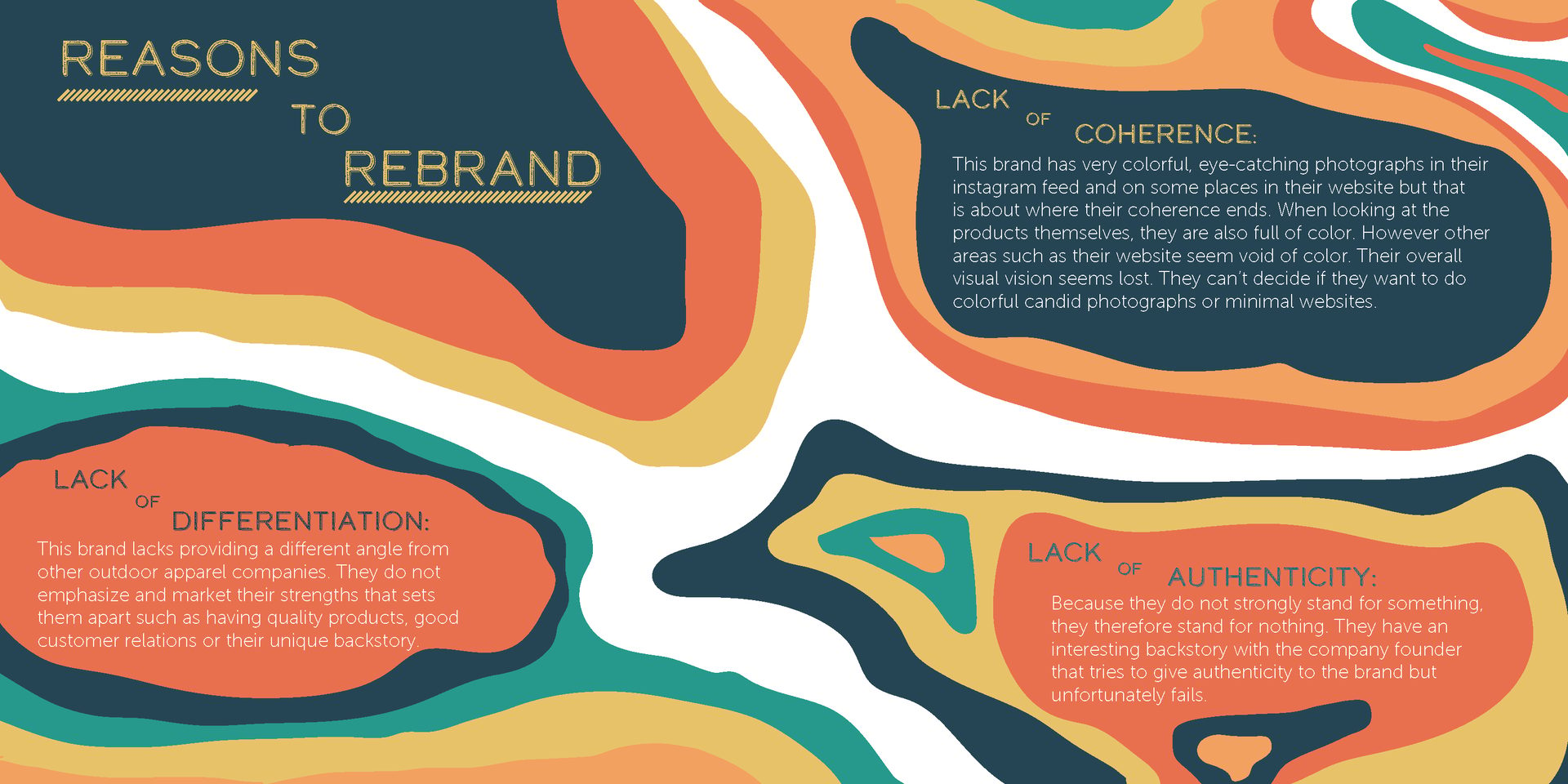
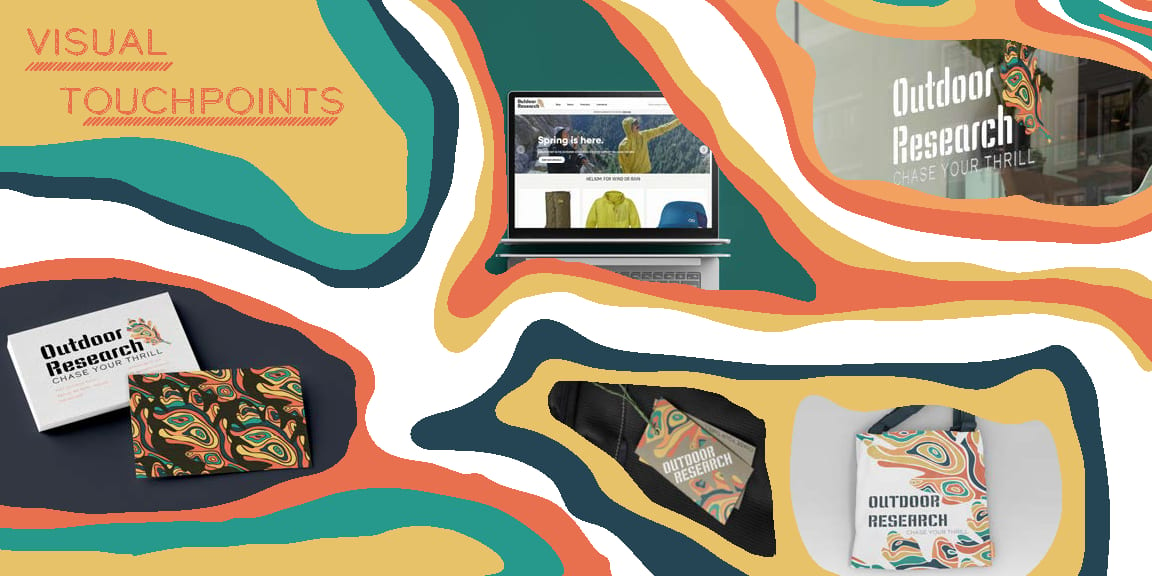
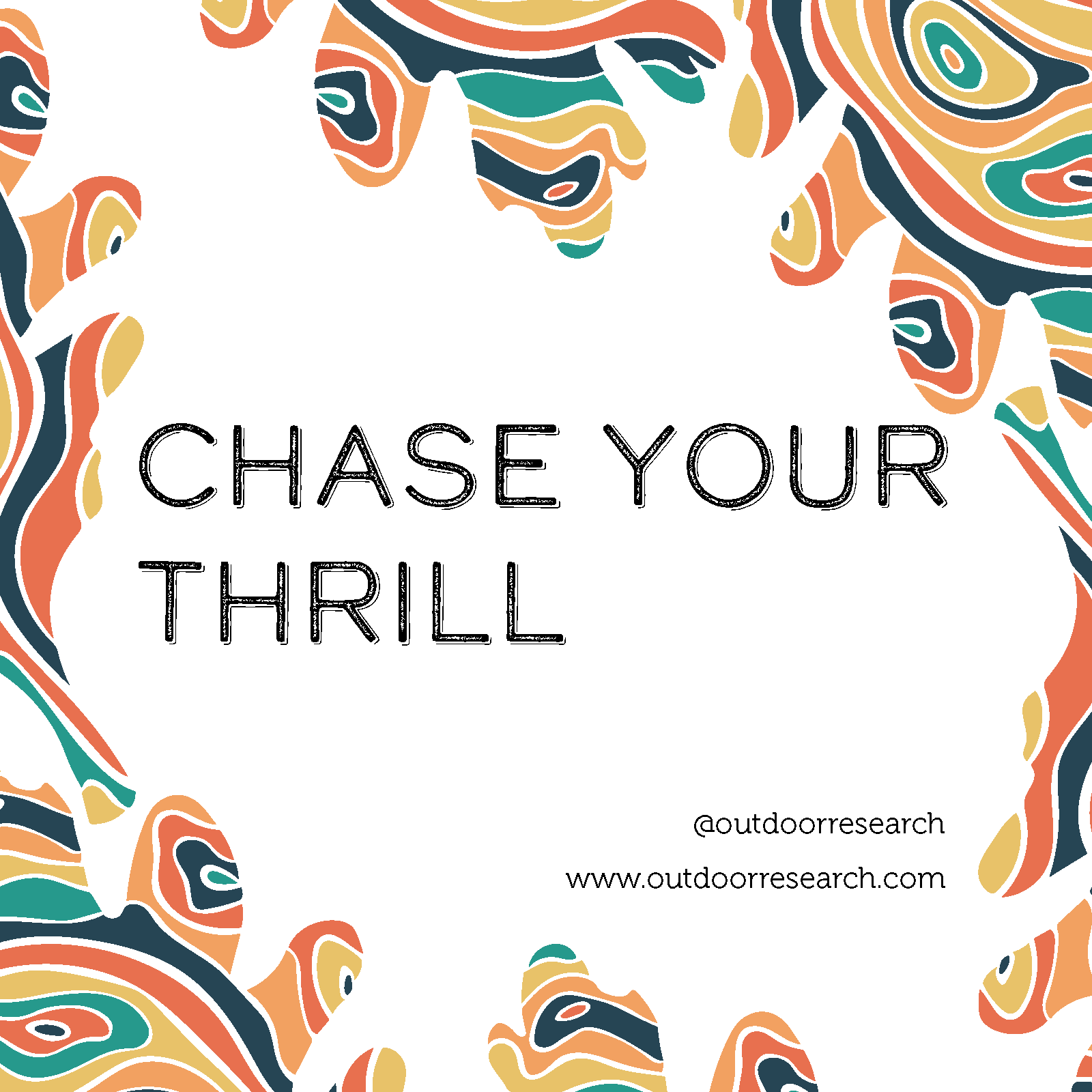
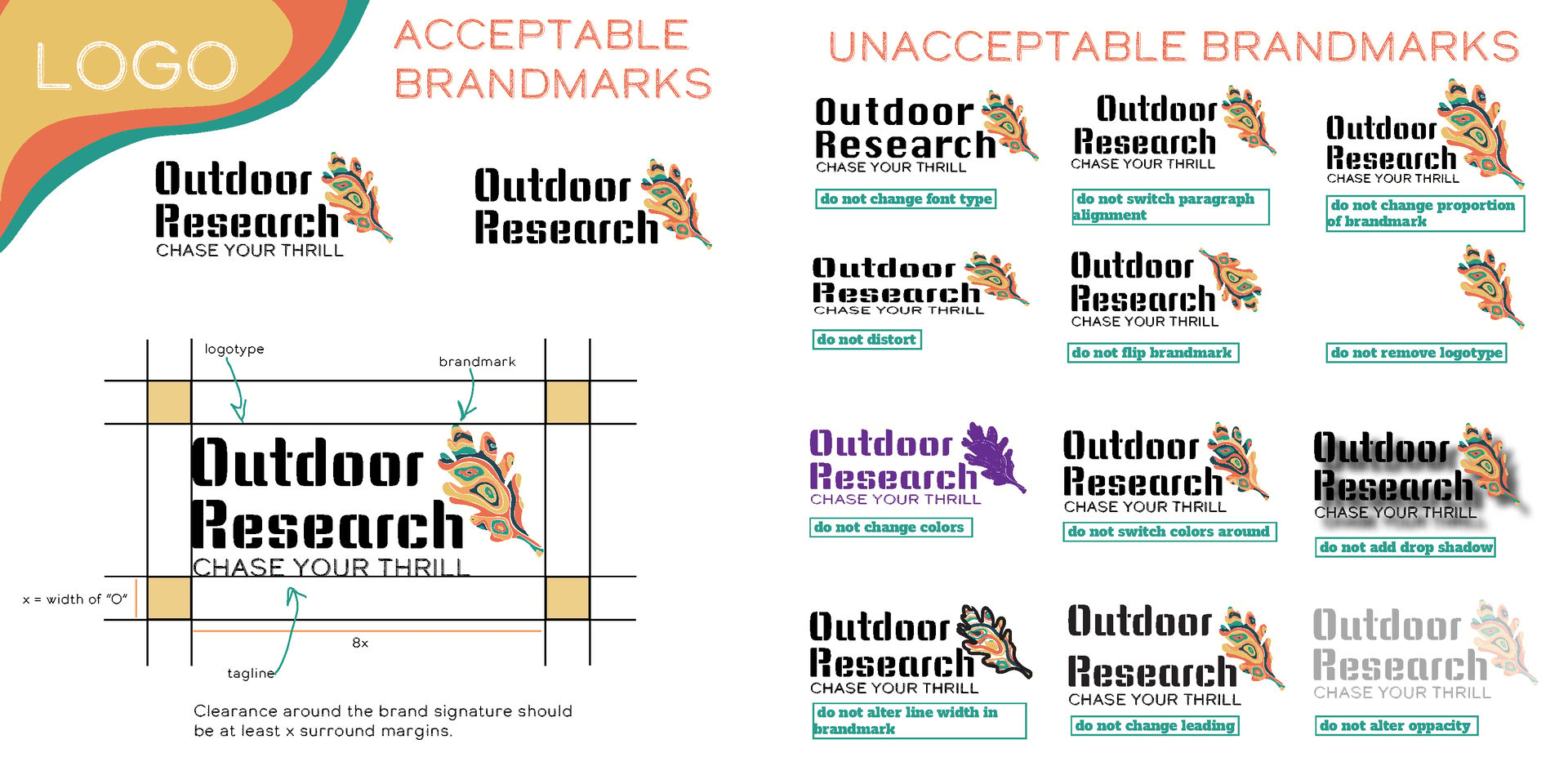
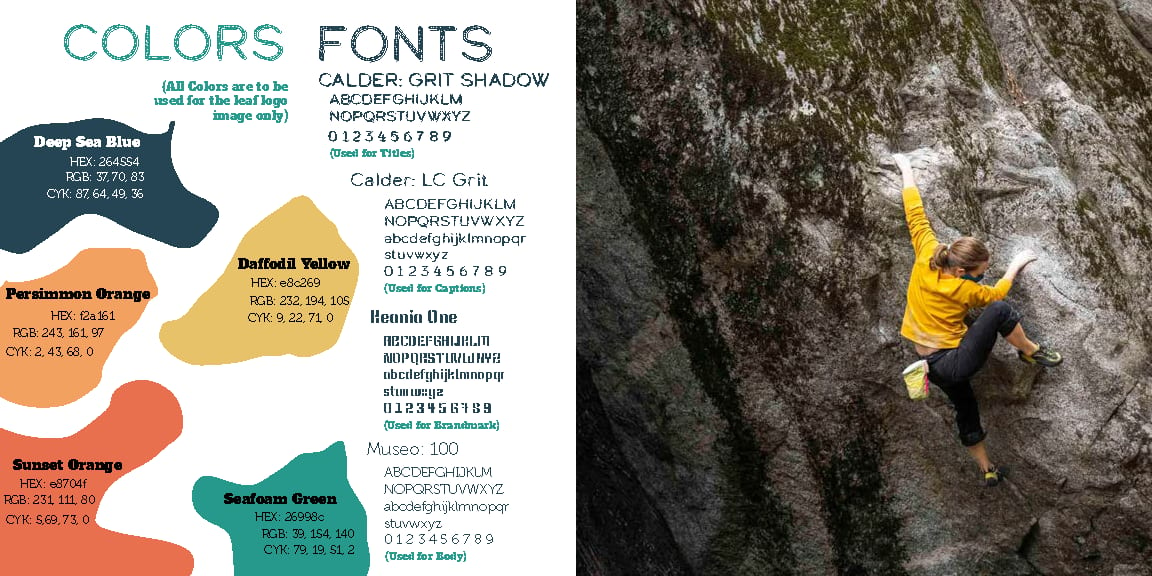
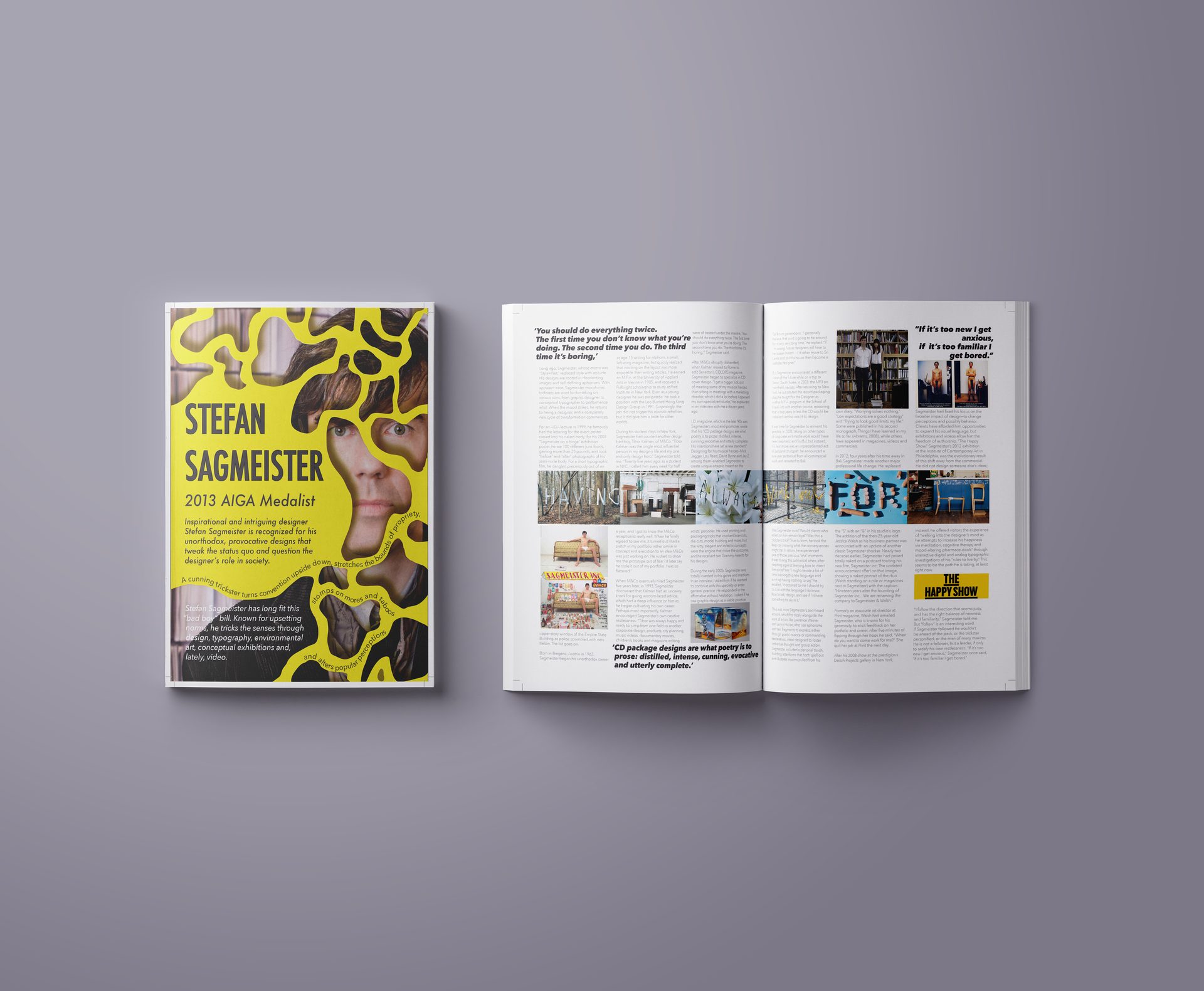
TRADITIONAL 2D
